 |
||||||
|
HOME
|
US Navy -
ships
|
US Navy - air
units
|
USMC - air
units
|
International
Navies
|
Weapon Systems
|
Special Reports |
||||||
|
US Navy - Strike Fighter Squadron 192
(STRKFITRON 192) VFA-192 'Golden Dragons' |
||||||
|
||||||
| 08/25 | ||||||
|
||||||
| images | ||||||
|
VFA-192 returned to NAS Lemoore, California after a 9-month deployment aboard USS Carl Vinson (CVN 70) on August 12, 2025  F/A-18E Super Hornet (VFA-192 / CVW-2) embarked on USS Carl Vinson (CVN 70) - August 2025  F/A-18E Super Hornet (VFA-192 / CVW-2) embarked on USS Carl Vinson (CVN 70) - July 2025  F/A-18E Super Hornet (VFA-192 / CVW-2) embarked on USS Carl Vinson (CVN 70) - July 2025  F/A-18E Super Hornet (VFA-192 / CVW-2) embarked on USS Carl Vinson (CVN 70) - June 2025  F/A-18E Super Hornet (VFA-192 / CVW-2) embarked on USS Carl Vinson (CVN 70) - June 2025  F/A-18E Super Hornet (VFA-192 / CVW-2) embarked on USS Carl Vinson (CVN 70) - May 2025  F/A-18E Super Hornet (VFA-192 / CVW-2) embarked on USS Carl Vinson (CVN 70) - May 2025  F/A-18E Super Hornet (VFA-192 / CVW-2) embarked on USS Carl Vinson (CVN 70) - May 2025  F/A-18E Super Hornet (VFA-192 / CVW-2) embarked on USS Carl Vinson (CVN 70) - May 2025  F/A-18E Super Hornet (VFA-192 / CVW-2) embarked on USS Carl Vinson (CVN 70) - May 2025  F/A-18E Super Hornet (VFA-192 / CVW-2) embarked on USS Carl Vinson (CVN 70) - May 2025  F/A-18E Super Hornet (VFA-192 / CVW-2) embarked on USS Carl Vinson (CVN 70) - May 2025  F/A-18E Super Hornet (VFA-192 / CVW-2) embarked on USS Carl Vinson (CVN 70) - May 2025  F/A-18E Super Hornet (VFA-192 / CVW-2) embarked on USS Carl Vinson (CVN 70) loaded with AGM-84K SLAM-ER missiles - April 2025  F/A-18E Super Hornet (VFA-192 / CVW-2) embarked on USS Carl Vinson (CVN 70) - April 2025  F/A-18E Super Hornet (VFA-192 / CVW-2) embarked on USS Carl Vinson (CVN 70) - April 2025  F/A-18E Super Hornet (VFA-192 / CVW-2) embarked on USS Carl Vinson (CVN 70) - April 2025  F/A-18E Super Hornet (VFA-192 / CVW-2) embarked on USS Carl Vinson (CVN 70) - April 2025  F/A-18E Super Hornet (VFA-192 / CVW-2) embarked on USS Carl Vinson (CVN 70) - March 2025  F/A-18E Super Hornet (VFA-192 / CVW-2) embarked on USS Carl Vinson (CVN 70) - March 2025  F/A-18E Super Hornet (VFA-192 / CVW-2) embarked on USS Carl Vinson (CVN 70) - February 2025  F/A-18E Super Hornet (VFA-192 / CVW-2) embarked on USS Carl Vinson (CVN 70) - February 2025  F/A-18E Super Hornet (VFA-192 / CVW-2) embarked on USS Carl Vinson (CVN 70) - February 2025  F/A-18E Super Hornet (VFA-192 / CVW-2) embarked on USS Carl Vinson (CVN 70) - February 2025  F/A-18E Super Hornet (VFA-192 / CVW-2) embarked on USS Carl Vinson (CVN 70) - January 2025  F/A-18E Super Hornet (VFA-192 / CVW-2) embarked on USS Carl Vinson (CVN 70) - January 2025  F/A-18E Super Hornet (VFA-192 / CVW-2) embarked on USS Carl Vinson (CVN 70) - December 2024  F/A-18E Super Hornet (VFA-192 / CVW-2) embarked on USS Carl Vinson (CVN 70) - December 2024  F/A-18E Super Hornet (VFA-192 / CVW-2) embarked on USS Carl Vinson (CVN 70) - December 2024  F/A-18E Super Hornet (VFA-192 / CVW-2) embarked on USS Carl Vinson (CVN 70) - August 2024  F/A-18E Super Hornet (VFA-192 / CVW-2) embarked on USS Carl Vinson (CVN 70) - August 2024  F/A-18E Super Hornet (VFA-192 / CVW-2) embarked on USS Carl Vinson (CVN 70) - August 2024  F/A-18E Super Hornet (VFA-192 / CVW-2) embarked on USS Carl Vinson (CVN 70) - Exercise RIMPAC 24 - July 2024  F/A-18E Super Hornet (VFA-192 / CVW-2) embarked on USS Carl Vinson (CVN 70) - Exercise RIMPAC 24 - July 2024  F/A-18E Super Hornet (VFA-192 / CVW-2) embarked on USS Carl Vinson (CVN 70) - June 2024  F/A-18E Super Hornet (VFA-192 / CVW-2) embarked on USS Carl Vinson (CVN 70) - June 2024  F/A-18E Super Hornet (VFA-192 / CVW-2) embarked on USS Carl Vinson (CVN 70) - January 2024  F/A-18E Super Hornet (VFA-192 / CVW-2) embarked on USS Carl Vinson (CVN 70) - December 2023  F/A-18E Super Hornet (VFA-192 / CVW-2) embarked on USS Carl Vinson (CVN 70) - December 2023  F/A-18E Super Hornet (VFA-192 / CVW-2) embarked on USS Carl Vinson (CVN 70) - December 2023  F/A-18E Super Hornet (VFA-192 / CVW-2) embarked on USS Carl Vinson (CVN 70) - July 2023  F/A-18E Super Hornet (VFA-192 / CVW-2) embarked on USS Carl Vinson (CVN 70) - March 2023  F/A-18E Super Hornet (VFA-192 / CVW-2) embarked on USS Carl Vinson (CVN 70) - March 2023  F/A-18E Super Hornet (VFA-192 / CVW-2) embarked on USS Carl Vinson (CVN 70) - March 2023  F/A-18E Super Hornet (VFA-192 / CVW-2) embarked on USS Carl Vinson (CVN 70) - March 2023  F/A-18E Super Hornet (VFA-192 / CVW-2) embarked on USS Carl Vinson (CVN 70) - March 2023  F/A-18E Super Hornet (VFA-192 / CVW-2) embarked on USS Carl Vinson (CVN 70) - December 2022  F/A-18E Super Hornet (VFA-192 / CVW-2) embarked on USS Carl Vinson (CVN 70) - December 2022  F/A-18E Super Hornet (VFA-192 / CVW-2) embarked on USS Carl Vinson (CVN 70) - December 2022  F/A-18E Super Hornet (VFA-192 / CVW-2) embarked on USS Carl Vinson (CVN 70) - December 2022  F/A-18E Super Hornet (VFA-192 / CVW-2) at Portland ANGB, Oregon - July 2022  F/A-18E Super Hornet (VFA-192 / CVW-2) at Portland ANGB, Oregon - July 2022  F/A-18E Super Hornet (VFA-192 / CVW-2) embarked on USS Carl Vinson (CVN 70) - February 2022  F/A-18E Super Hornet (VFA-192 / CVW-2) embarked on USS Carl Vinson (CVN 70) - February 2022  F/A-18E Super Hornet (VFA-192 / CVW-2) embarked on USS Carl Vinson (CVN 70) - February 2022  F/A-18E Super Hornet (VFA-192 / CVW-2) embarked on USS Carl Vinson (CVN 70) - February 2022  F/A-18E Super Hornet (VFA-192 / CVW-2) embarked on USS Carl Vinson (CVN 70) - January 2022  F/A-18E Super Hornet (VFA-192 / CVW-2) embarked on USS Carl Vinson (CVN 70) - January 2022  F/A-18E Super Hornet (VFA-192 / CVW-2) embarked on USS Carl Vinson (CVN 70) - January 2022  F/A-18E Super Hornet (VFA-192 / CVW-2) embarked on USS Carl Vinson (CVN 70) - January 2022  F/A-18E Super Hornet (VFA-192 / CVW-2) embarked on USS Carl Vinson (CVN 70) - January 2022  F/A-18E Super Hornet (VFA-192 / CVW-2) embarked on USS Carl Vinson (CVN 70) - January 2022  F/A-18E Super Hornet (VFA-192 / CVW-2) embarked on USS Carl Vinson (CVN 70) - January 2022  F/A-18E Super Hornet (VFA-192 / CVW-2) embarked on USS Carl Vinson (CVN 70) - January 2022  F/A-18E Super Hornet (VFA-192 / CVW-2) embarked on USS Carl Vinson (CVN 70) - December 2021  F/A-18E Super Hornet (VFA-192 / CVW-2) embarked on USS Carl Vinson (CVN 70) - December 2021  F/A-18E Super Hornet (VFA-192 / CVW-2) embarked on USS Carl Vinson (CVN 70) - December 2021  F/A-18E Super Hornet (VFA-192 / CVW-2) embarked on USS Carl Vinson (CVN 70) - December 2021  F/A-18E Super Hornet (VFA-192 / CVW-2) embarked on USS Carl Vinson (CVN 70) - December 2021  F/A-18E Super Hornet (VFA-192 / CVW-2) embarked on USS Carl Vinson (CVN 70) - November 2021  F/A-18E Super Hornet (VFA-192 / CVW-2) embarked on USS Carl Vinson (CVN 70) - November 2021  F/A-18E Super Hornet (VFA-192 / CVW-2) embarked on USS Carl Vinson (CVN 70) - November 2021  F/A-18E Super Hornet (VFA-192 / CVW-2) embarked on USS Carl Vinson (CVN 70) - November 2021  F/A-18E Super Hornet (VFA-192 / CVW-2) embarked on USS Carl Vinson (CVN 70) - November 2021  F/A-18E Super Hornet (VFA-192 / CVW-2) embarked on USS Carl Vinson (CVN 70) - October 2021  F/A-18E Super Hornet (VFA-192 / CVW-2) embarked on USS Carl Vinson (CVN 70) - October 2021  F/A-18E Super Hornet (VFA-192 / CVW-2) embarked on USS Carl Vinson (CVN 70) - October 2021  F/A-18E Super Hornet (VFA-192 / CVW-2) embarked on USS Carl Vinson (CVN 70) - September 2021  F/A-18E Super Hornet (VFA-192 / CVW-2) embarked on USS Carl Vinson (CVN 70) - September 2021  F/A-18E Super Hornet (VFA-192 / CVW-2) embarked on USS Carl Vinson (CVN 70) - September 2021  F/A-18E Super Hornet (VFA-192 / CVW-2) embarked on USS Carl Vinson (CVN 70) - September 2021  F/A-18E Super Hornet (VFA-192 / CVW-2) embarked on USS Carl Vinson (CVN 70) - September 2021  F/A-18E Super Hornet (VFA-192 / CVW-2) embarked on USS Carl Vinson (CVN 70) - September 2021  F/A-18E Super Hornet (VFA-192 / CVW-2) embarked on USS Carl Vinson (CVN 70) - August 2021  F/A-18E Super Hornet (VFA-192 / CVW-2) embarked on USS Carl Vinson (CVN 70) refueling USMC F-35B Lightning II's - August 2021  F/A-18E Super Hornet (VFA-192 / CVW-2) embarked on USS Carl Vinson (CVN 70) - July 2021  F/A-18E Super Hornet (VFA-192 / CVW-2) embarked on USS Carl Vinson (CVN 70) - June 2021  F/A-18E Super Hornet (VFA-192 / CVW-2) embarked on USS Carl Vinson (CVN 70) - June 2021  F/A-18E Super Hornet (VFA-192 / CVW-2) embarked on USS Carl Vinson (CVN 70) - June 2021  F/A-18E Super Hornet (VFA-192 / CVW-2) embarked on USS Carl Vinson (CVN 70) - June 2021  F/A-18E Super Hornet (VFA-192 / CVW-2) embarked on USS Carl Vinson (CVN 70) - September 2020  F/A-18E Super Hornet (VFA-192 / CVW-2) at Joint Base Elmendorf-Richardson, Alaska - June 2019  F/A-18E Super Hornet (VFA-192 / CVW-2) at Joint Base Elmendorf-Richardson, Alaska - June 2019  F/A-18E Super Hornet (VFA-192 / CVW-2) embarked on USS Carl Vinson (CVN 70) - Exercise RIMPAC 18 - July 2018  F/A-18E Super Hornet (VFA-192 / CVW-2) embarked on USS Carl Vinson (CVN 70) - Exercise RIMPAC 18 - July 2018 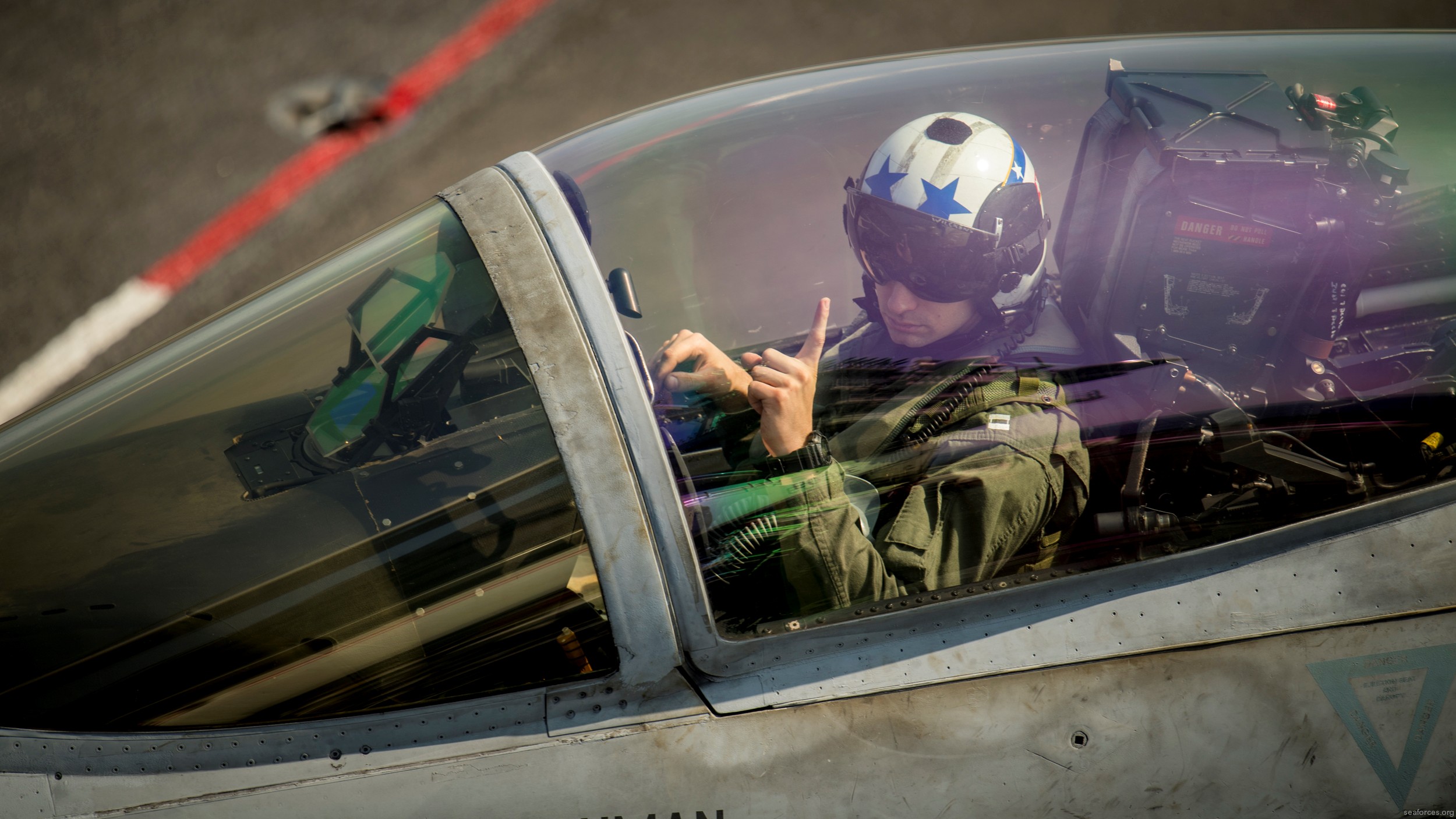 F/A-18E Super Hornet (VFA-192 / CVW-2) embarked on USS Carl Vinson (CVN 70) - February 2018 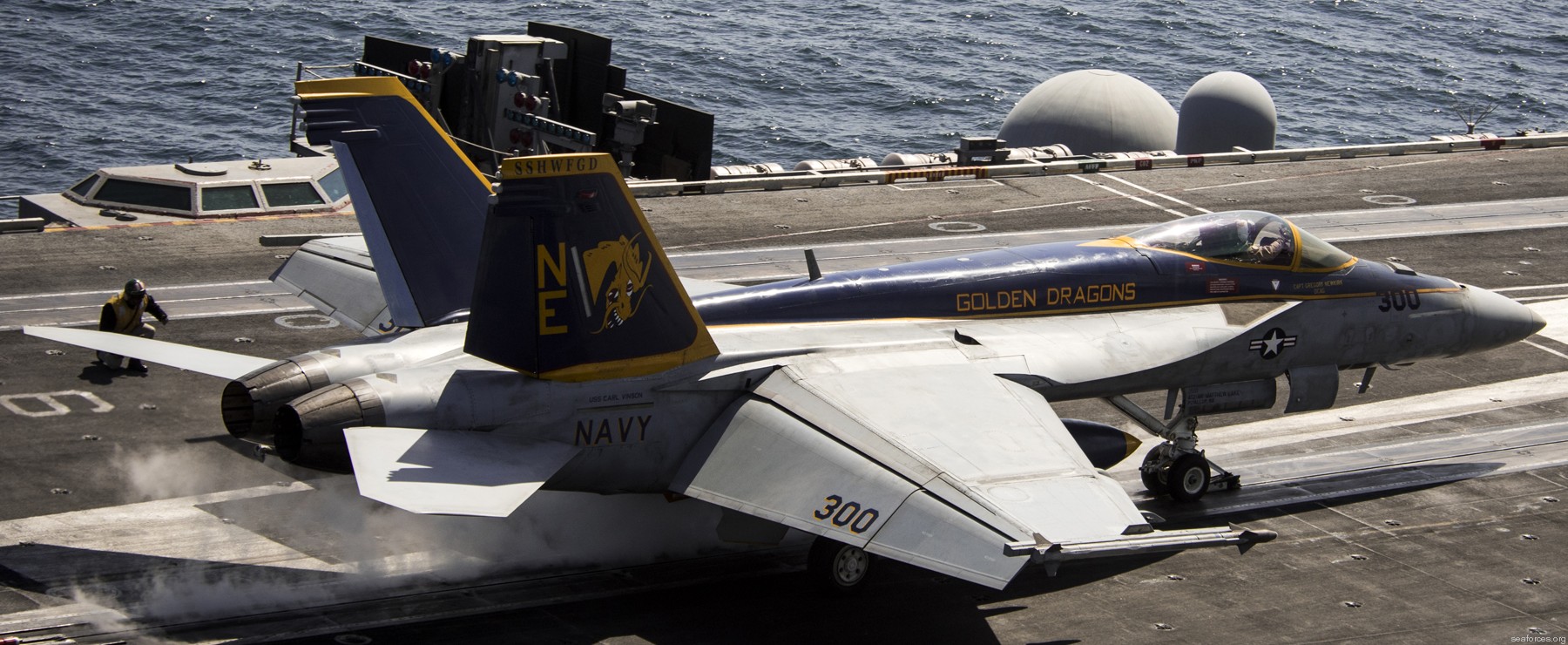 F/A-18E Super Hornet (VFA-192 / CVW-2) embarked on USS Carl Vinson (CVN 70) - May 2017 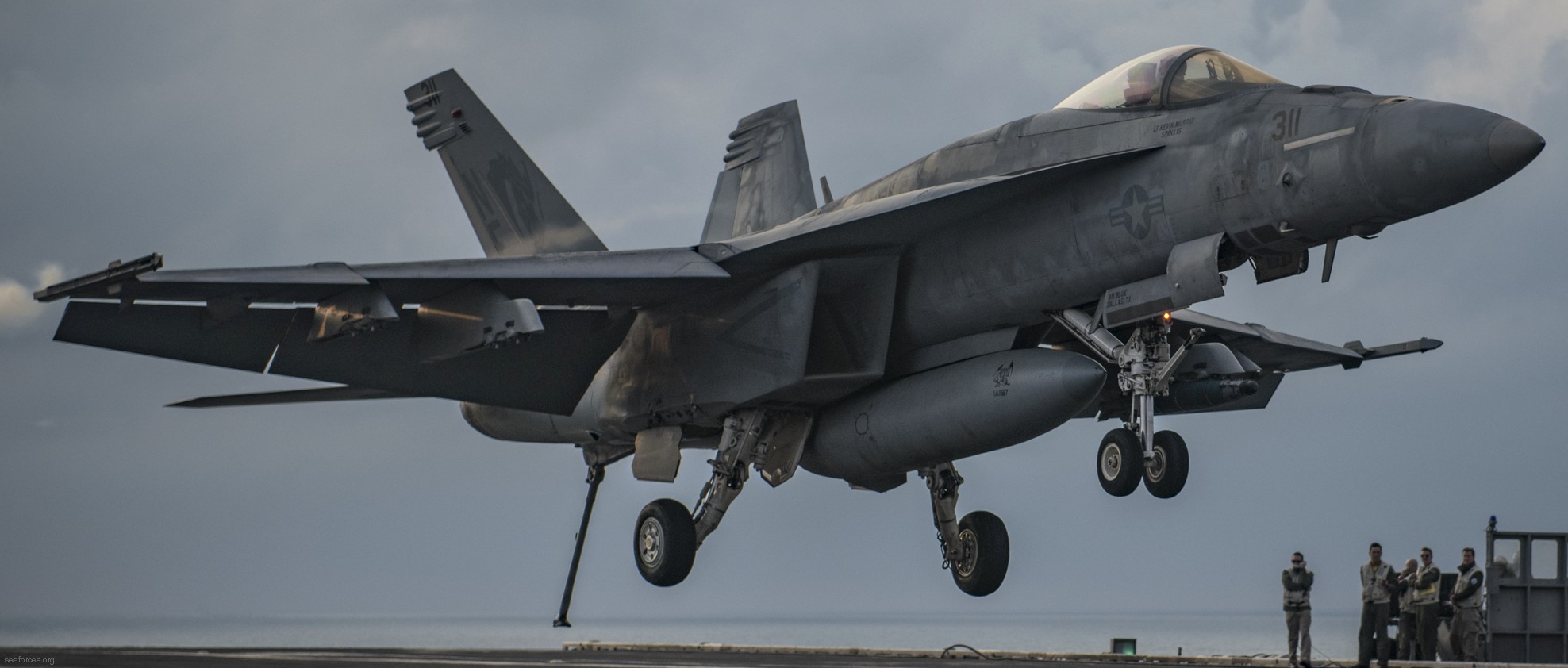 F/A-18E Super Hornet (VFA-192 / CVW-2) embarked on USS Carl Vinson (CVN 70) - May 2017 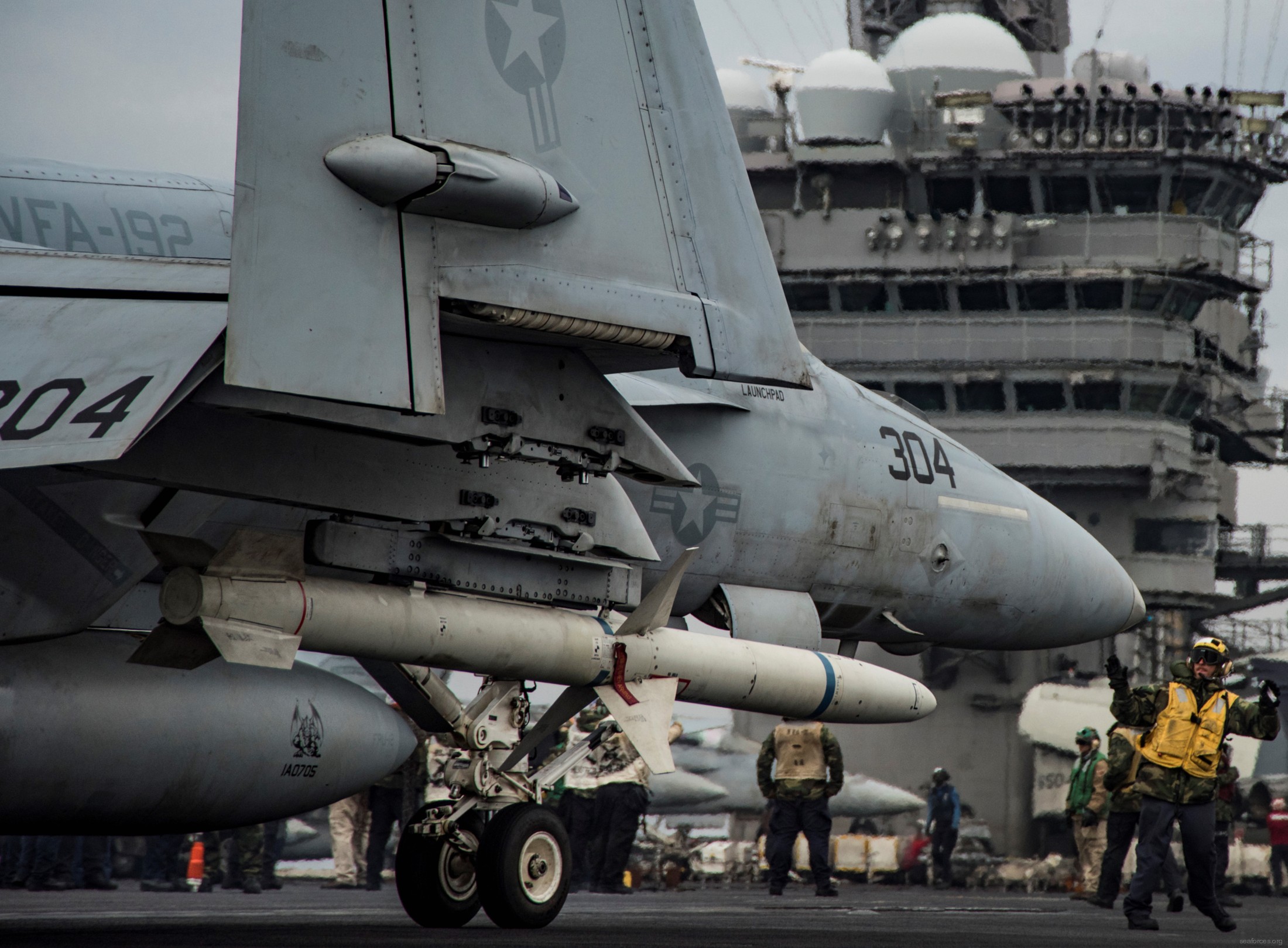 F/A-18E Super Hornet (VFA-192 / CVW-2) embarked on USS Carl Vinson (CVN 70) with an AGM-88 HARM Missile loaded - May 2017 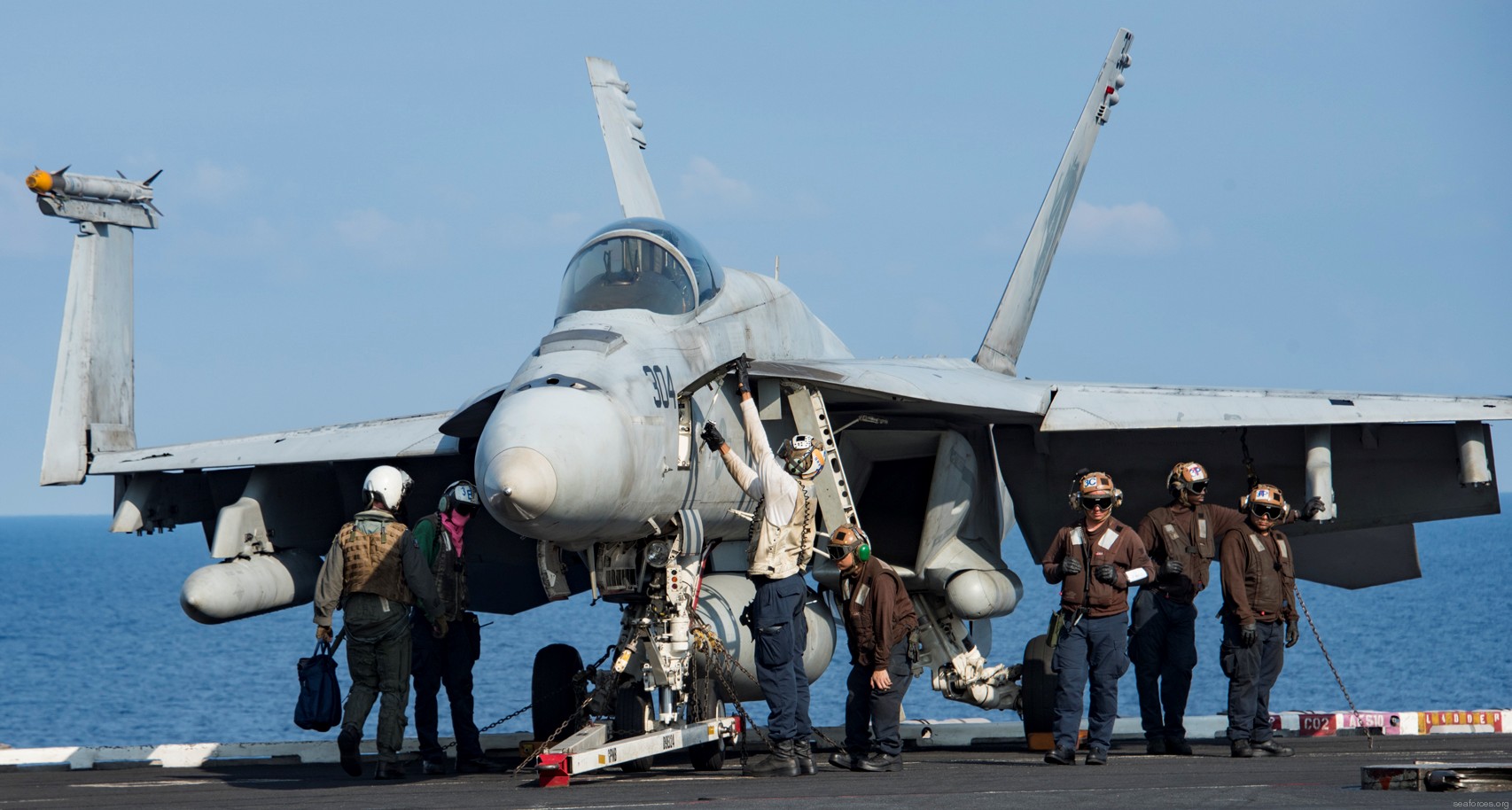 F/A-18E Super Hornet (VFA-192 / CVW-2) embarked on USS Carl Vinson (CVN 70) - April 2017 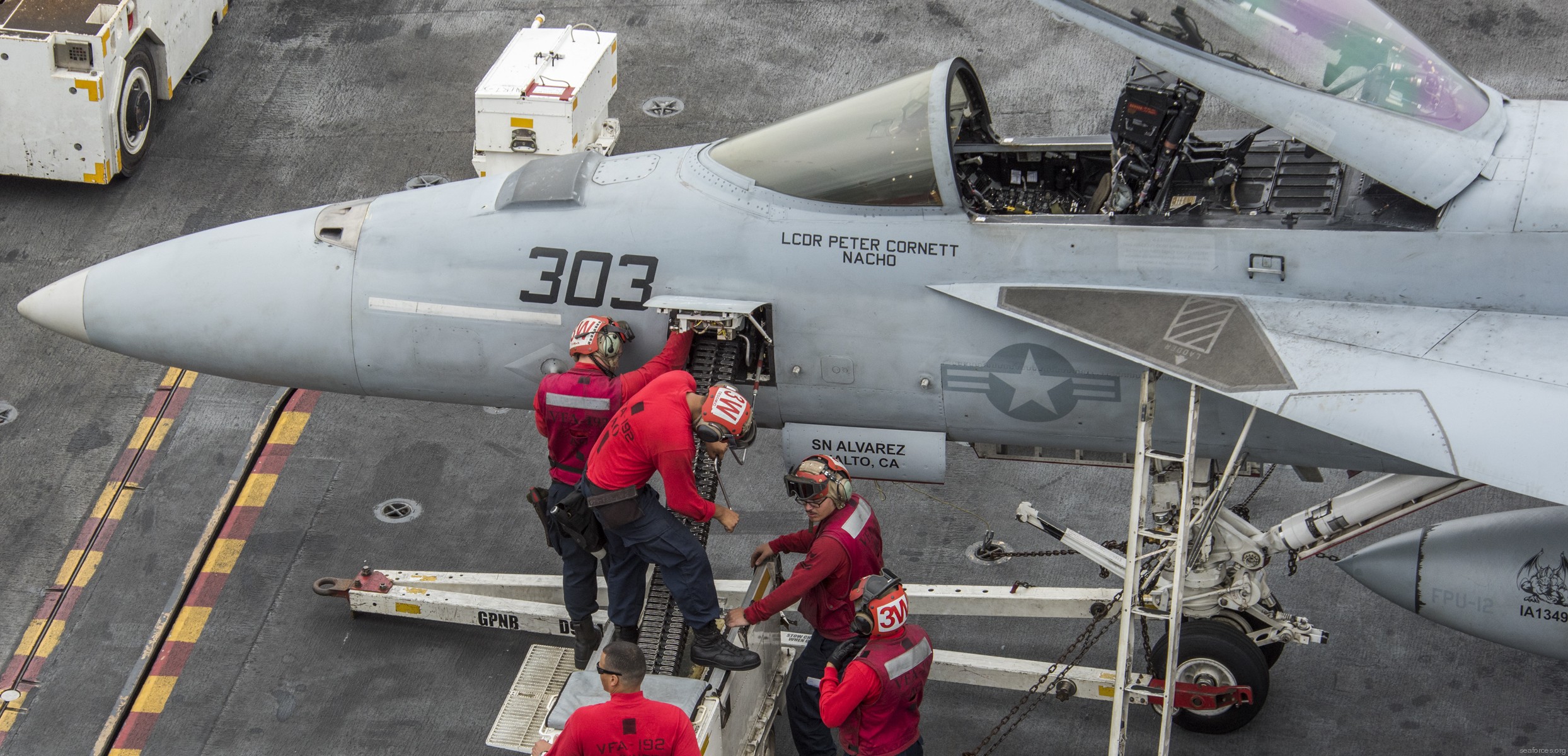 F/A-18E Super Hornet (VFA-192 / CVW-2) embarked on USS Carl Vinson (CVN 70) - February 2017  F/A-18E Super Hornet (VFA-192 / CVW-2) embarked on USS Carl Vinson (CVN 70) - February 2017 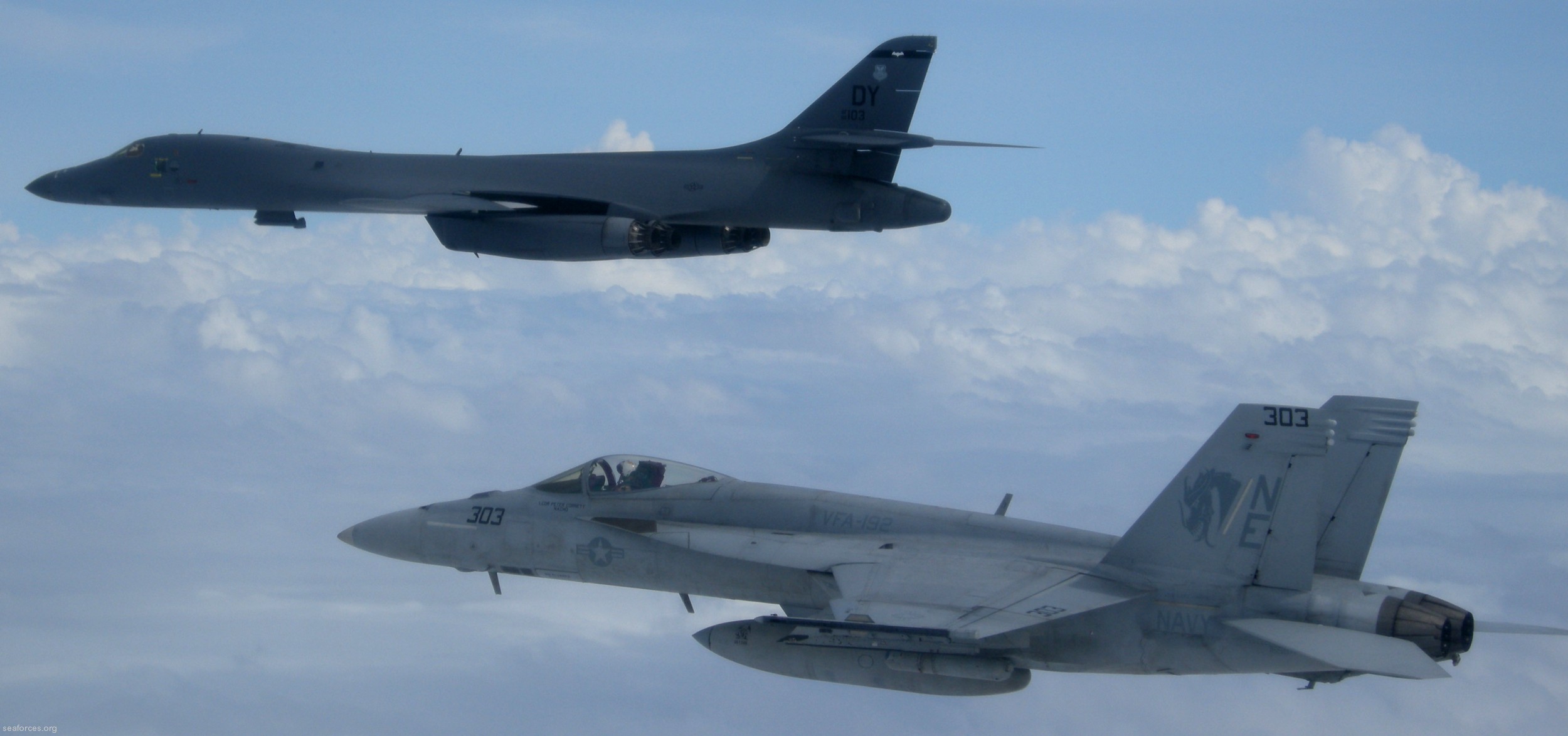 F/A-18E Super Hornet (VFA-192 / CVW-2) embarked on USS Carl Vinson (CVN 70) with an USAF B-1B Lancer Bomber - February 2017 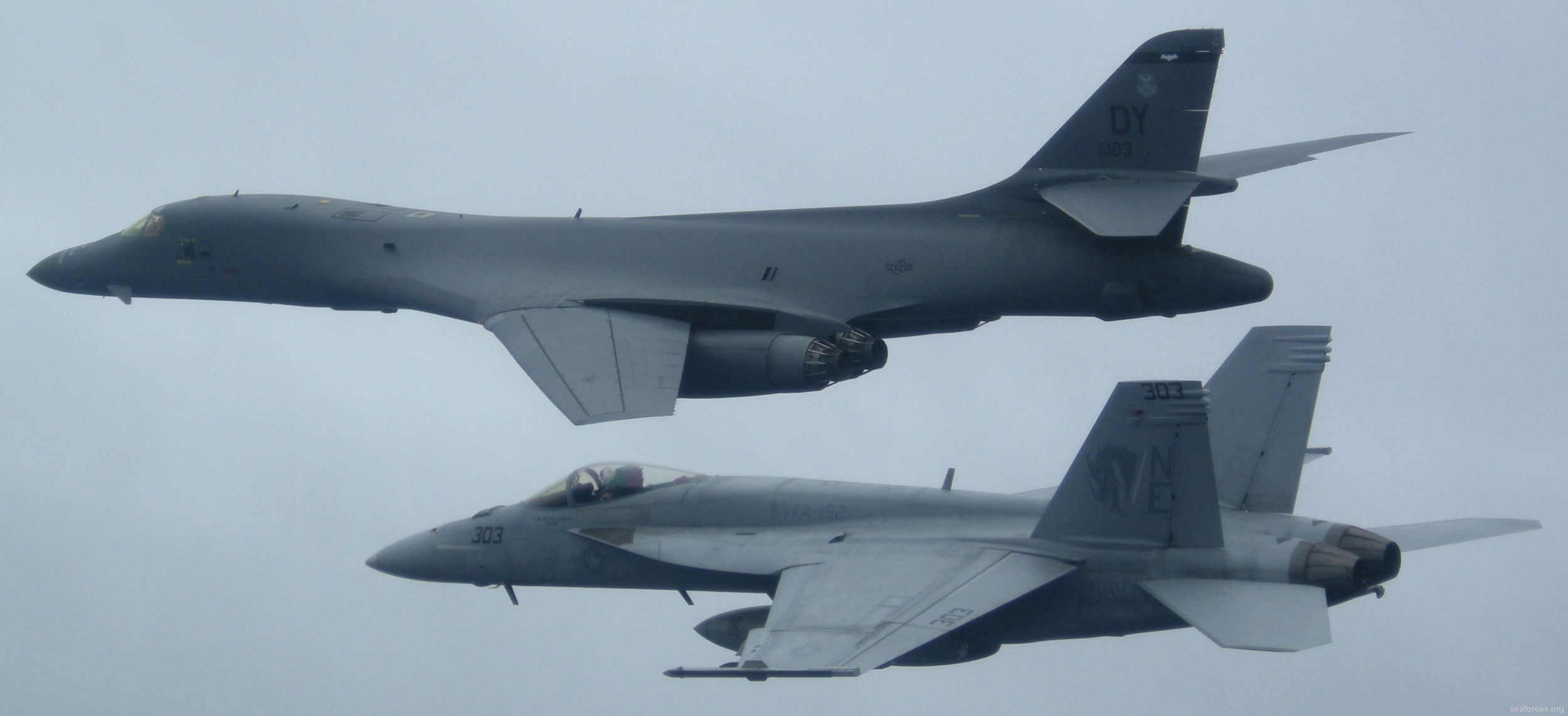 F/A-18E Super Hornet (VFA-192 / CVW-2) embarked on USS Carl Vinson (CVN 70) with an USAF B-1B Lancer Bomber - February 2017 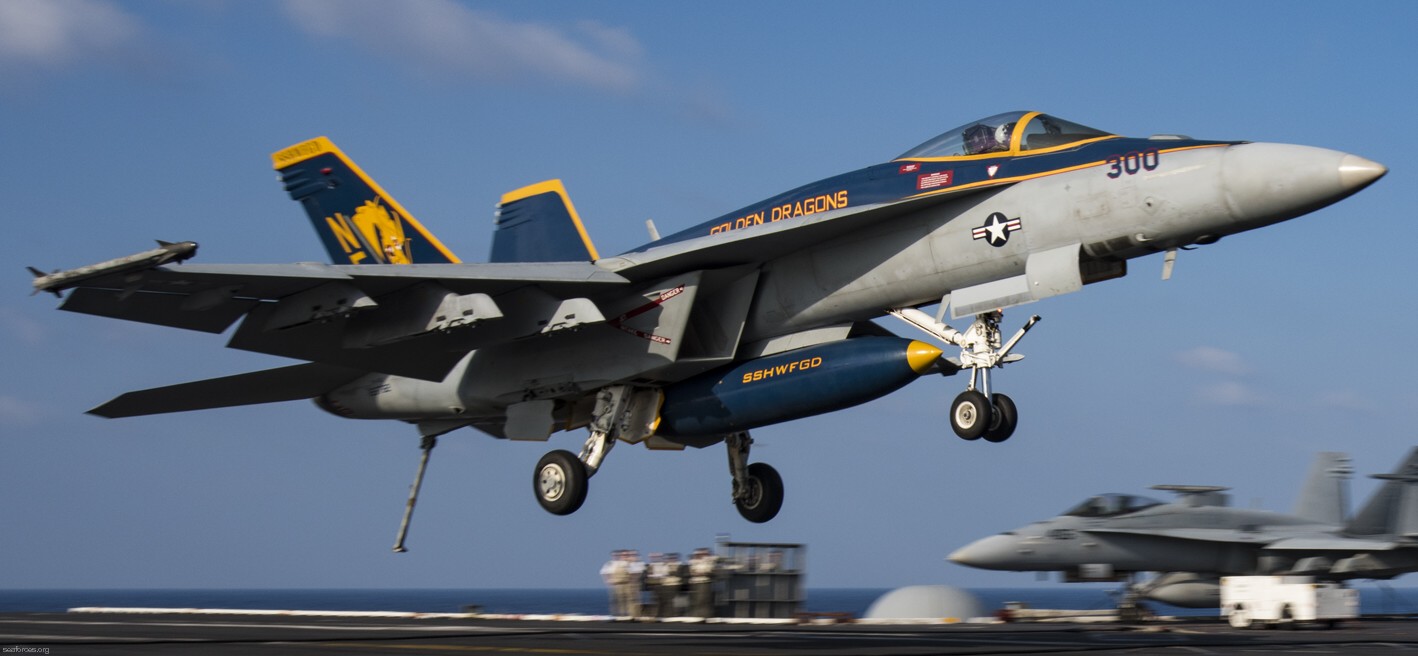 F/A-18E Super Hornet (VFA-192 / CVW-2) embarked on USS Carl Vinson (CVN 70) - January 2017 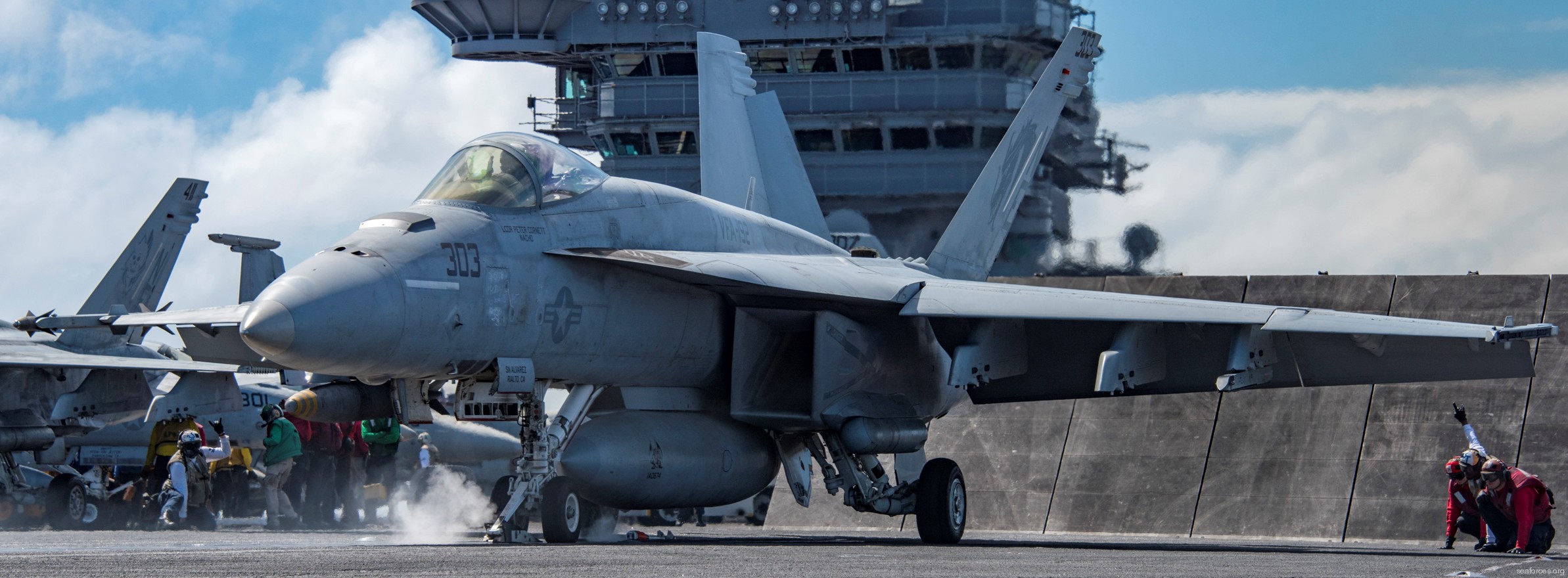 F/A-18E Super Hornet (VFA-192 / CVW-2) embarked on USS Carl Vinson (CVN 70) - January 2017 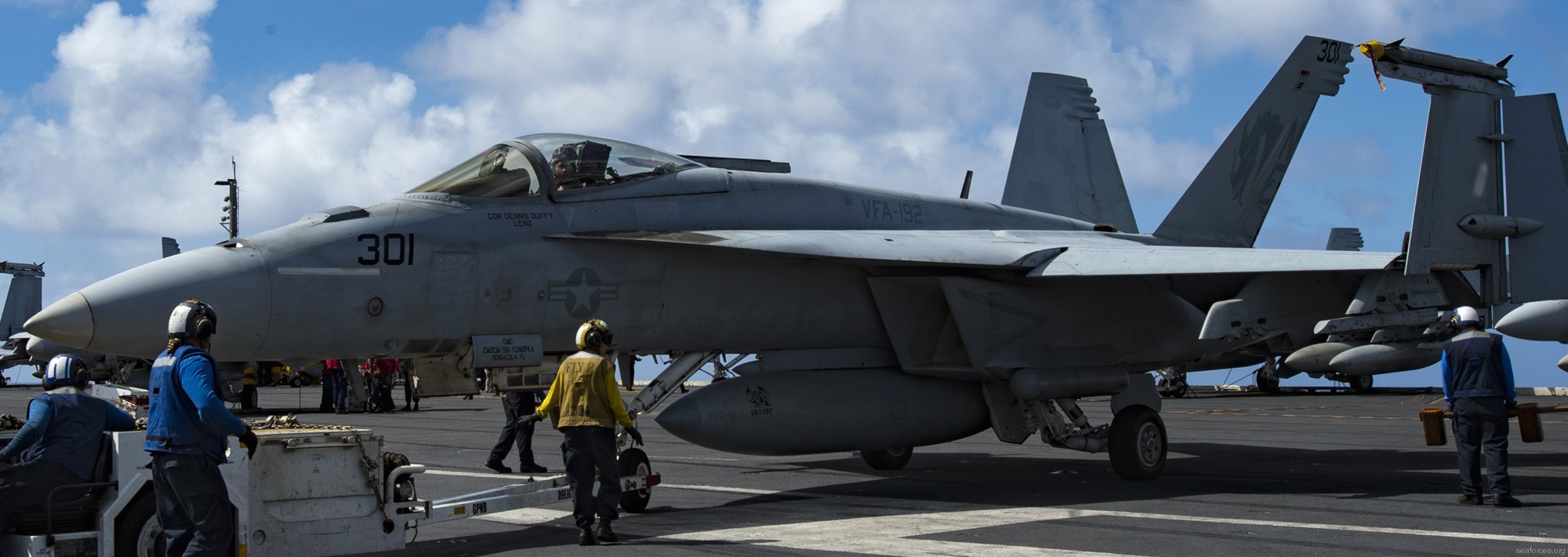 F/A-18E Super Hornet (VFA-192 / CVW-2) embarked on USS Carl Vinson (CVN 70) - January 2017 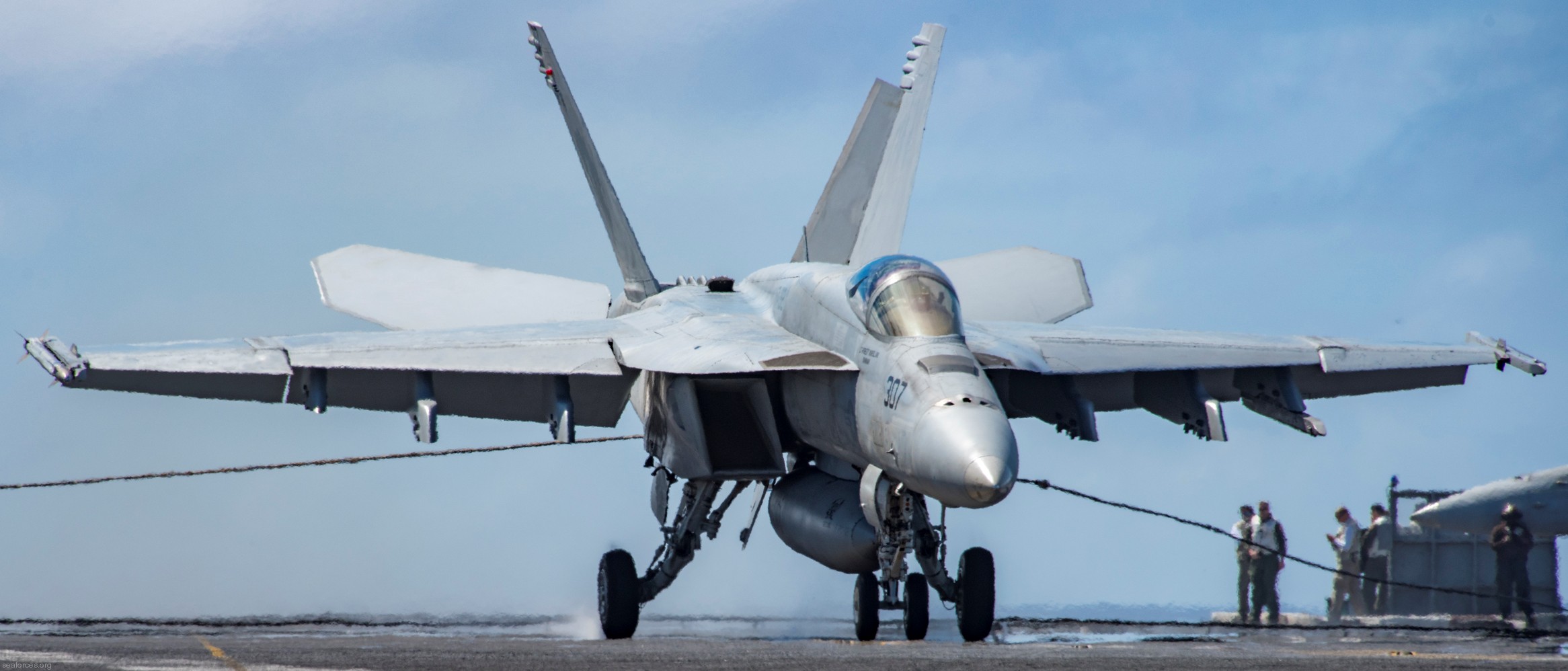 F/A-18E Super Hornet (VFA-192 / CVW-2) embarked on USS Carl Vinson (CVN 70) - January 2017 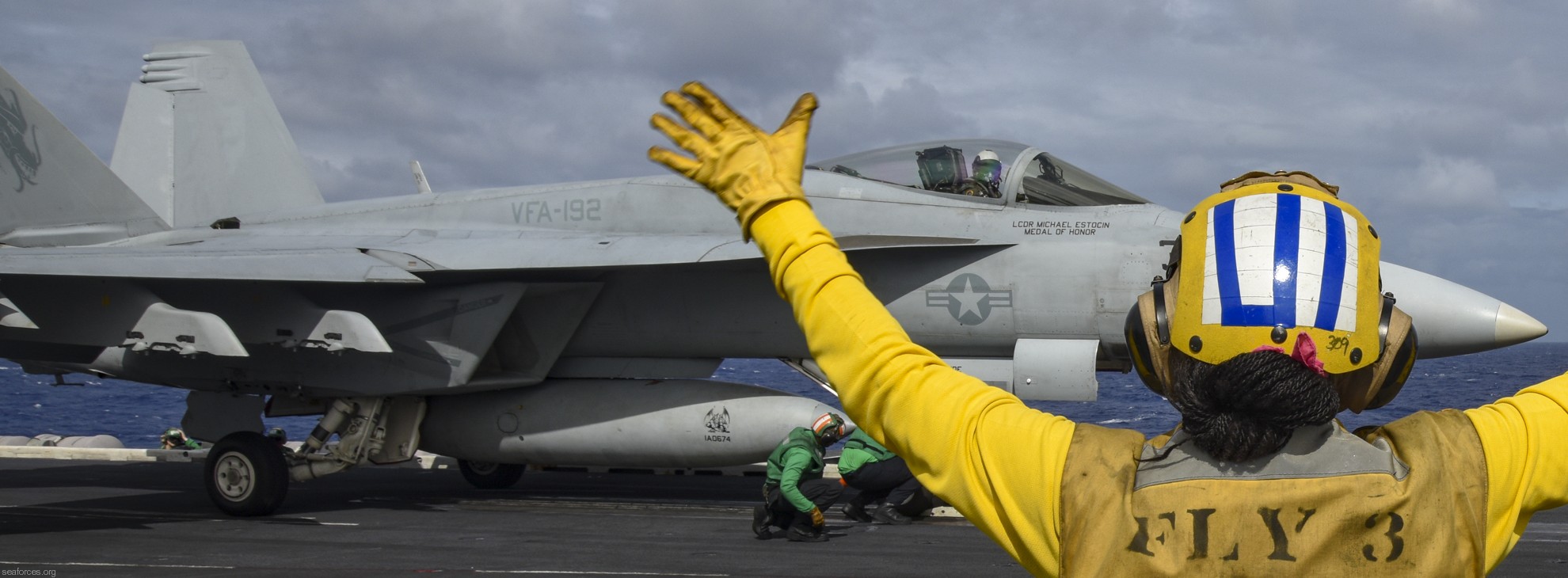 F/A-18E Super Hornet (VFA-192 / CVW-2) embarked on USS Carl Vinson (CVN 70) - January 2017 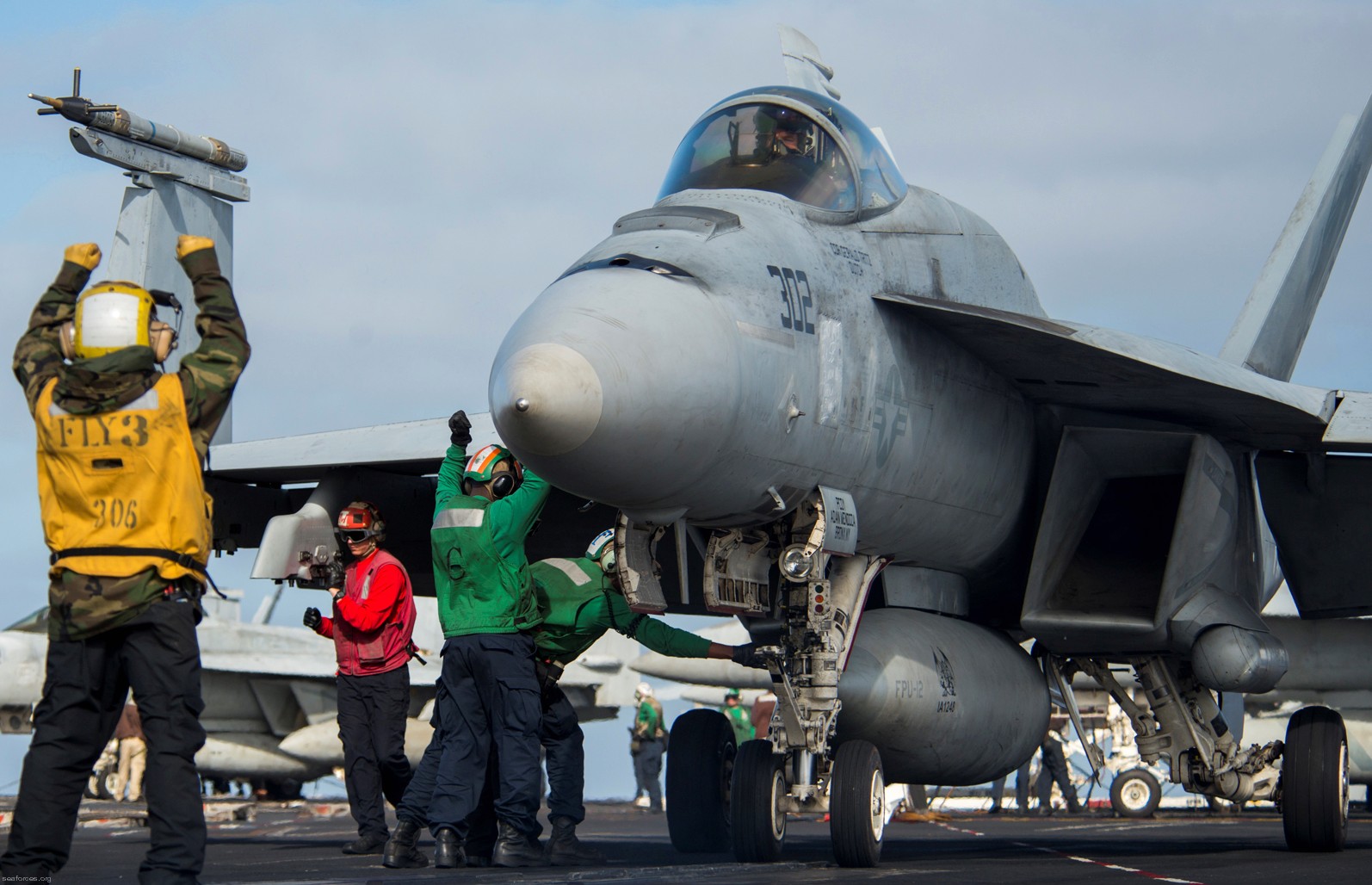 F/A-18E Super Hornet (VFA-192 / CVW-2) embarked on USS Carl Vinson (CVN 70) - November 2016 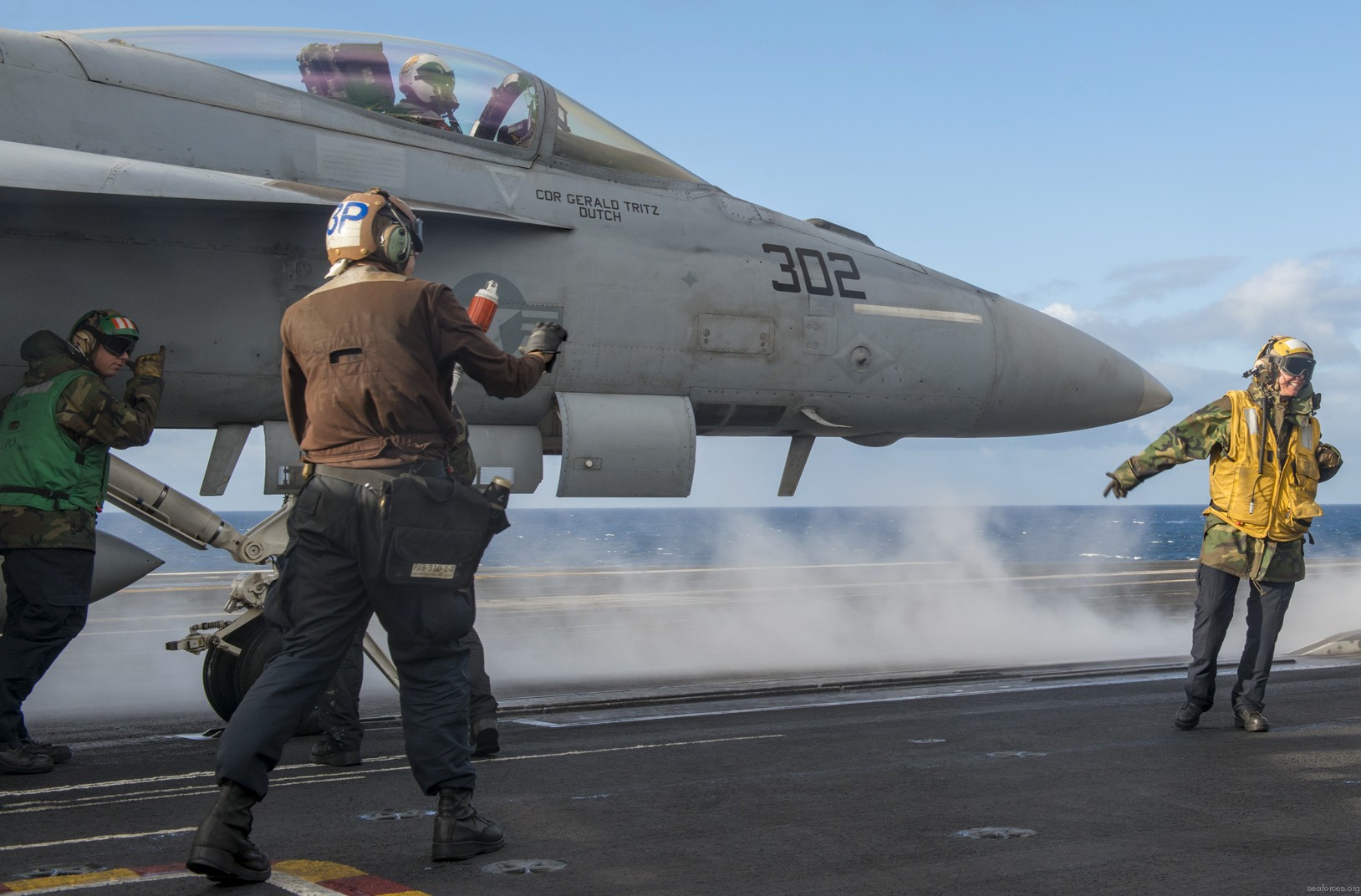 F/A-18E Super Hornet (VFA-192 / CVW-2) embarked on USS Carl Vinson (CVN 70) - November 2016 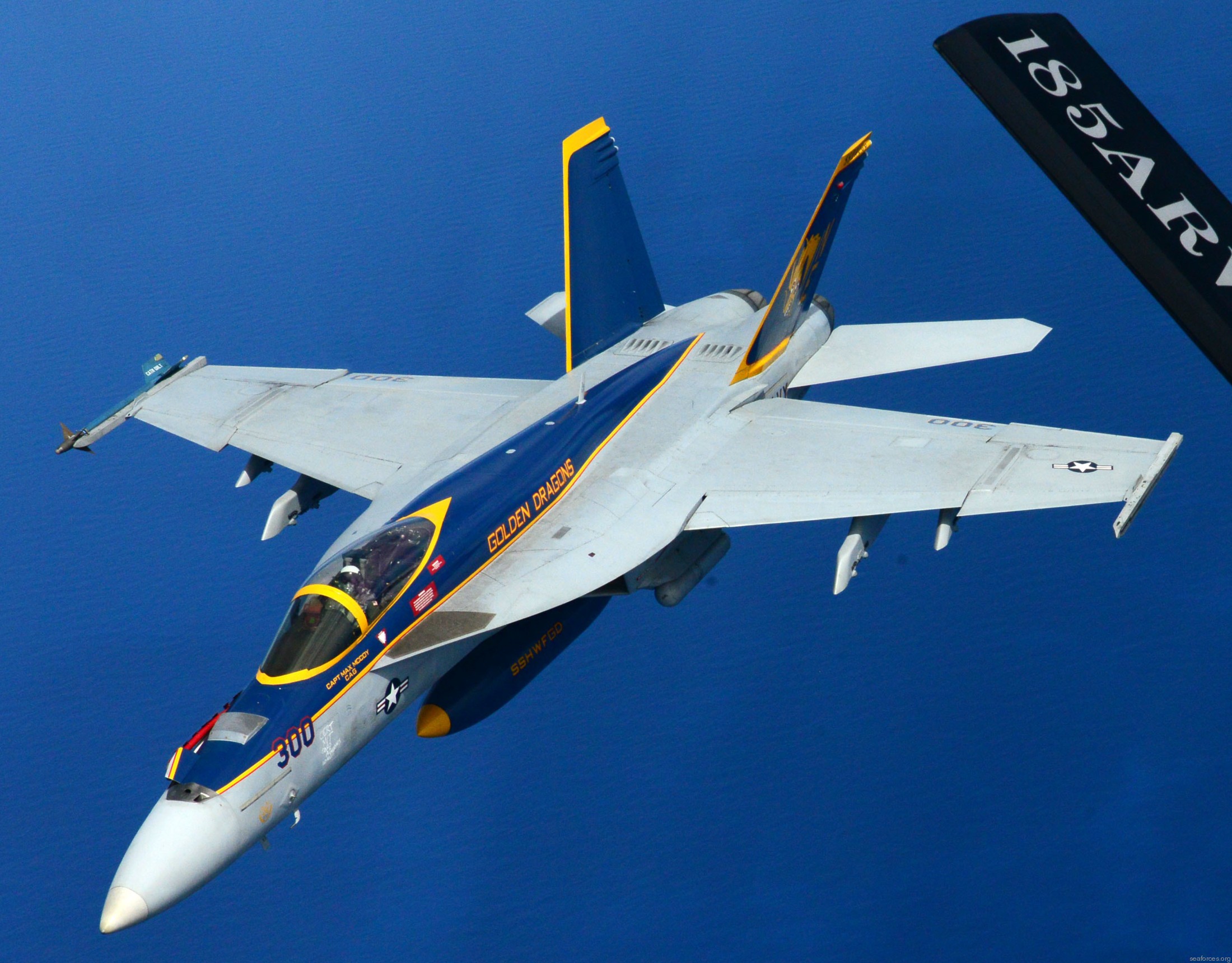 F/A-18E Super Hornet (VFA-192 / CVW-2) embarked on USS George Washington (CVN 73) during exercise UNITAS 15 - November 2015 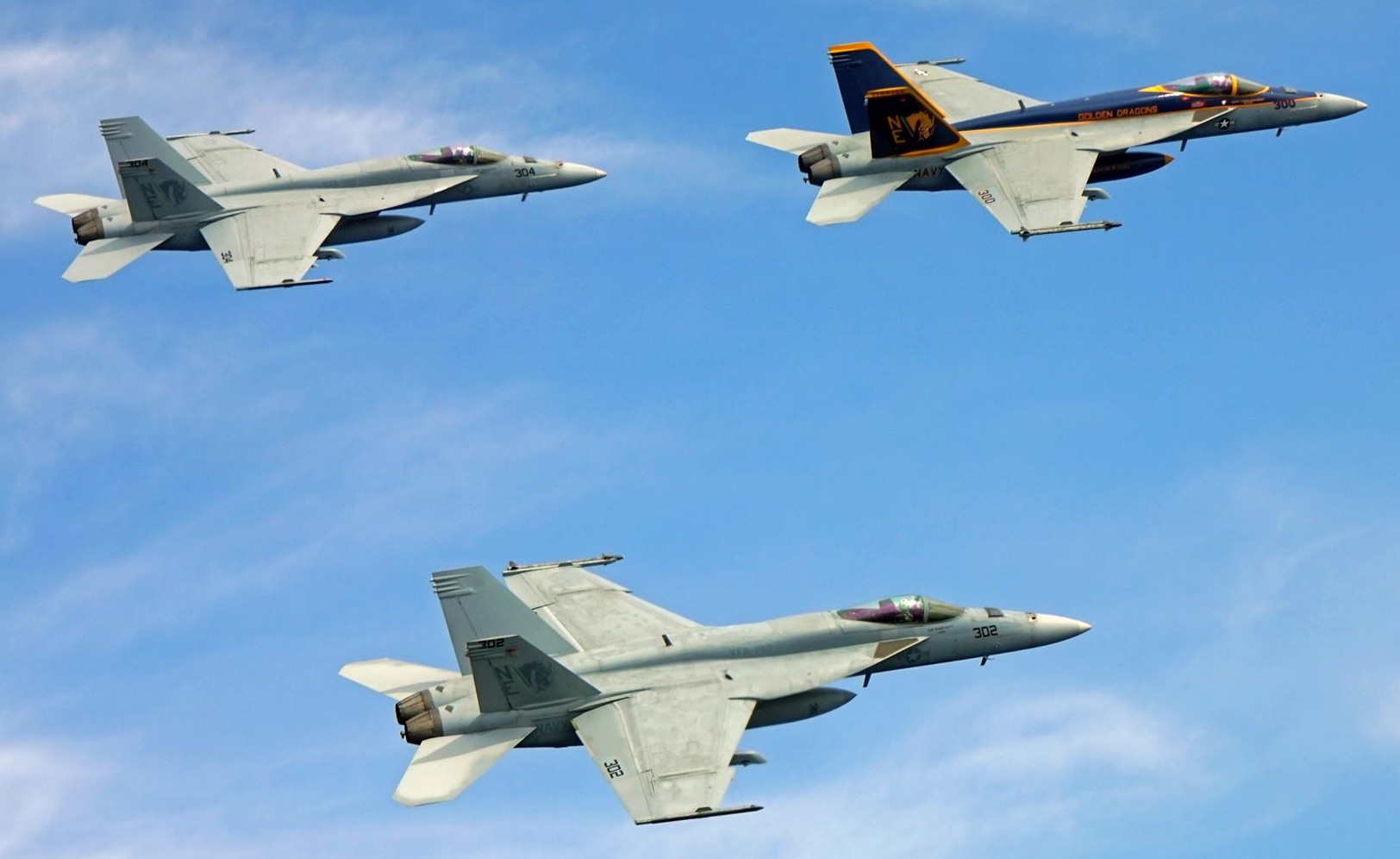 F/A-18E Super Hornet (VFA-192 / CVW-2) embarked on USS George Washington (CVN 73) - October 2015 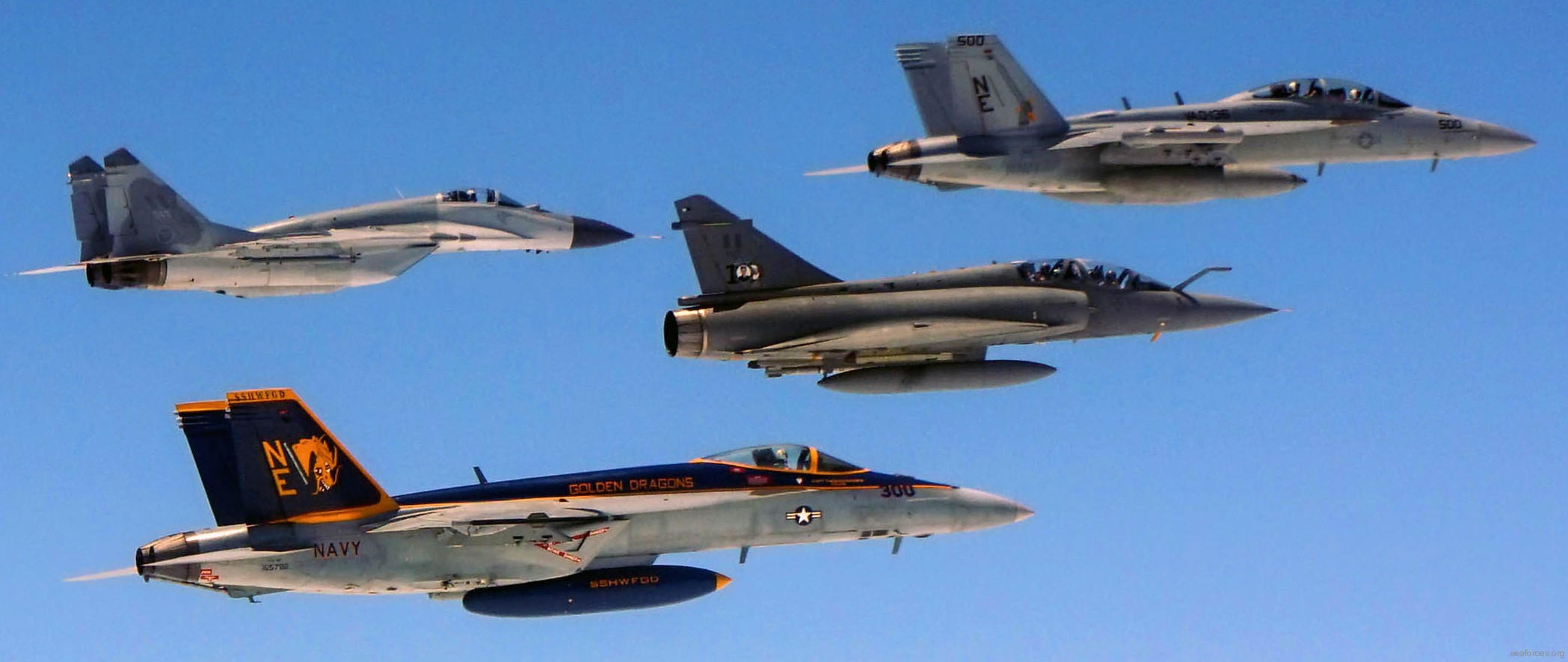 F/A-18E Super Hornet (VFA-192 / CVW-2) embarked on USS George Washington (CVN 73) with Peruvian Air Force aircraft - October 2015 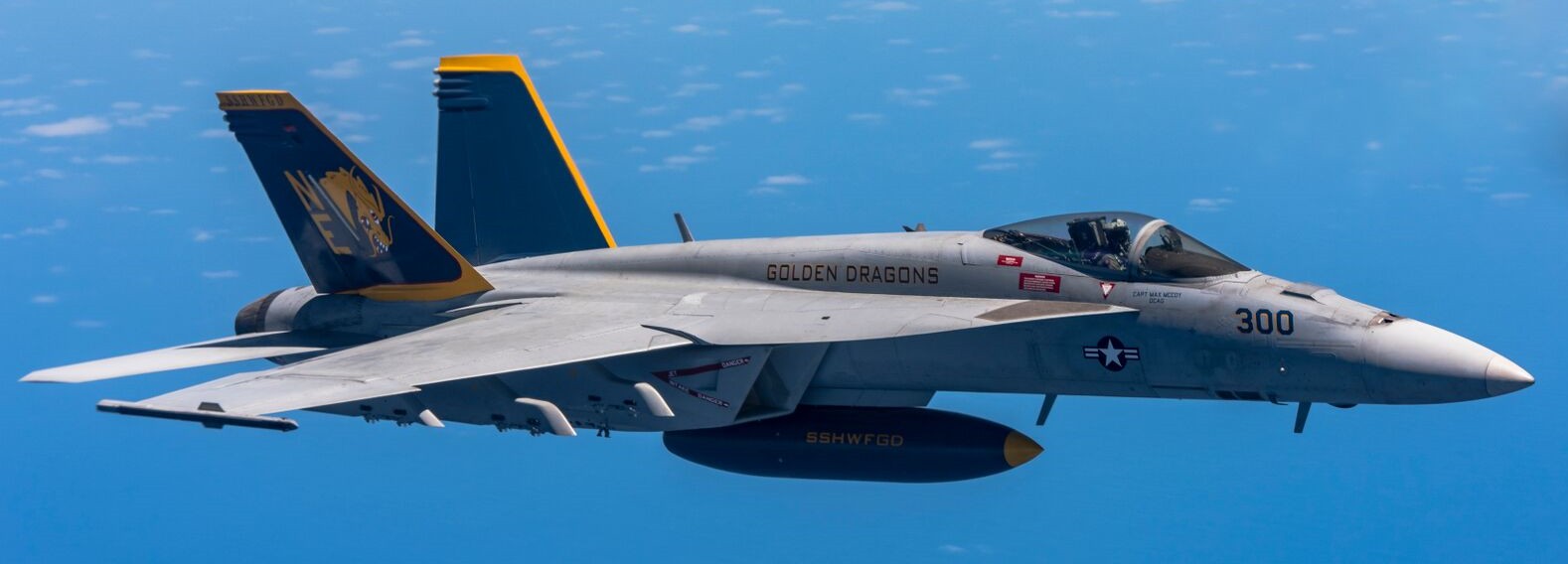 F/A-18E Super Hornet (VFA-192 / CVW-2) embarked on USS George Washington (CVN 73) - August 2015  F/A-18E Super Hornet (VFA-192 / CVW-2) embarked on USS George Washington (CVN 73) - July 2015 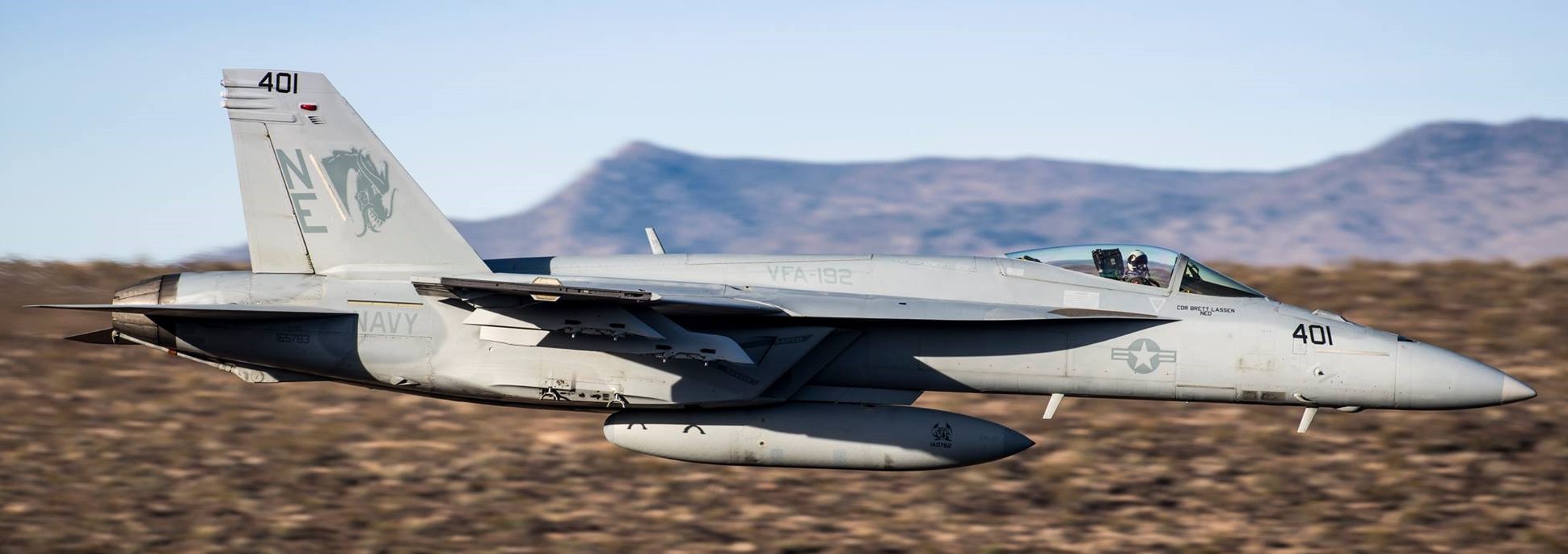 F/A-18E Super Hornet (VFA-192 / CVW-2) - May 2015  F/A-18C Hornet (VFA-192 / CVW-9) embarked on USS John C. Stennis (CVN 74) - April 2013 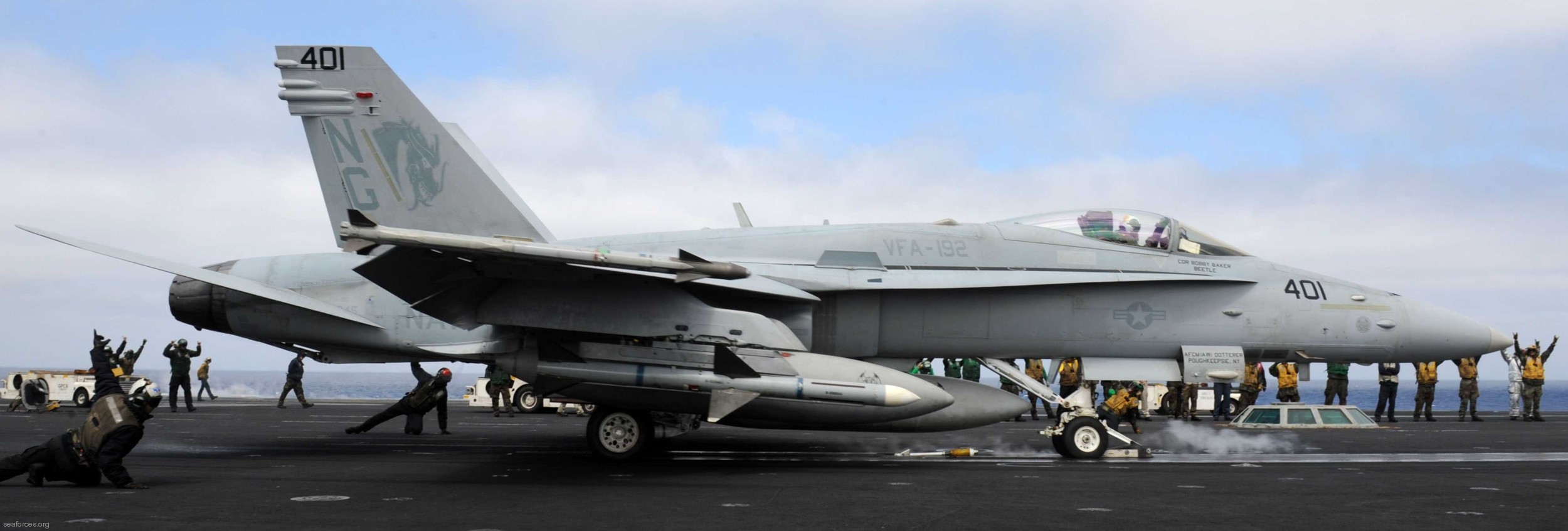 F/A-18C Hornet (VFA-192 / CVW-9) embarked on USS John C. Stennis (CVN 74) - April 2013 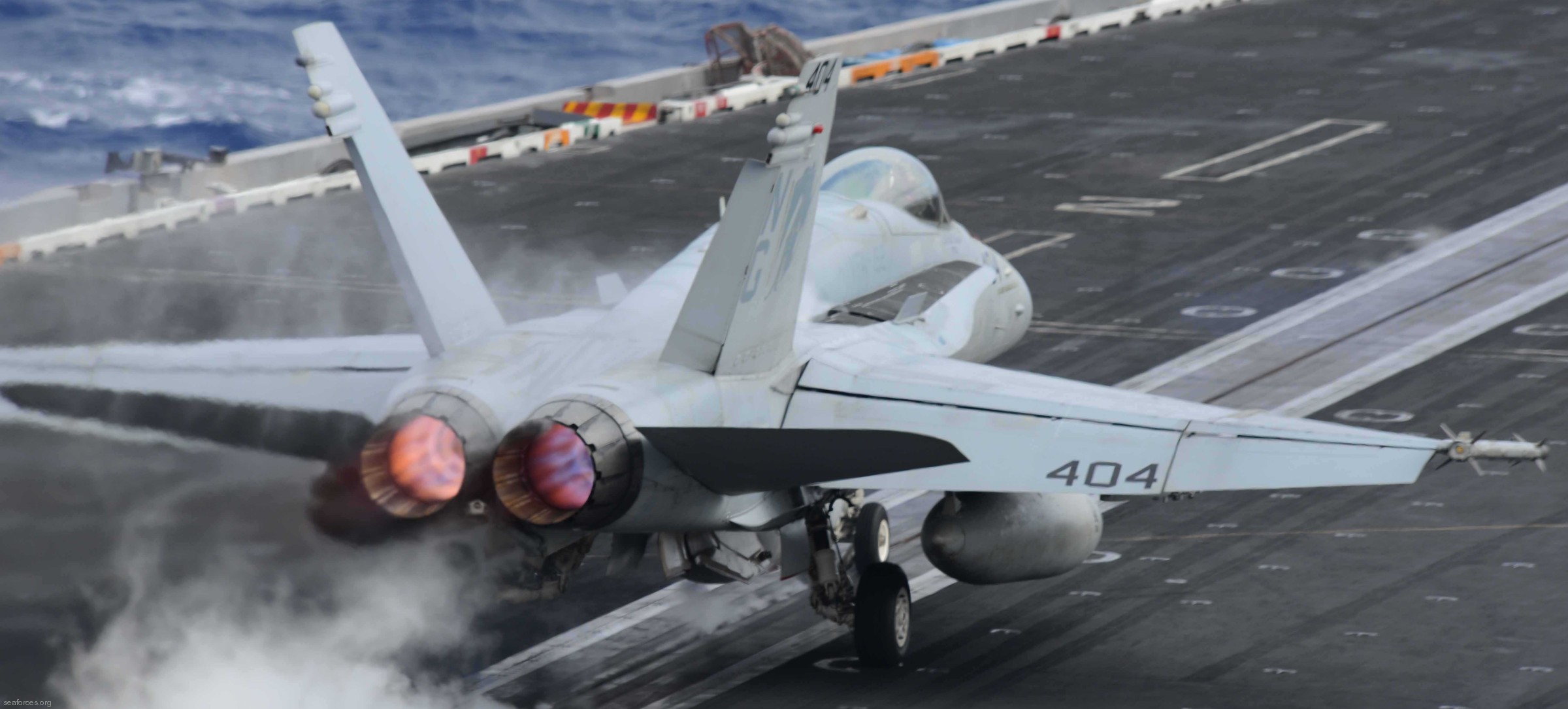 F/A-18C Hornet (VFA-192 / CVW-9) embarked on USS John C. Stennis (CVN 74) - April 2013 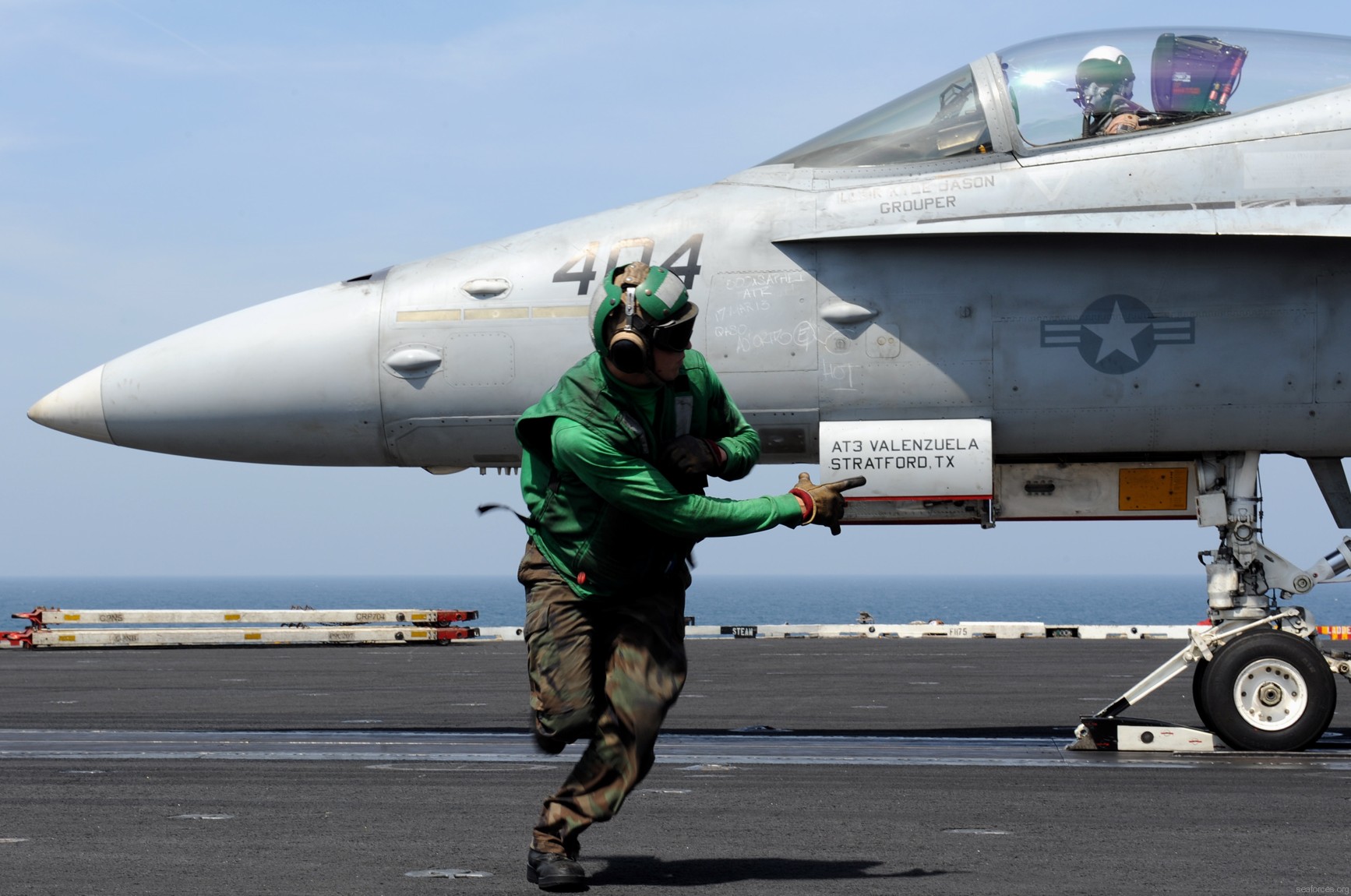 F/A-18C Hornet (VFA-192 / CVW-9) embarked on USS John C. Stennis (CVN 74) - March 2013 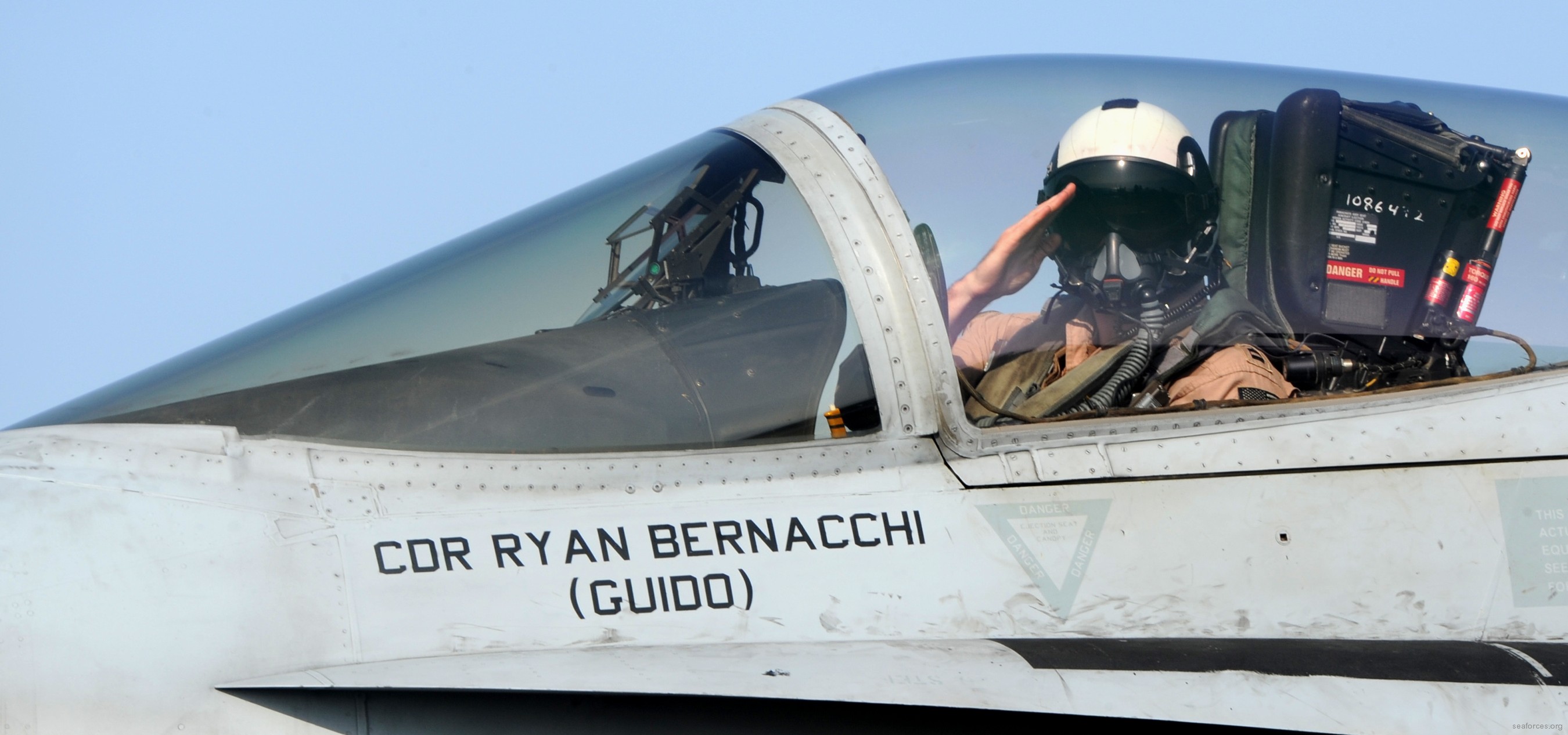 F/A-18C Hornet (VFA-192 / CVW-9) embarked on USS John C. Stennis (CVN 74) - March 2013  F/A-18C Hornet (VFA-192 / CVW-9) embarked on USS John C. Stennis (CVN 74) - January 2013 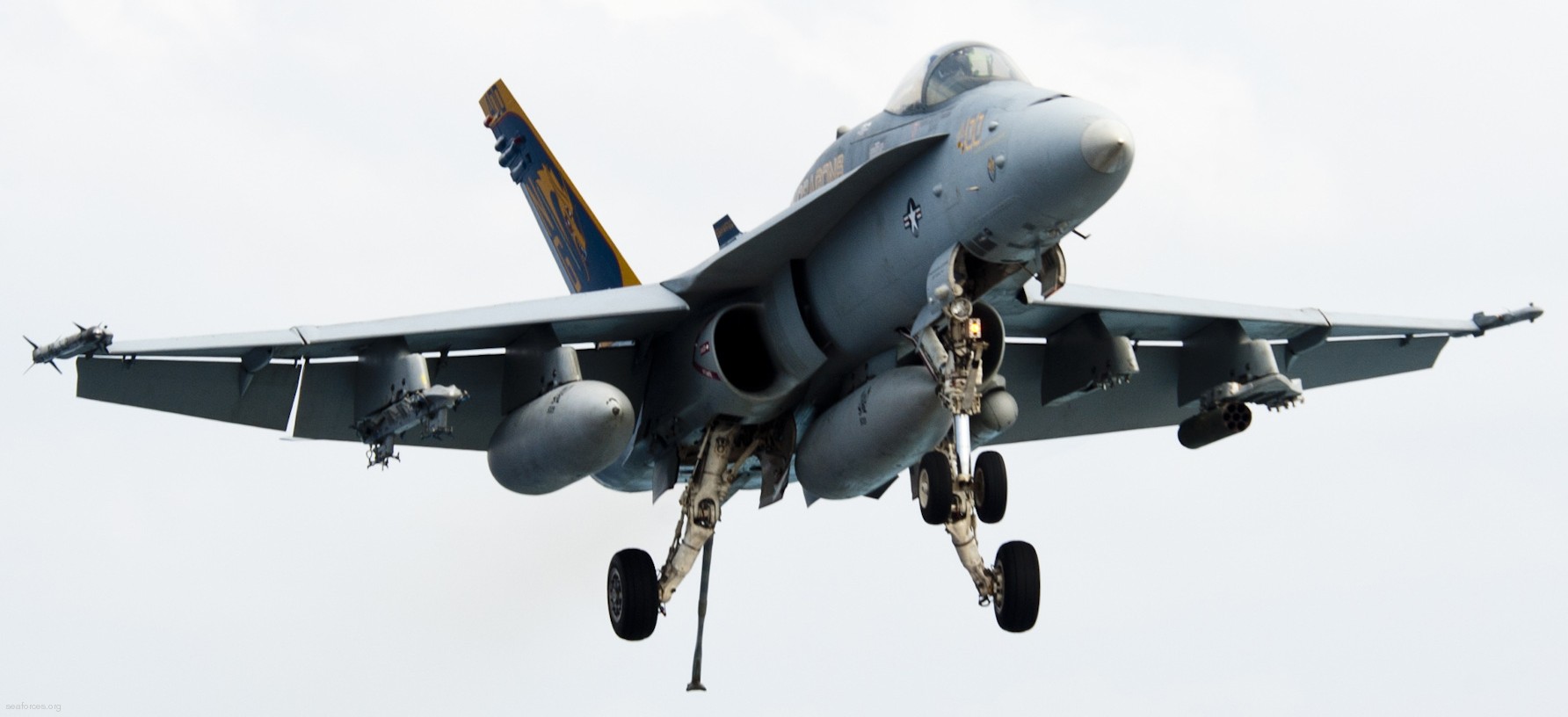 F/A-18C Hornet (VFA-192 / CVW-9) embarked on USS John C. Stennis (CVN 74) - October 2012  F/A-18C Hornet (VFA-192 / CVW-9) embarked on USS John C. Stennis (CVN 74) - September 2012 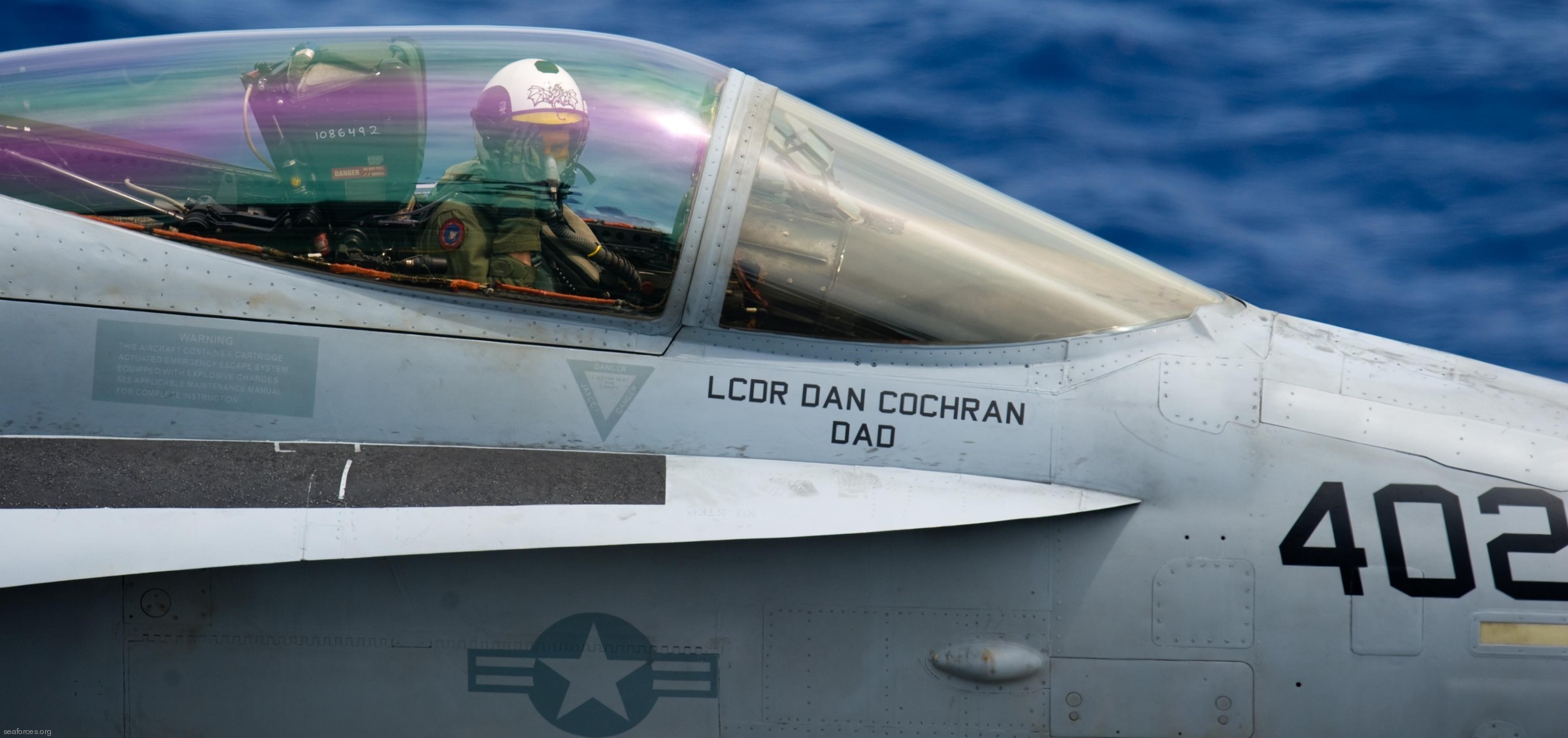 F/A-18C Hornet (VFA-192 / CVW-9) embarked on USS John C. Stennis (CVN 74) - September 2012 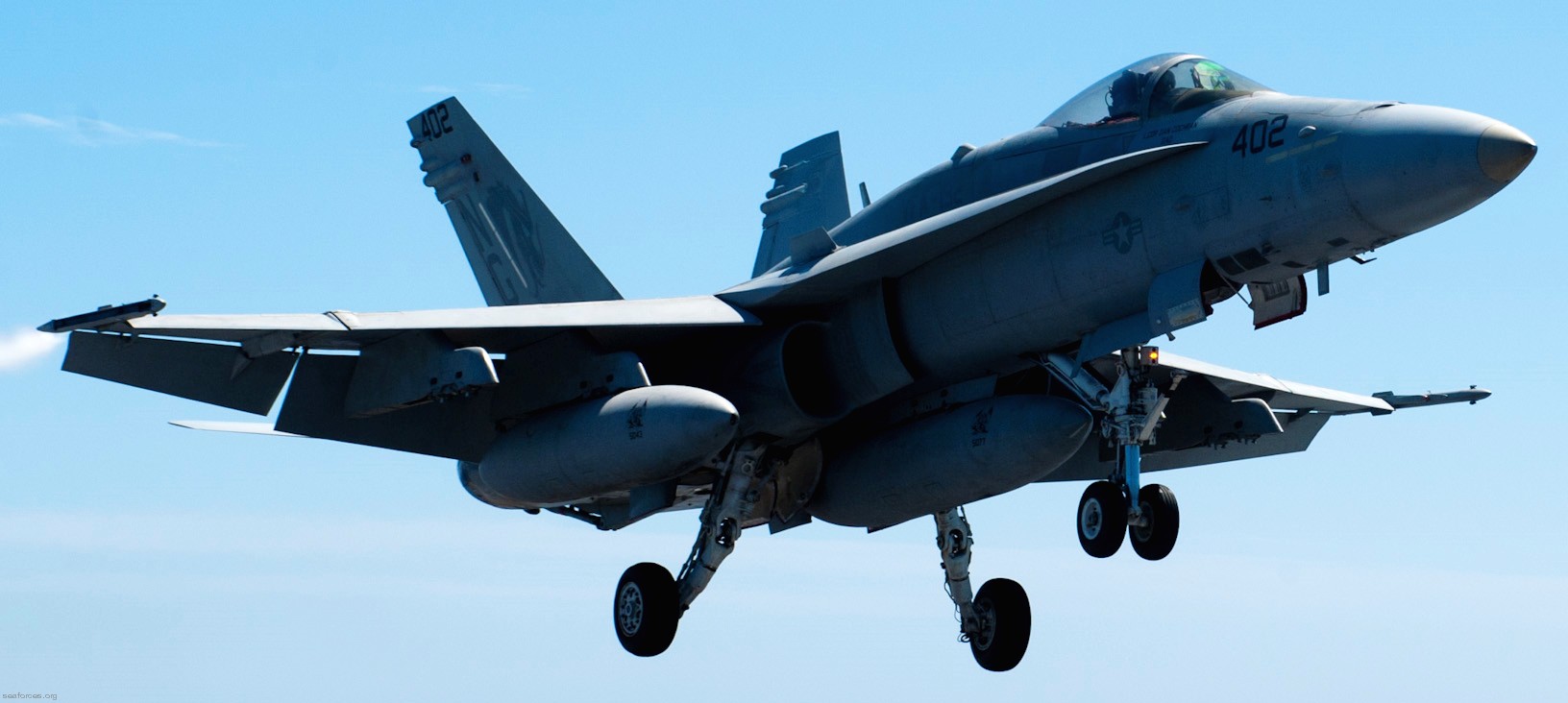 F/A-18C Hornet (VFA-192 / CVW-9) embarked on USS John C. Stennis (CVN 74) - September 2012 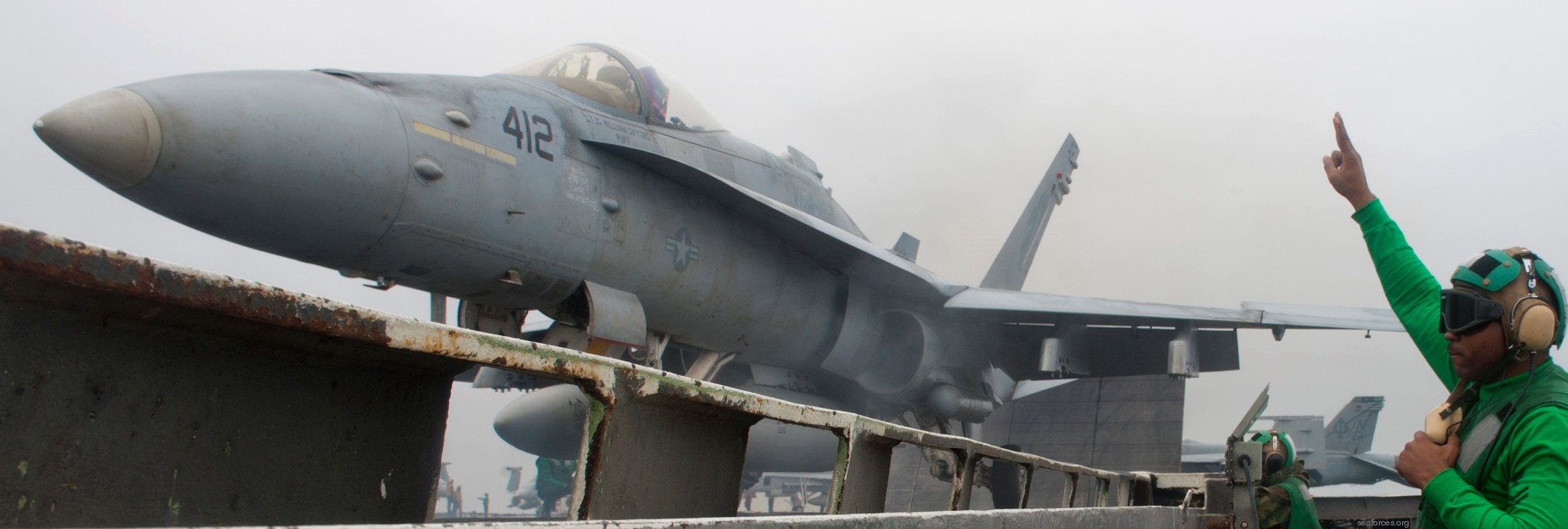 F/A-18C Hornet (VFA-192 / CVW-9) embarked on USS John C. Stennis (CVN 74) - July 2012 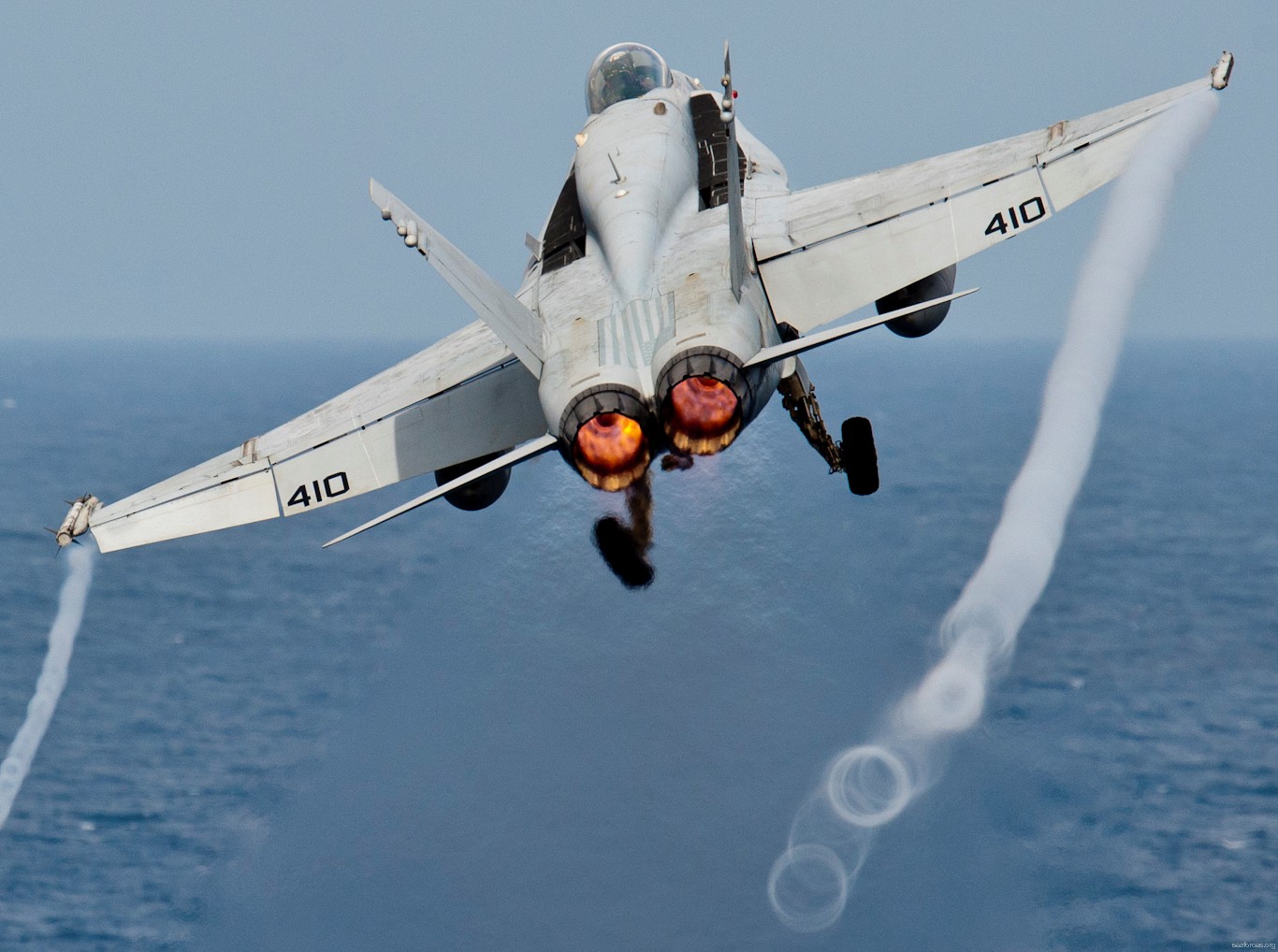 F/A-18C Hornet (VFA-192 / CVW-9) embarked on USS John C. Stennis (CVN 74) - January 2012 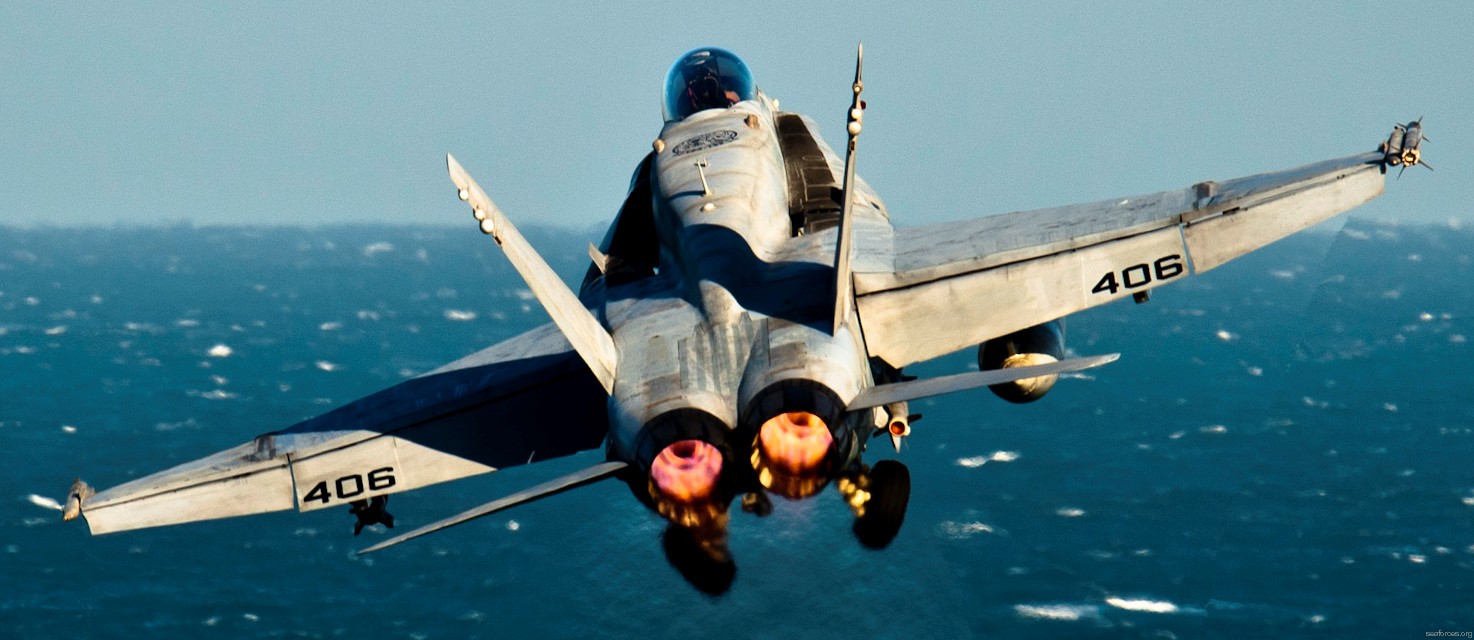 F/A-18C Hornet (VFA-192 / CVW-9) embarked on USS John C. Stennis (CVN 74) - December 2011 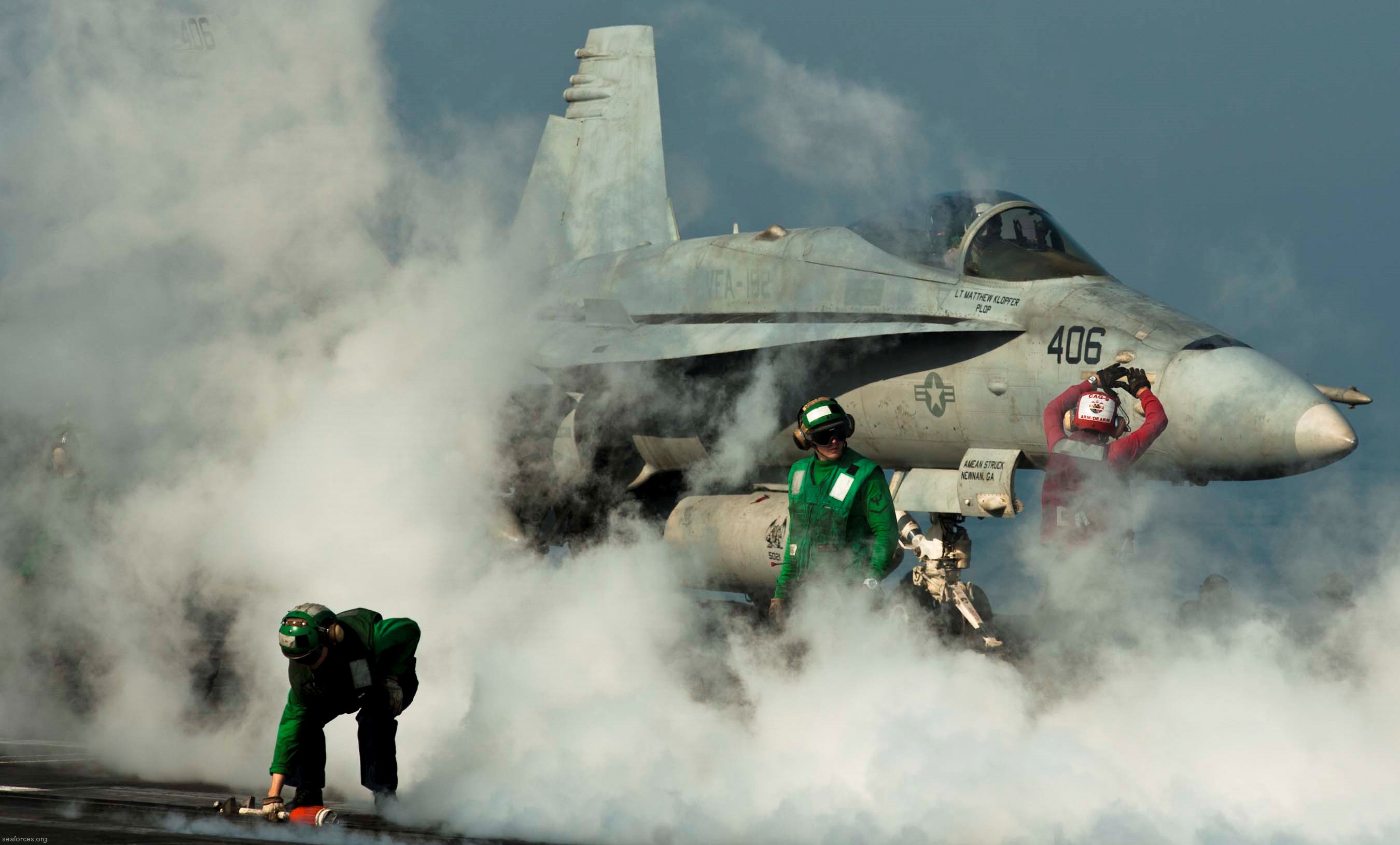 F/A-18C Hornet (VFA-192 / CVW-9) embarked on USS John C. Stennis (CVN 74) - November 2011 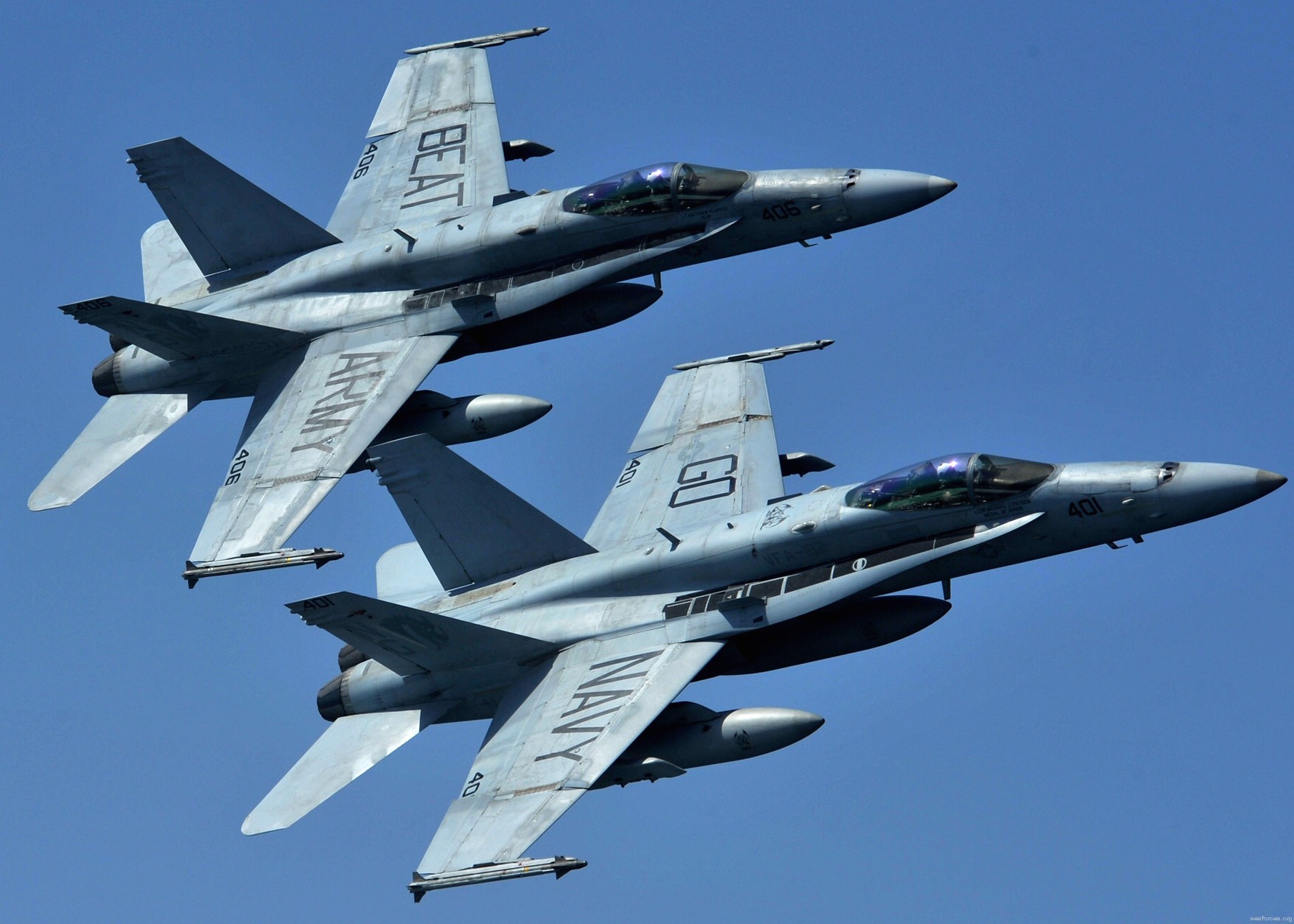 F/A-18C Hornet (VFA-192 / CVW-9) embarked on USS John C. Stennis (CVN 74) - November 2011 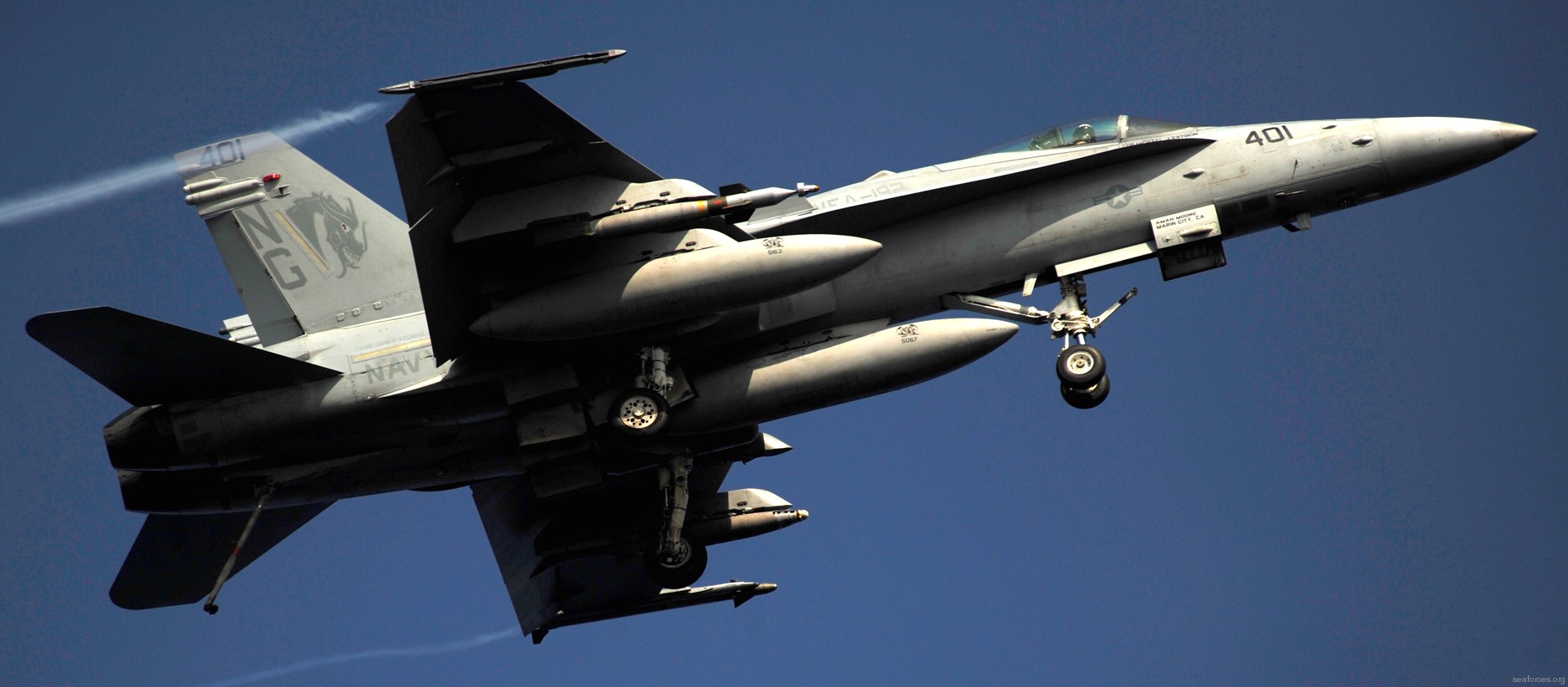 F/A-18C Hornet (VFA-192 / CVW-9) embarked on USS John C. Stennis (CVN 74) - October 2011 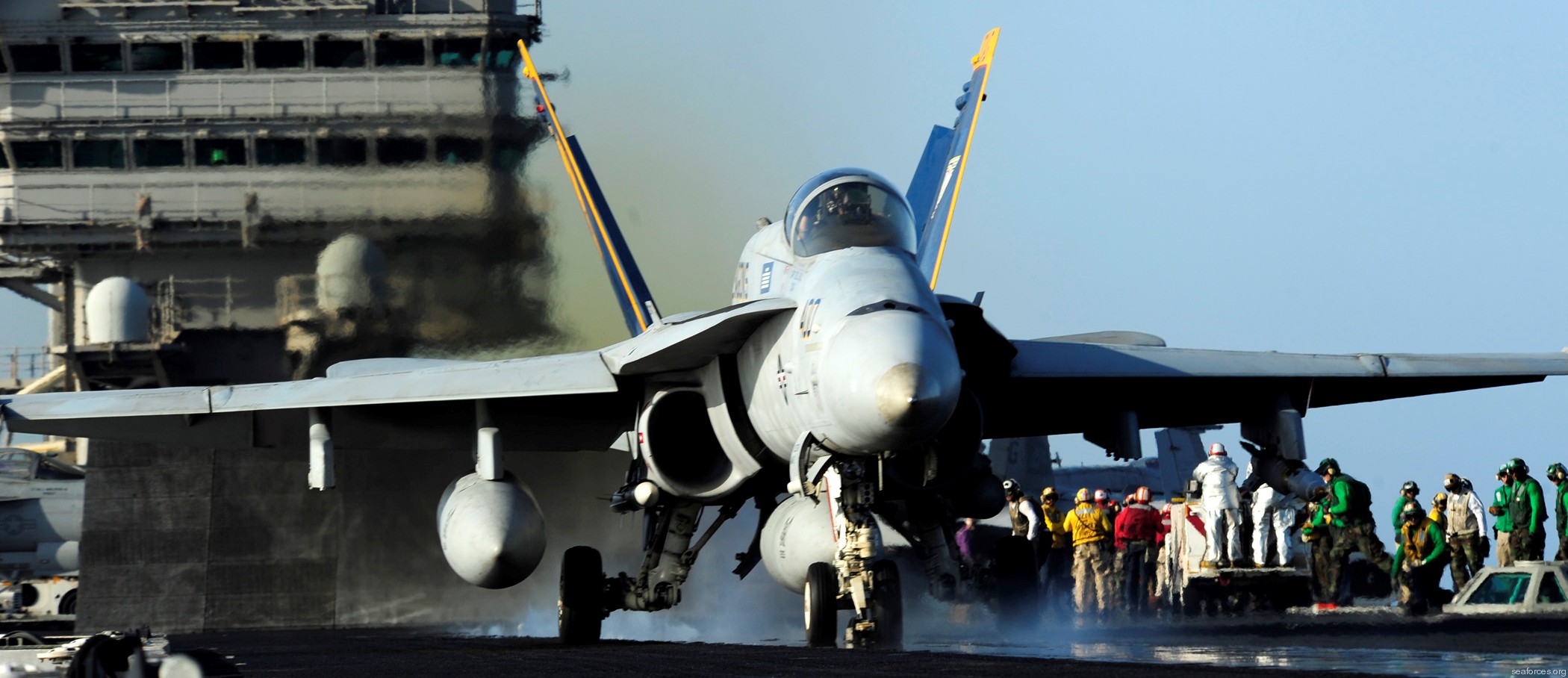 F/A-18C Hornet (VFA-192 / CVW-9) embarked on USS John C. Stennis (CVN 74) - October 2011 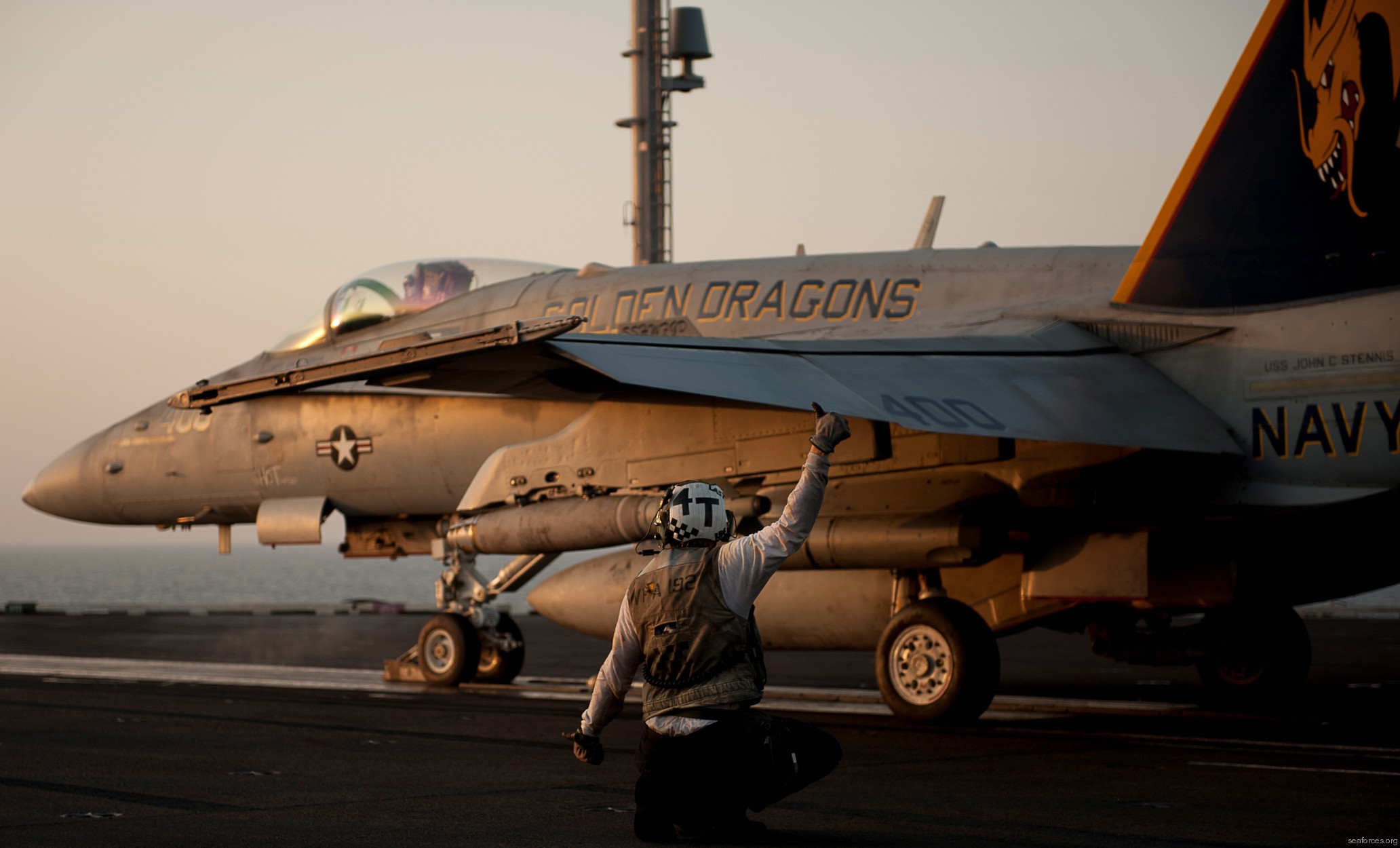 F/A-18C Hornet (VFA-192 / CVW-9) embarked on USS John C. Stennis (CVN 74) - September 2011 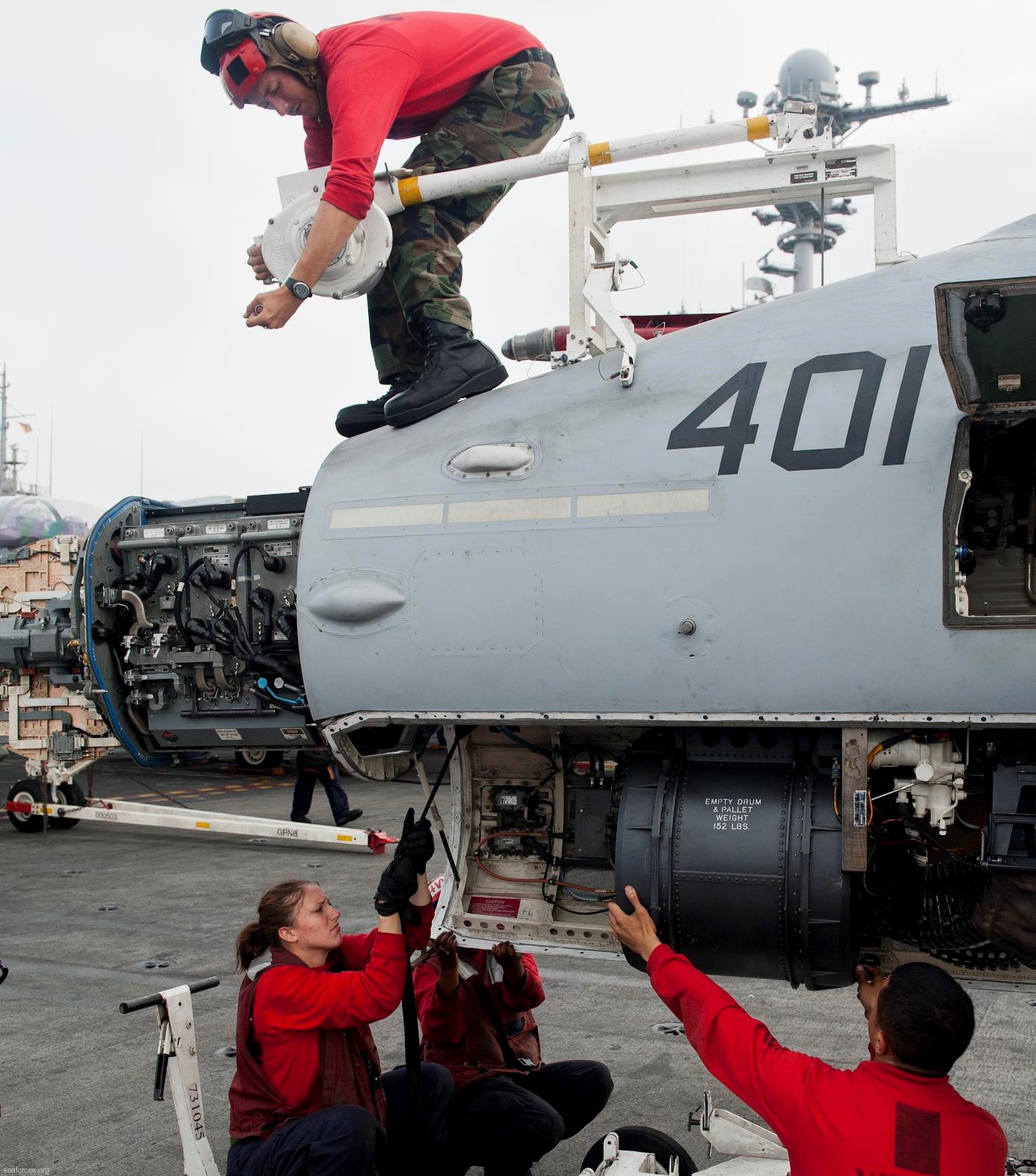 Aviation ordnancemen hoist an M61A1 machine gun into an F/A-18C Hornet (VFA-192 / CVW-9) embarked on USS John C. Stennis (CVN 74) - September 2011 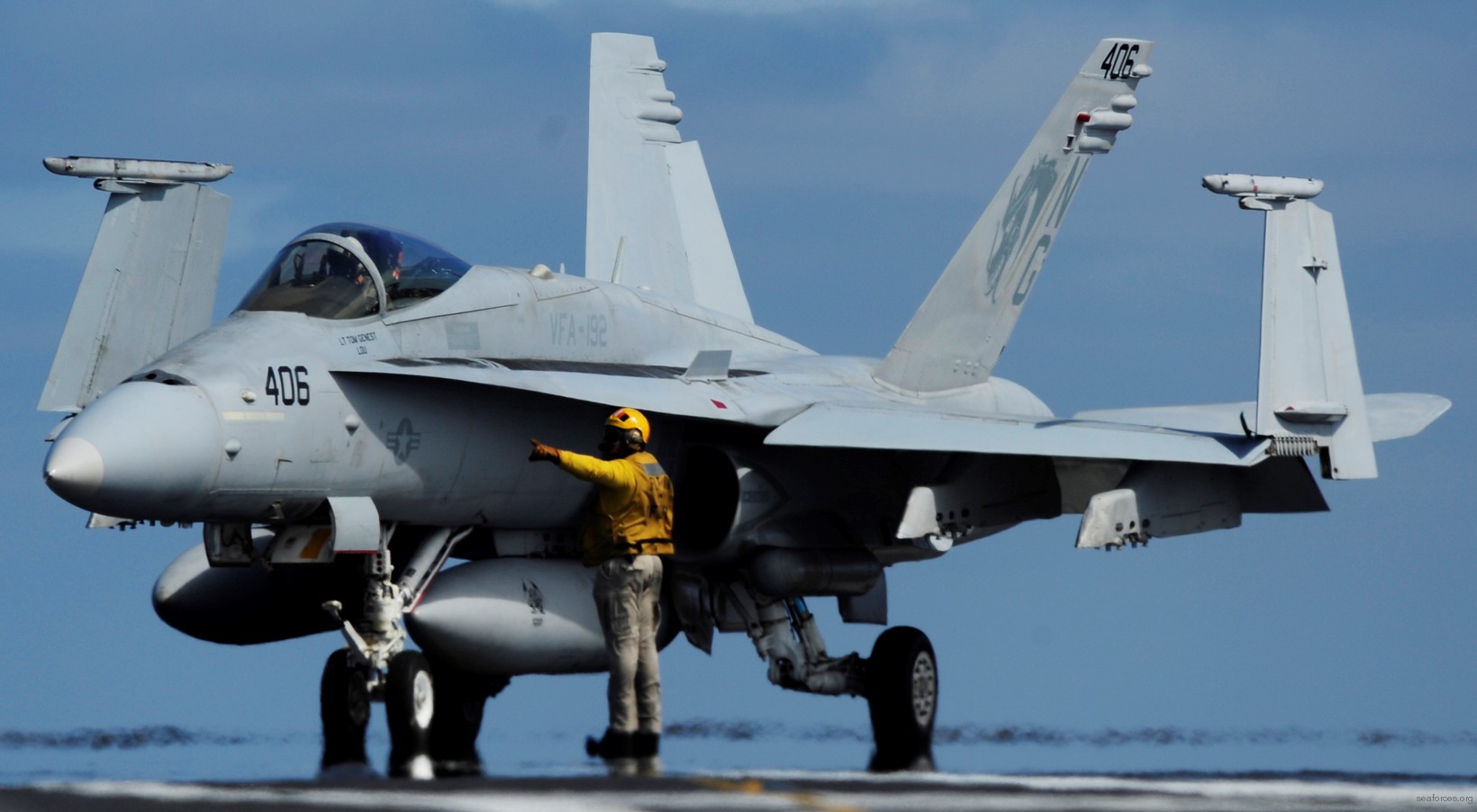 F/A-18C Hornet (VFA-192 / CVW-9) embarked on USS John C. Stennis (CVN 74) - July 2011 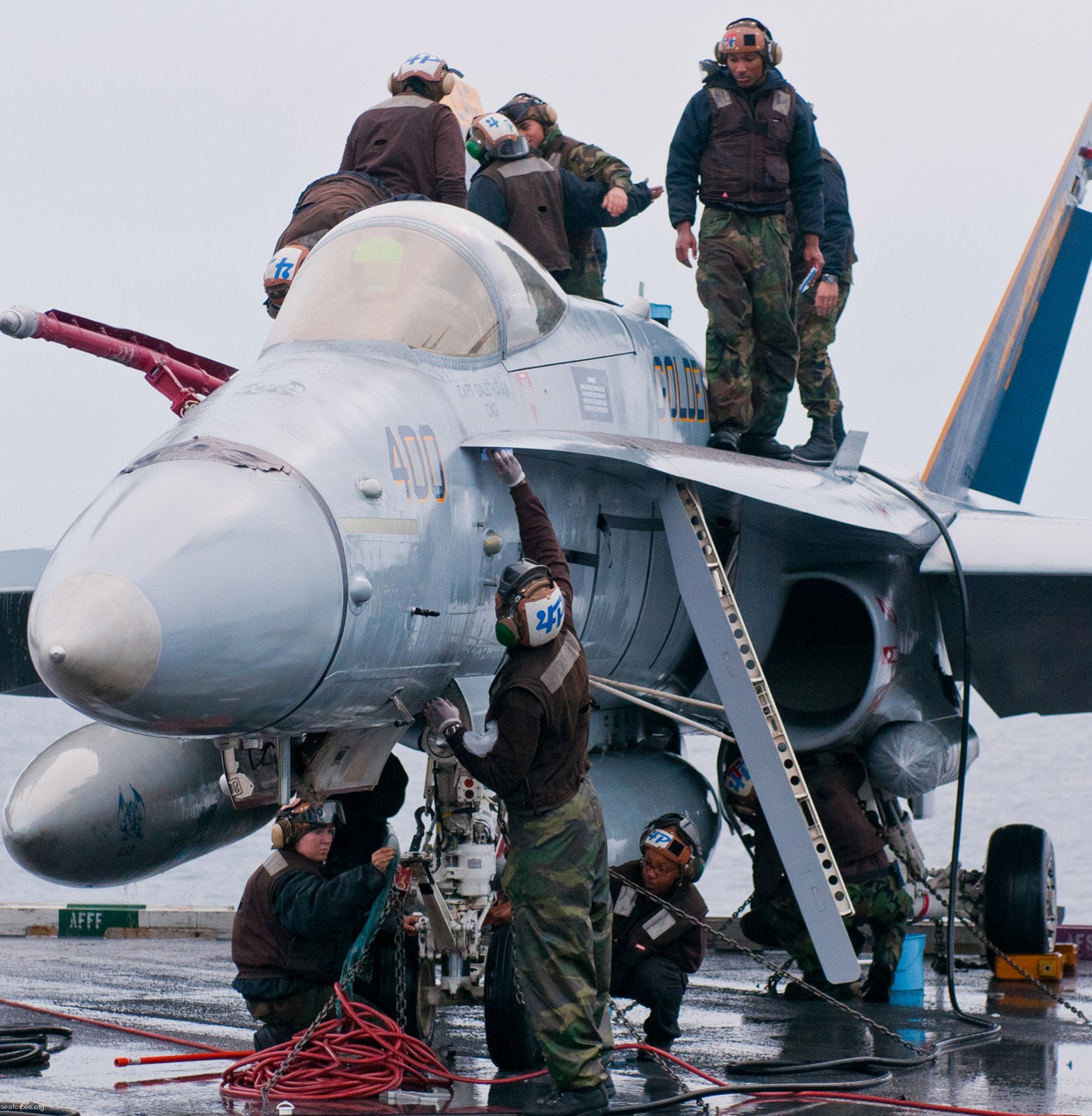 F/A-18C Hornet (VFA-192 / CVW-9) embarked on USS John C. Stennis (CVN 74) - May 2011 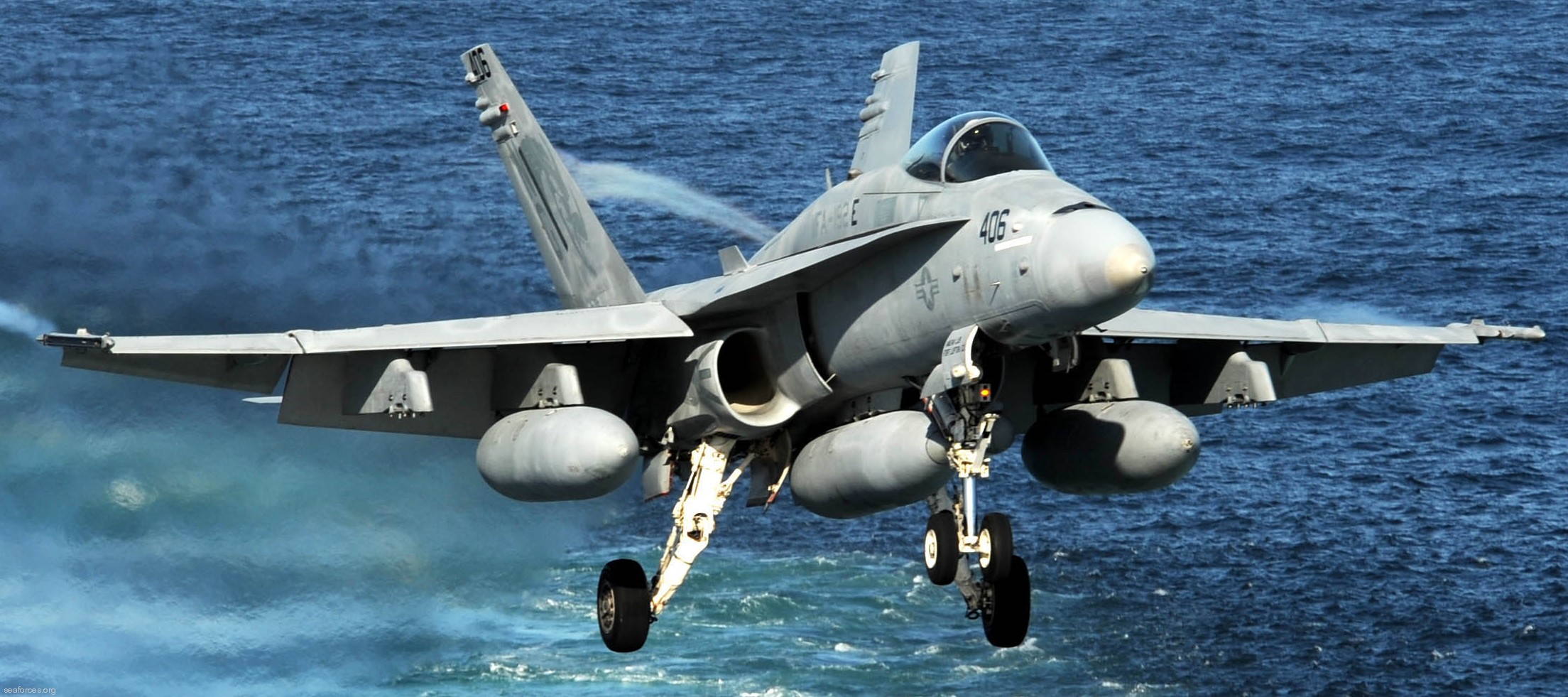 F/A-18C Hornet (VFA-192 / CVW-9) embarked on USS John C. Stennis (CVN 74) - January 2011 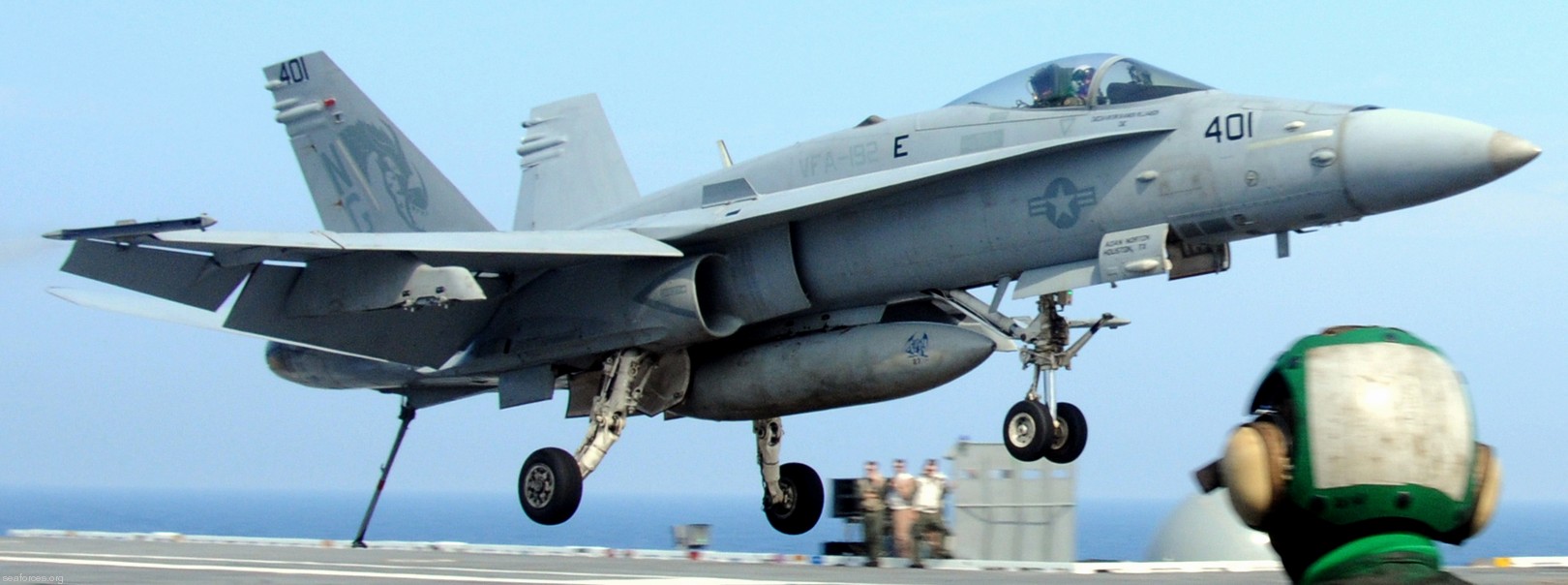 F/A-18C Hornet (VFA-192 / CVW-9) aboard USS George H. W. Bush (CVN 77) - July 2010 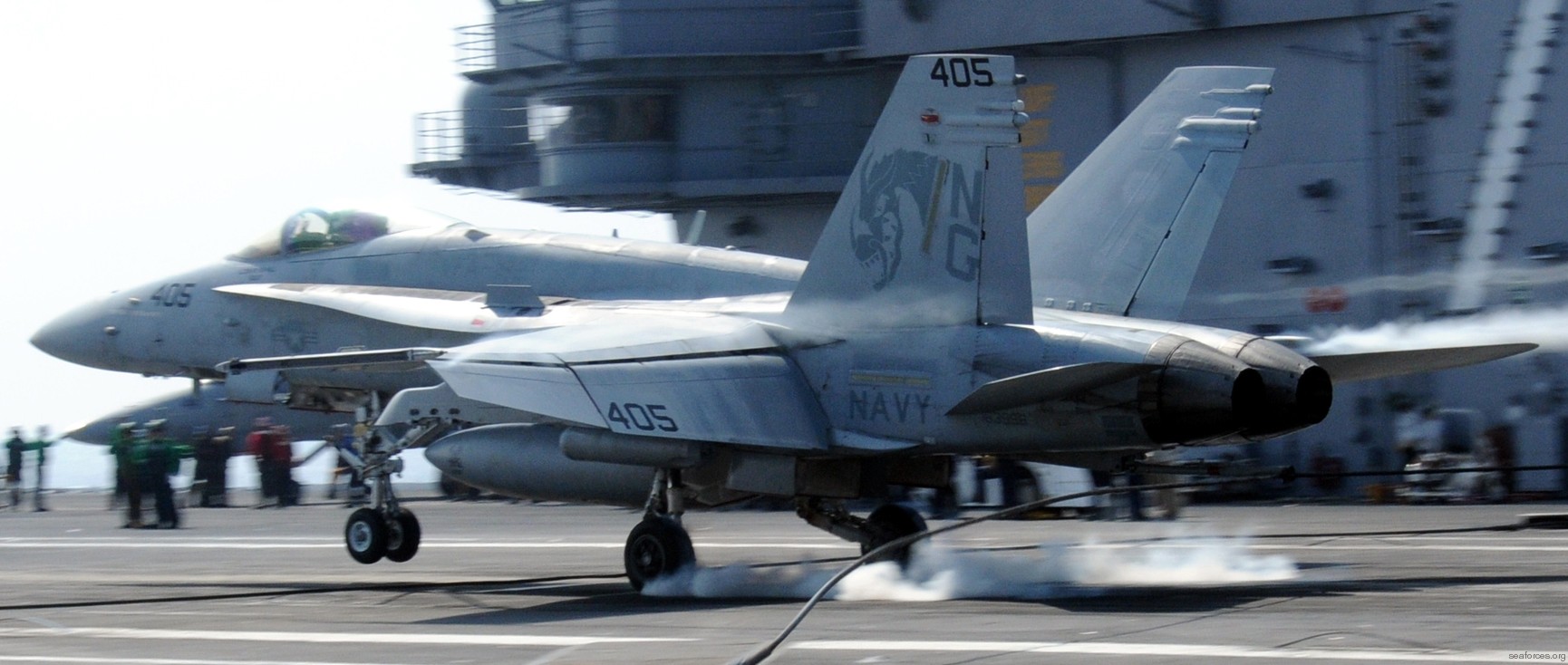 F/A-18C Hornet (VFA-192 / CVW-9) aboard USS George H. W. Bush (CVN 77) - July 2010 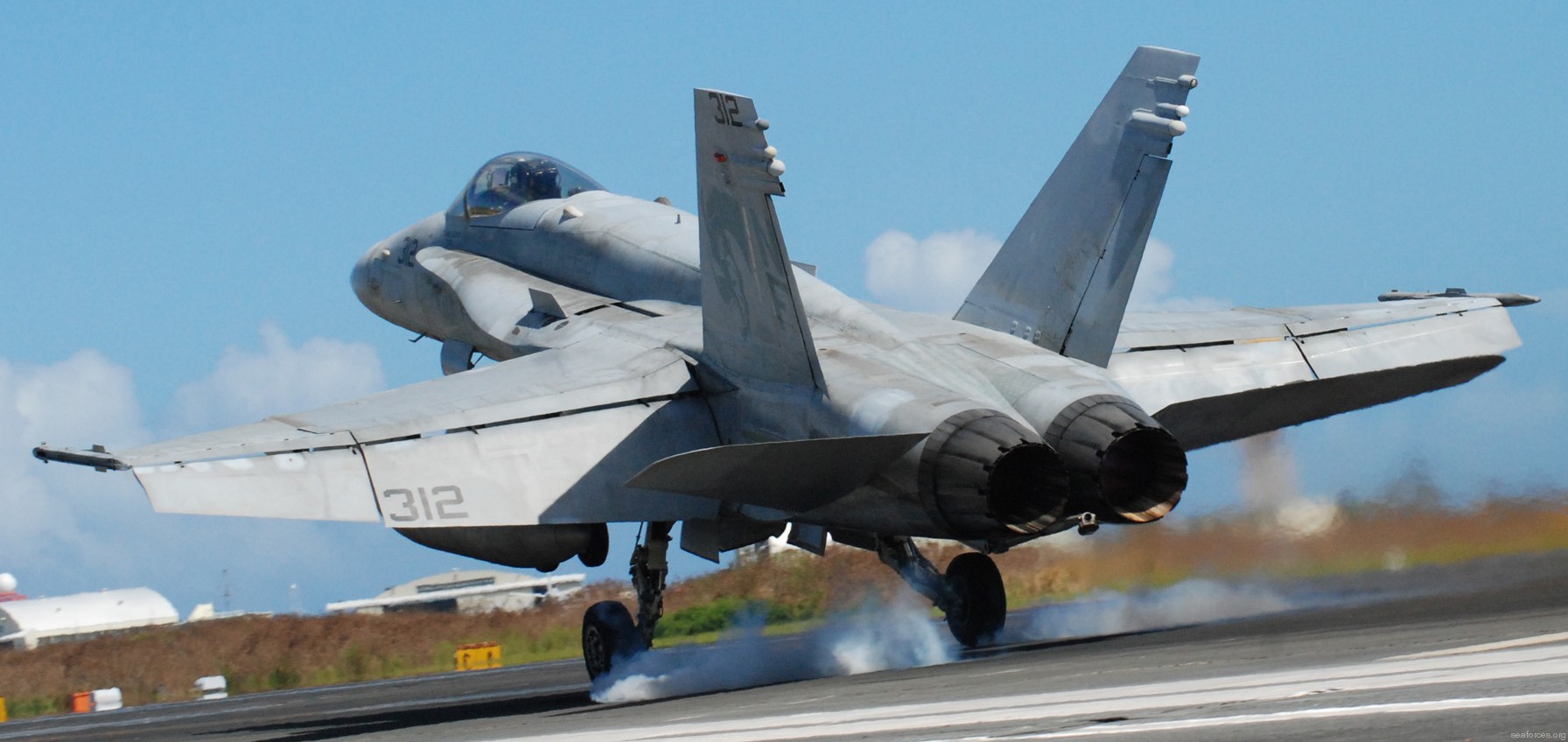 F/A-18C Hornet (VFA-192 / CVW-5) at Iwo To Island, Japan - September 2009 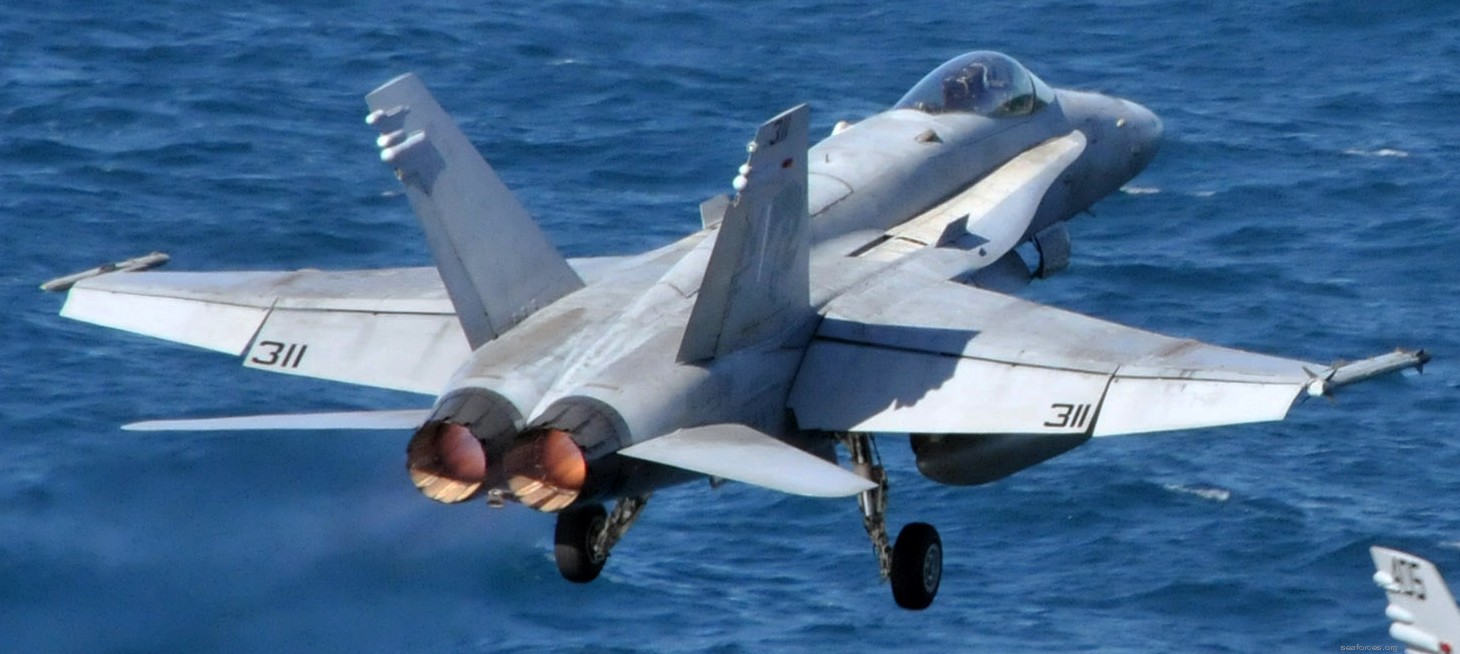 F/A-18C Hornet (VFA-192 / CVW-5) embarked on USS George Washington (CVN 73) - July 2009 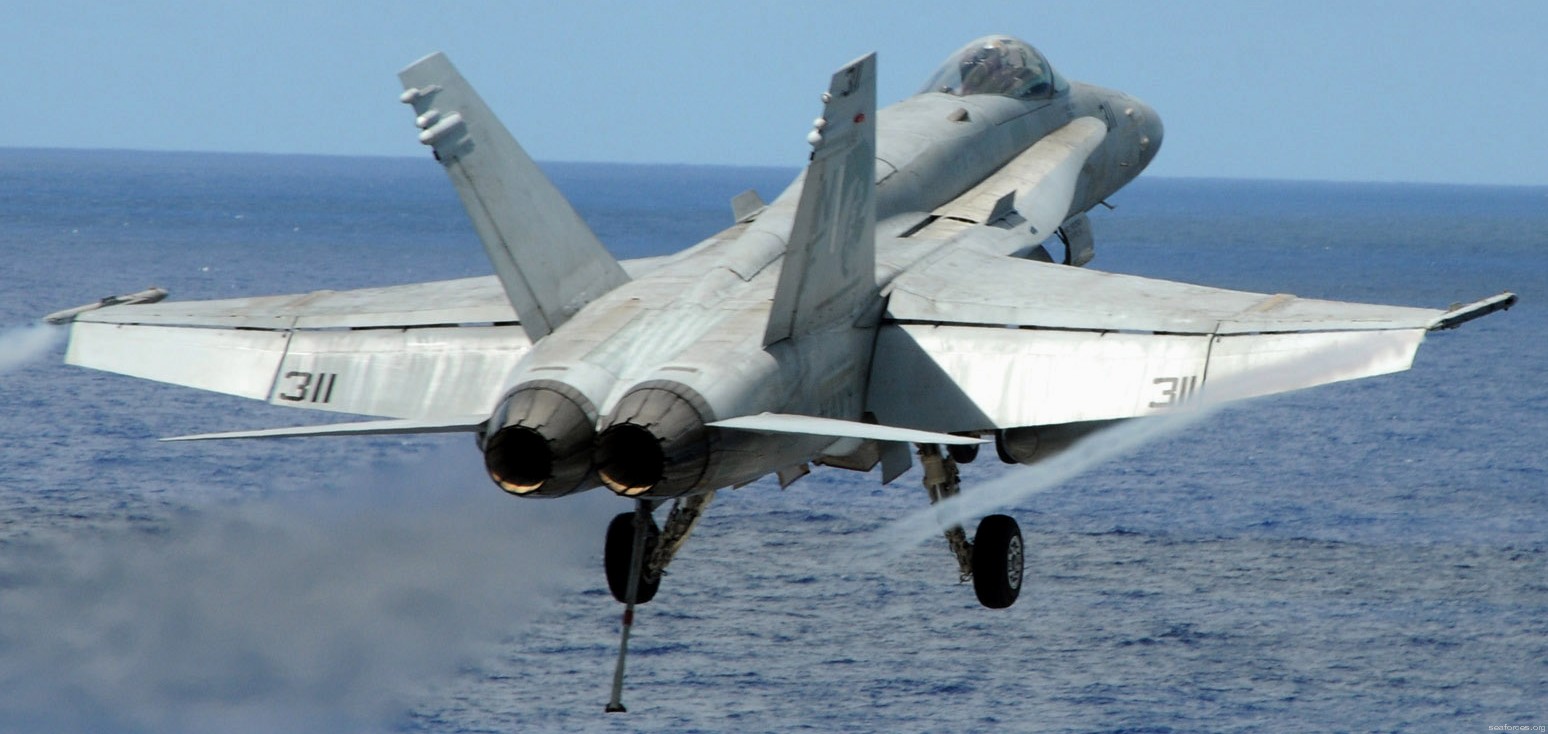 F/A-18C Hornet (VFA-192 / CVW-5) embarked on USS George Washington (CVN 73) - June 2009 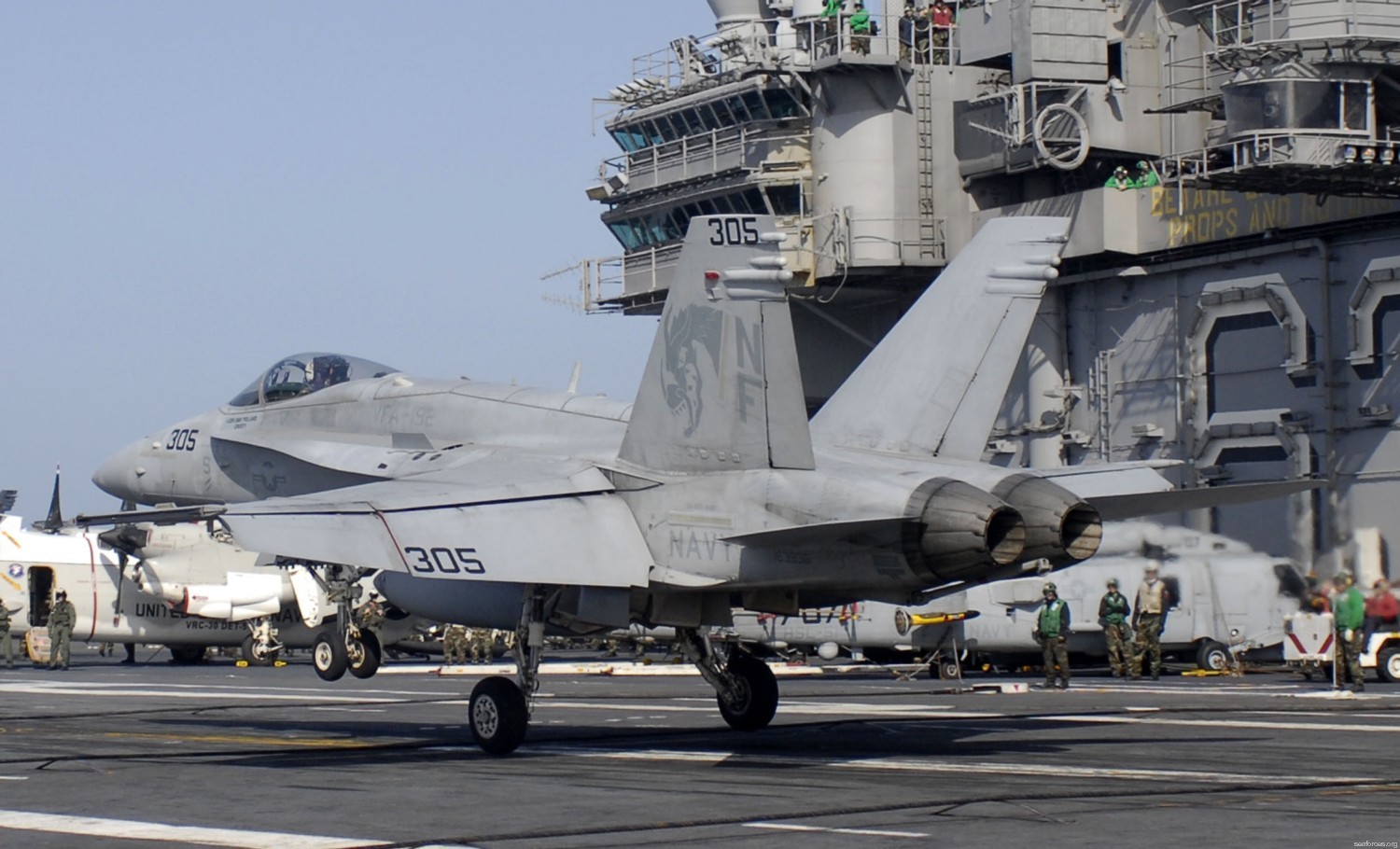 F/A-18C Hornet (VFA-192 / CVW-5) embarked on USS George Washington (CVN 73) - 2008 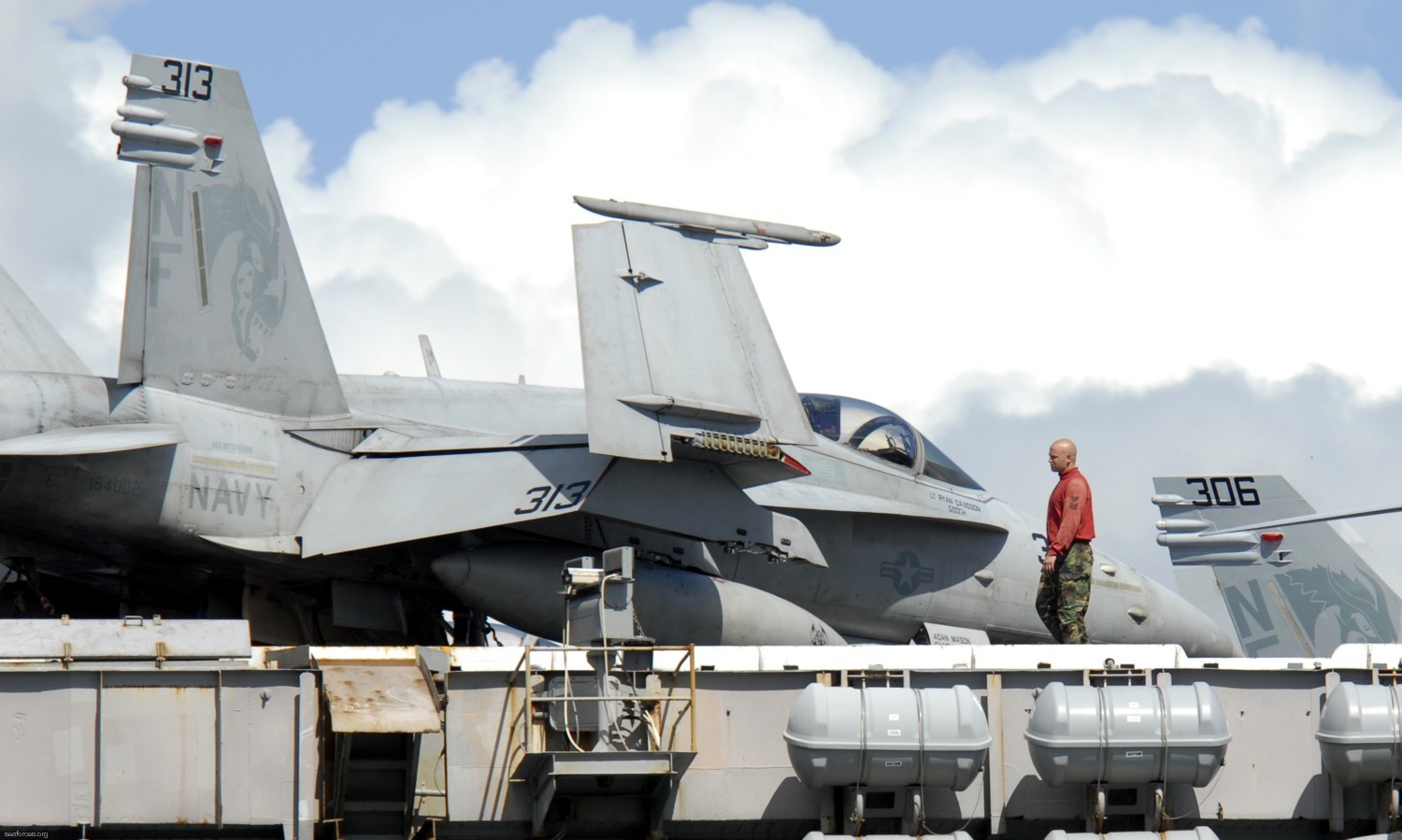 F/A-18C Hornet (VFA-192 / CVW-5) embarked on USS George Washington (CVN 73) - 2008 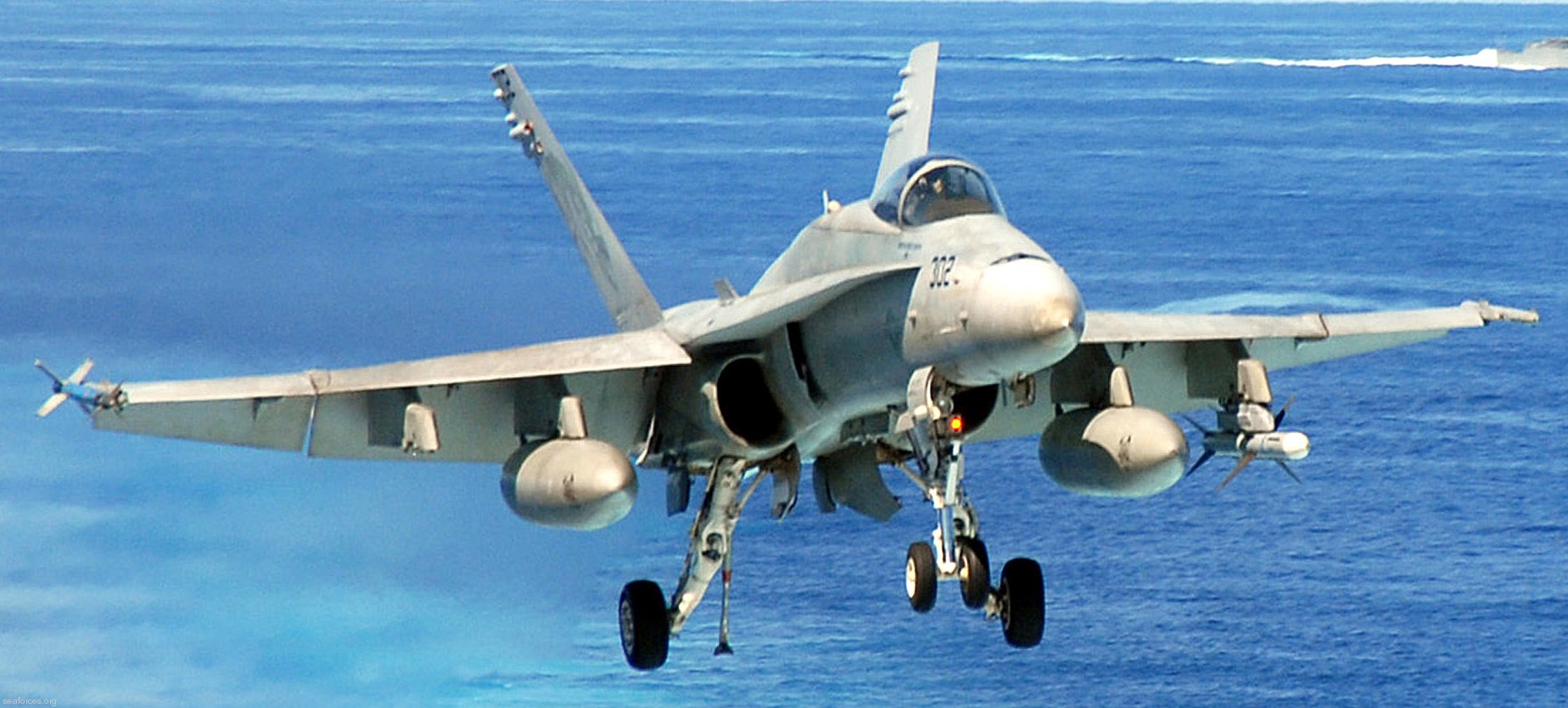 F/A-18C Hornet (VFA-192 / CVW-5) embarked on USS George Washington (CVN 73) - October 2008 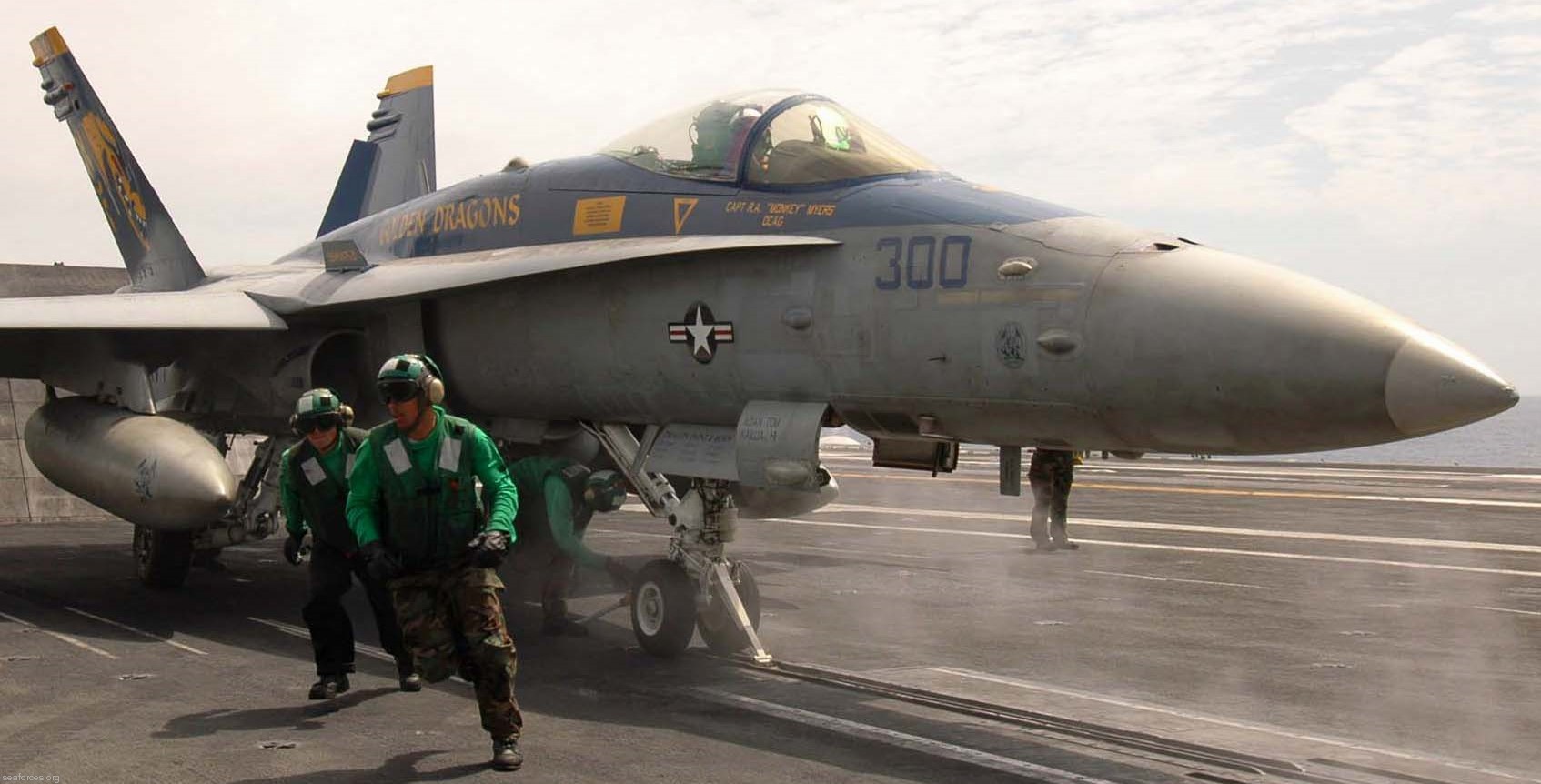 F/A-18C Hornet (VFA-192 / CVW-5) embarked on USS George Washington (CVN 73) - August 2008 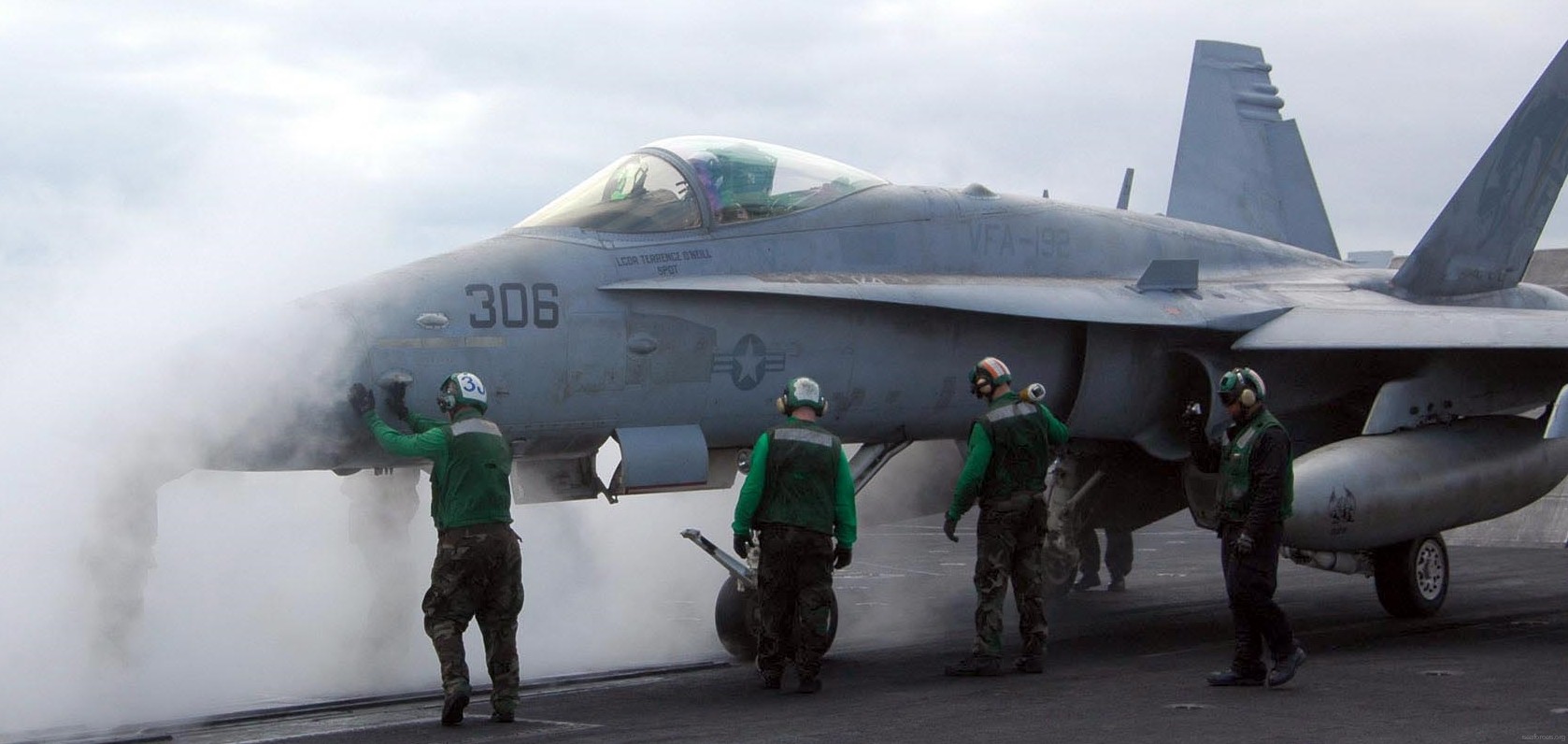 F/A-18C Hornet (VFA-192 / CVW-5) embarked on USS Kitty Hawk (CV 63) - August 2008 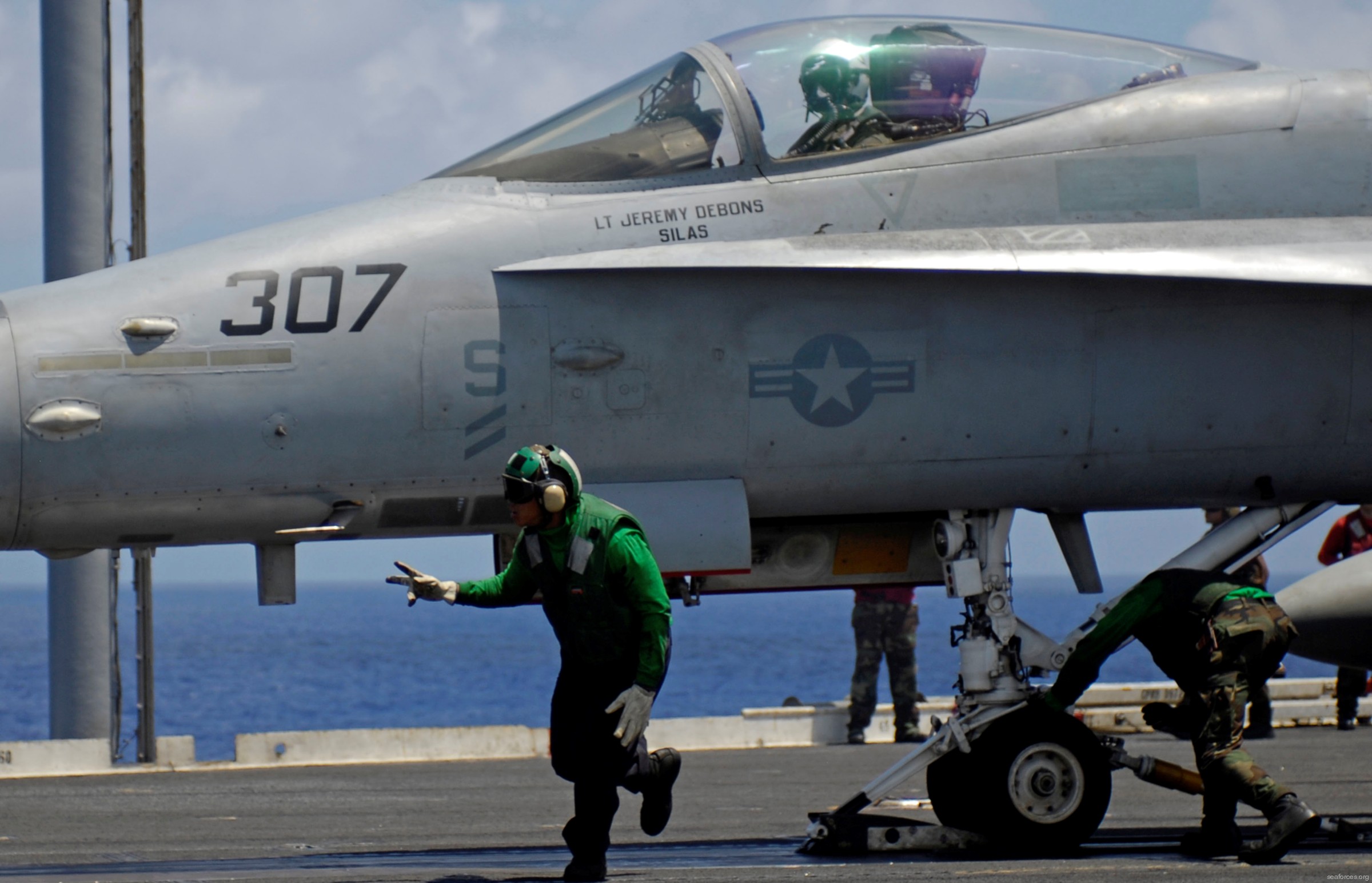 F/A-18C Hornet (VFA-192 / CVW-5) embarked on USS Kitty Hawk (CV 63) - June 2008  F/A-18C Hornet (VFA-192 / CVW-5) embarked on USS Kitty Hawk (CV 63) - June 2008 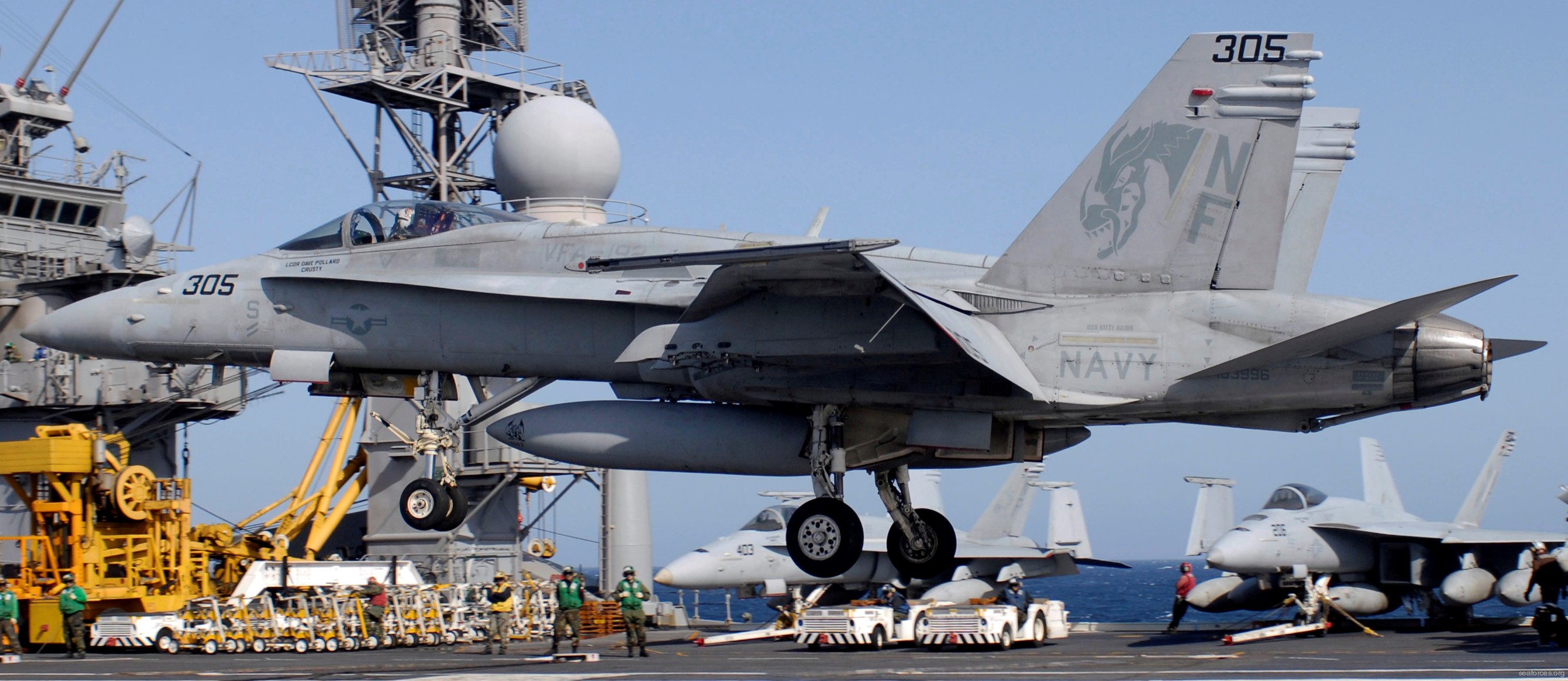 F/A-18C Hornet (VFA-192 / CVW-5) embarked on USS Kitty Hawk (CV 63) - March 2008 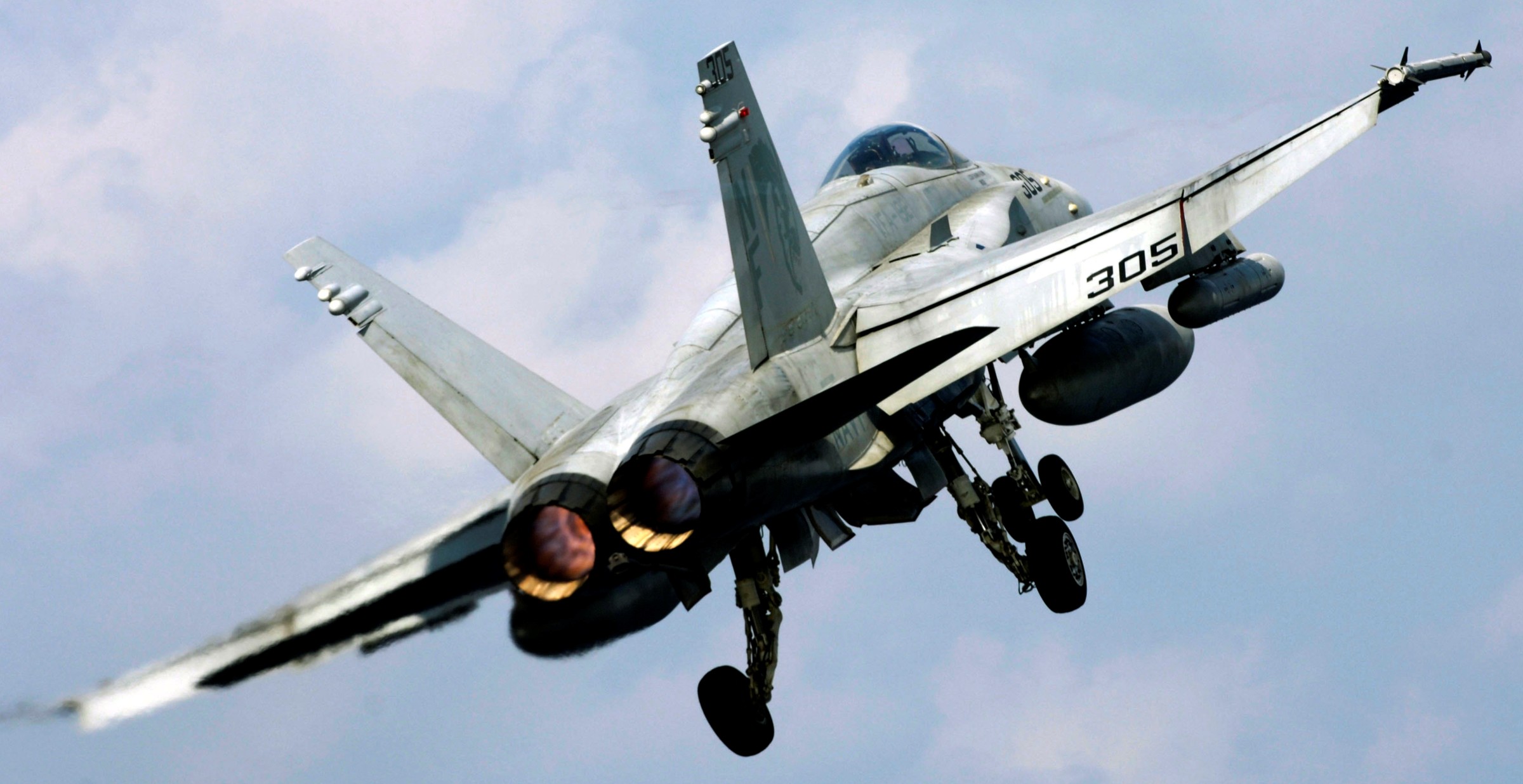 F/A-18C Hornet (VFA-192 / CVW-5) embarked on USS Kitty Hawk (CV 63) - November 2007 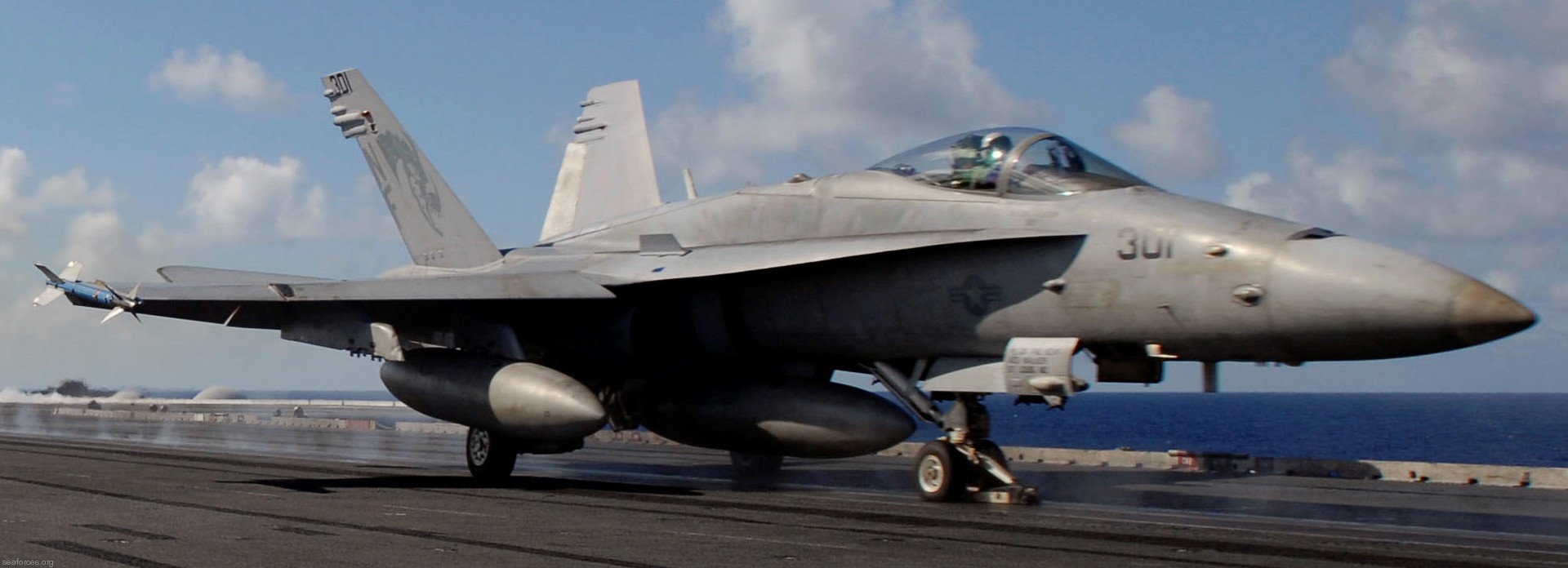 F/A-18C Hornet (VFA-192 / CVW-5) embarked on USS Kitty Hawk (CV 63) - September 2007 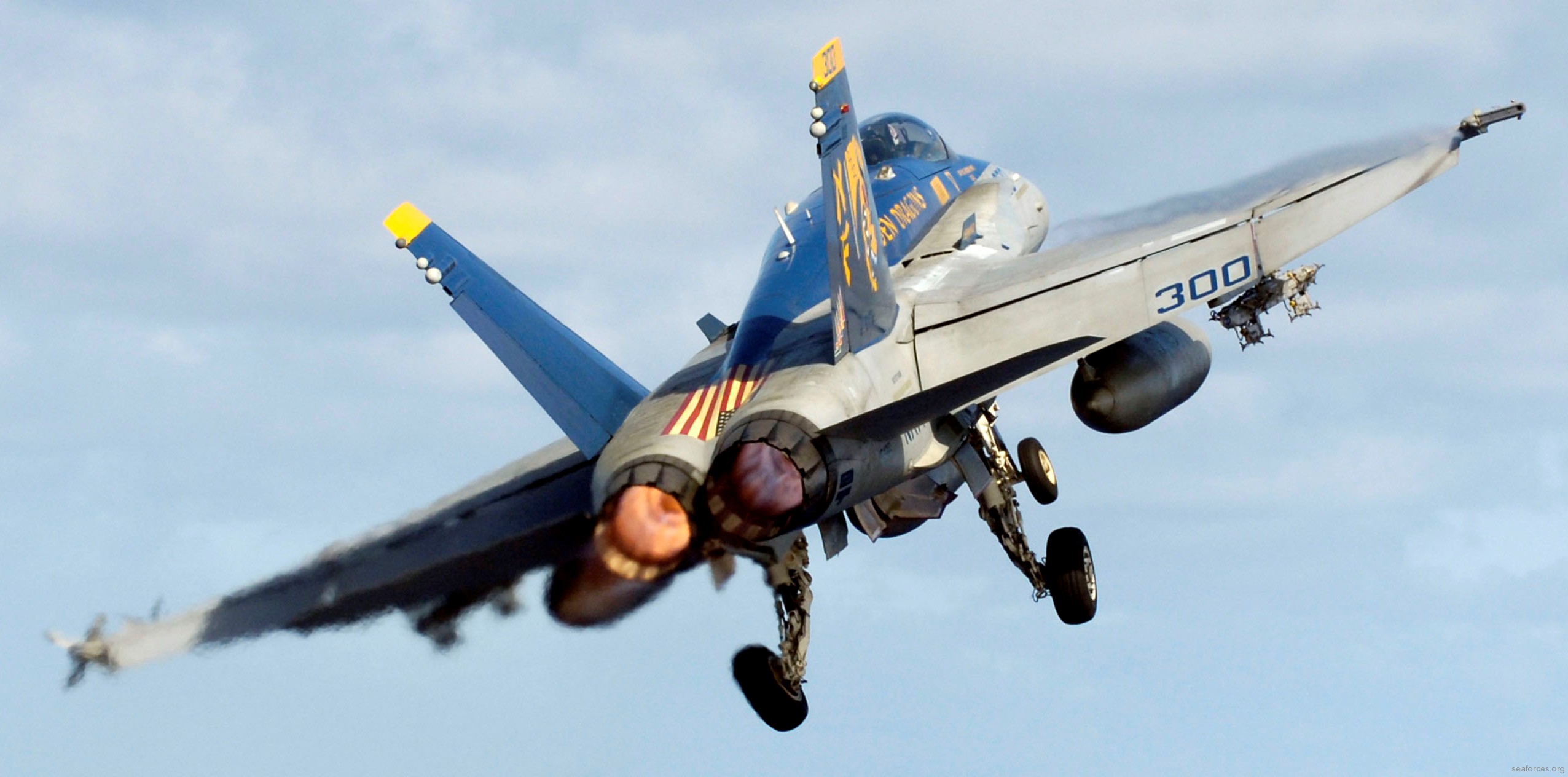 F/A-18C Hornet (VFA-192 / CVW-5) embarked on USS Kitty Hawk (CV 63) - September 2007 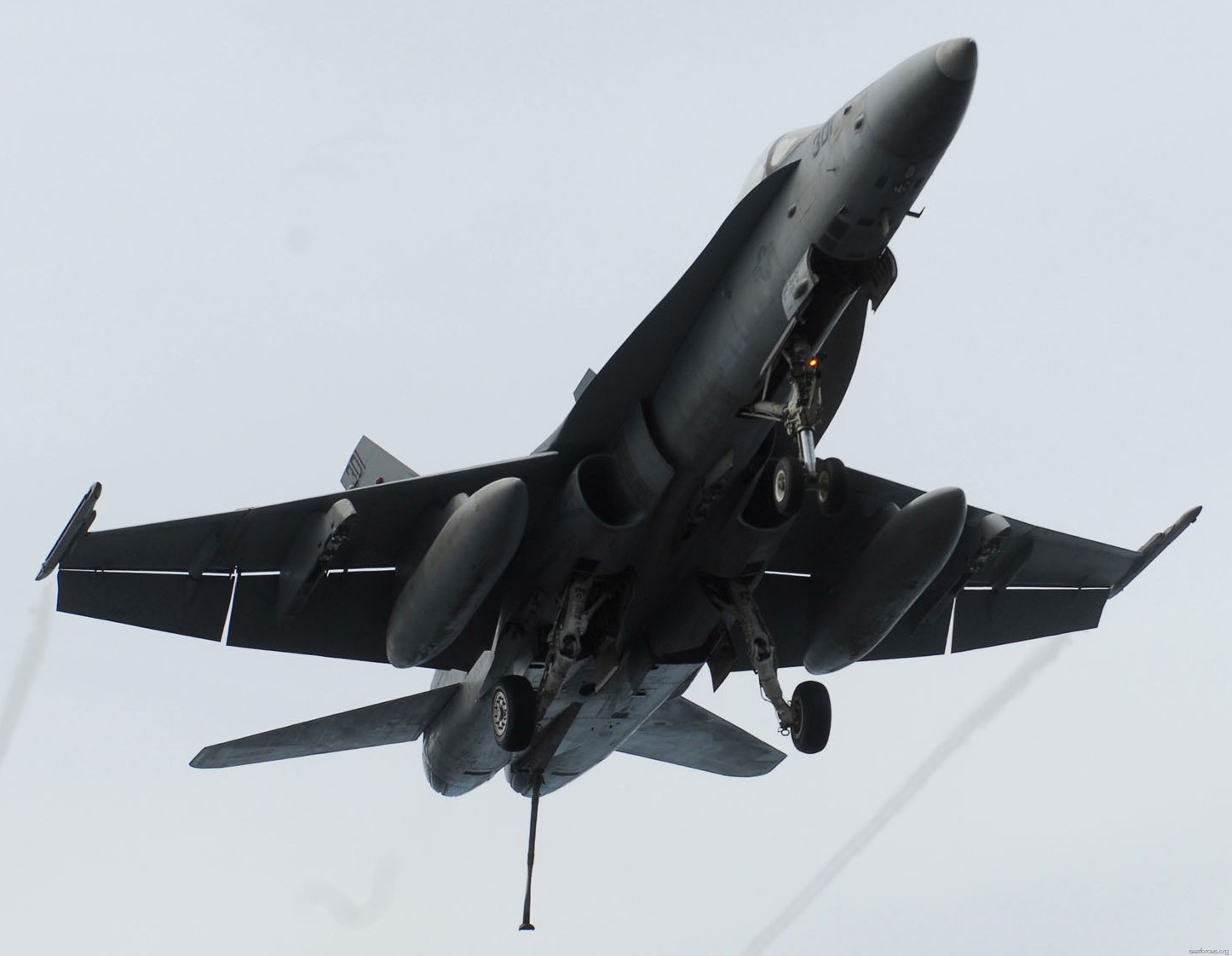 F/A-18C Hornet (VFA-192 / CVW-5) embarked on USS Kitty Hawk (CV 63) - 2007 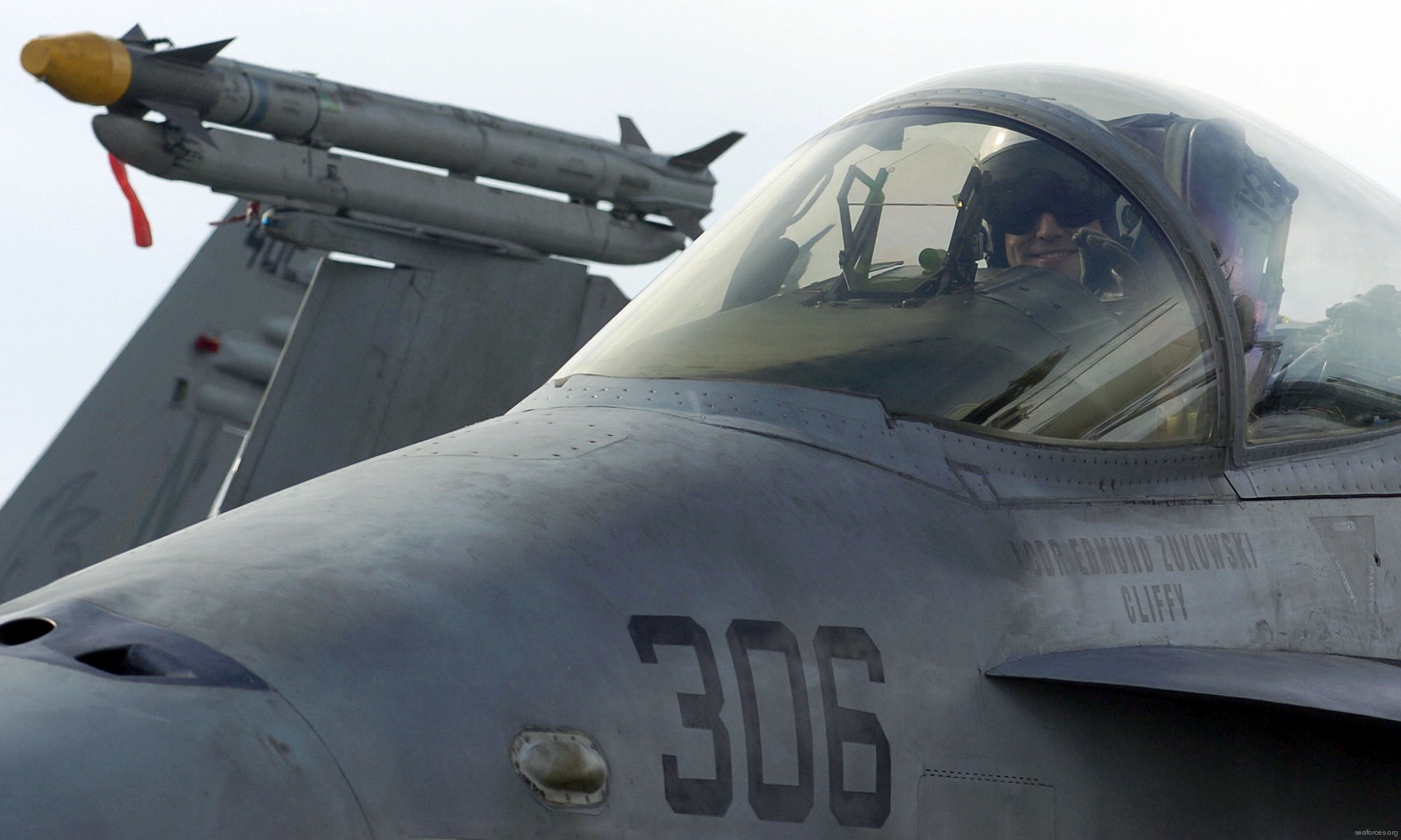 F/A-18C Hornet (VFA-192 / CVW-5) embarked on USS Kitty Hawk (CV 63) - September 2006  F/A-18C Hornet (VFA-192 / CVW-5) embarked on USS Kitty Hawk (CV 63) - September 2006 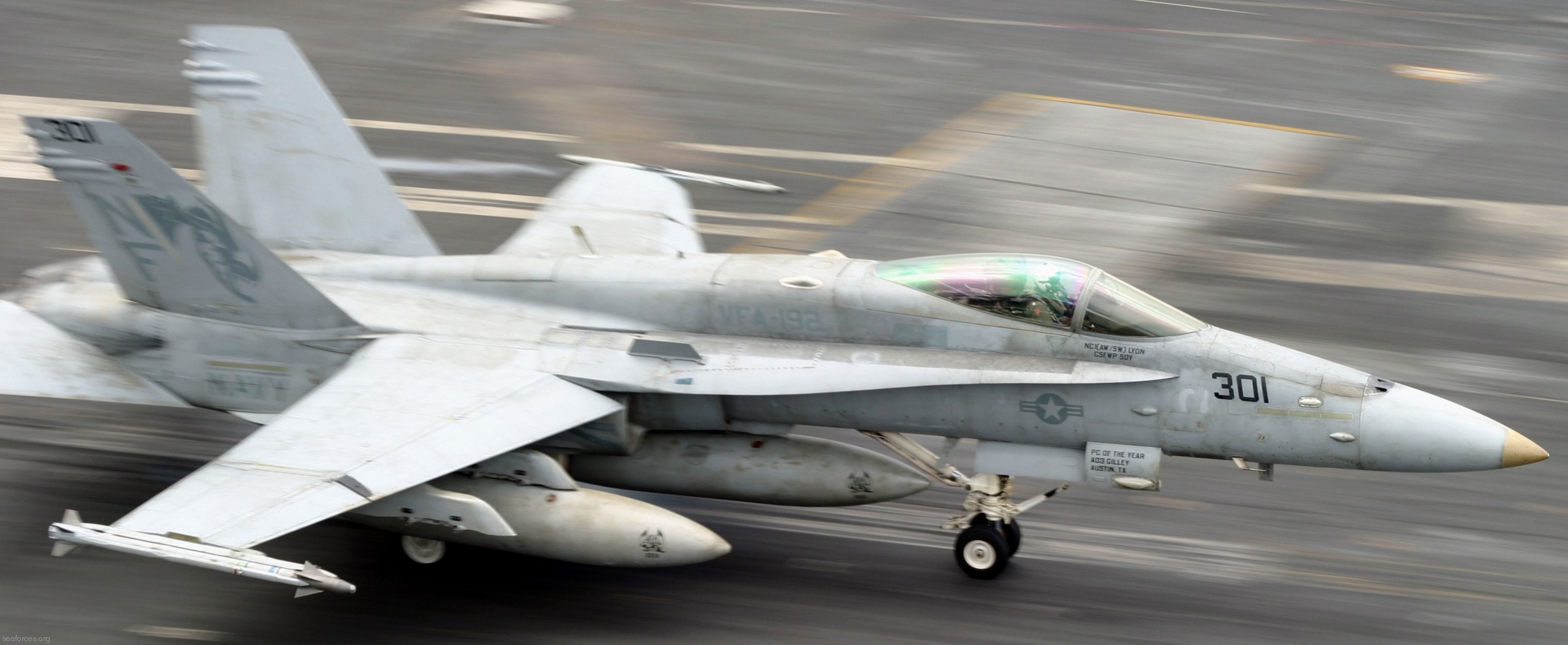 F/A-18C Hornet (VFA-192 / CVW-5) embarked on USS Kitty Hawk (CV 63) - August 2006 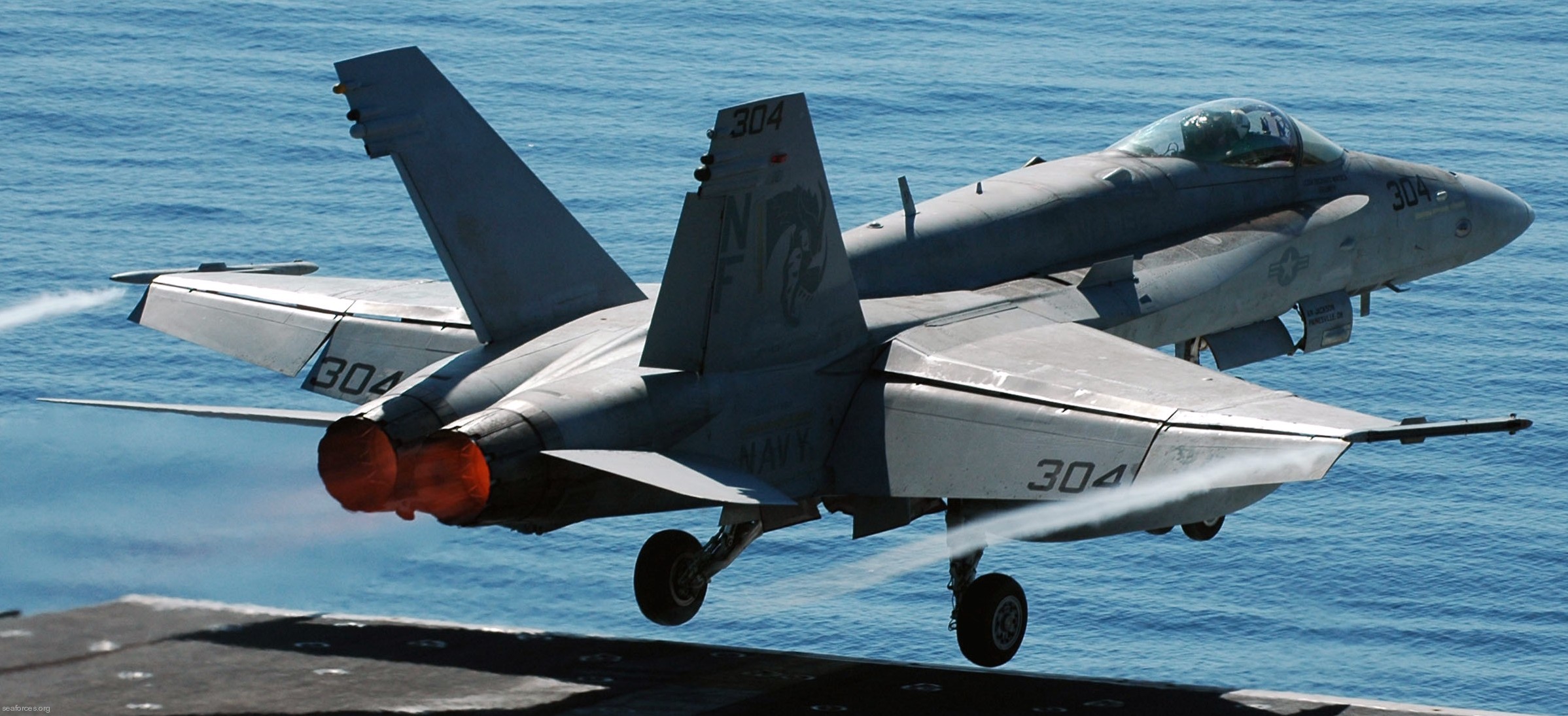 F/A-18C Hornet (VFA-192 / CVW-5) embarked on USS Kitty Hawk (CV 63) - August 2006 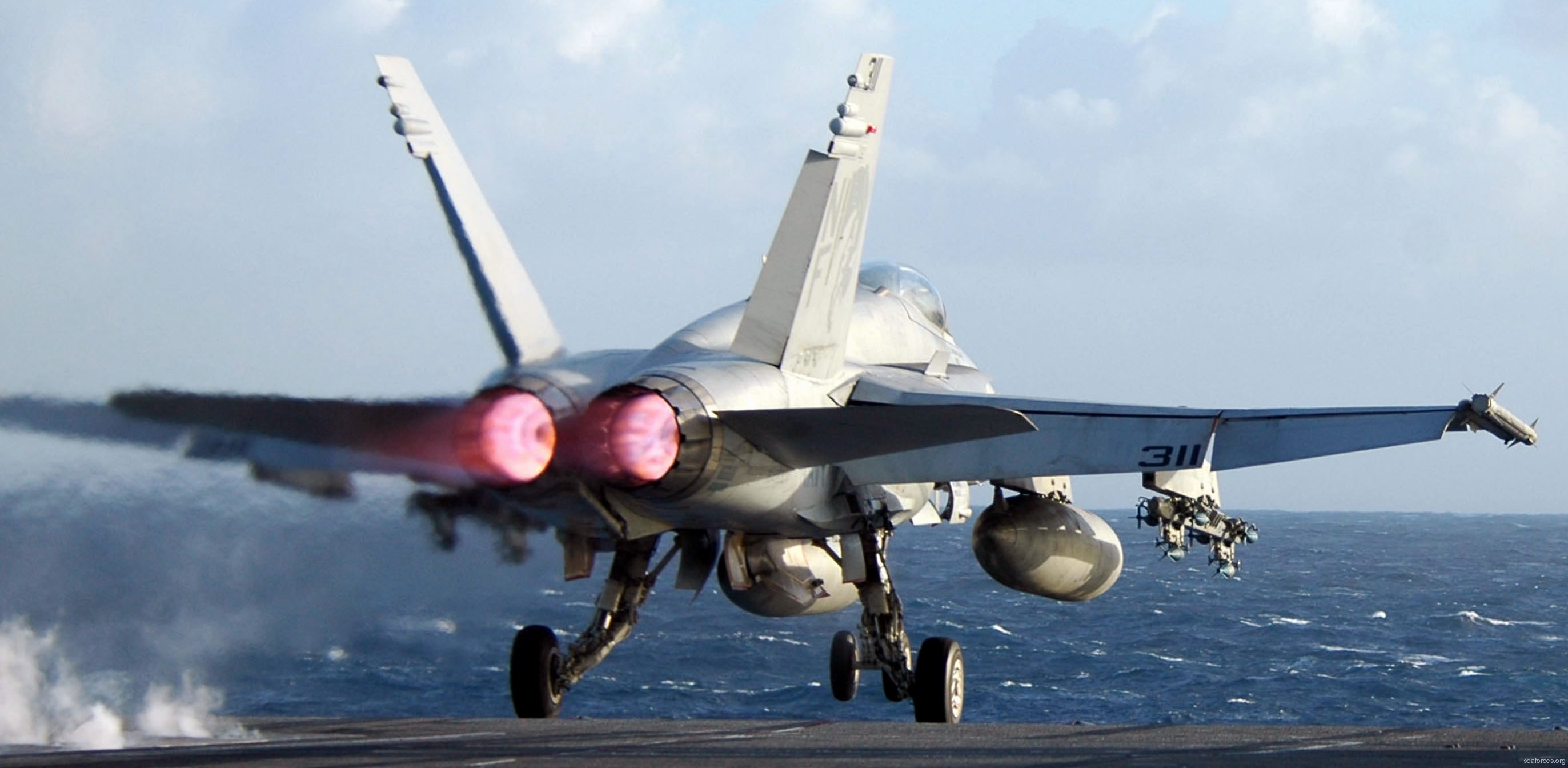 F/A-18C Hornet (VFA-192 / CVW-5) embarked on USS Kitty Hawk (CV 63) - August 2006 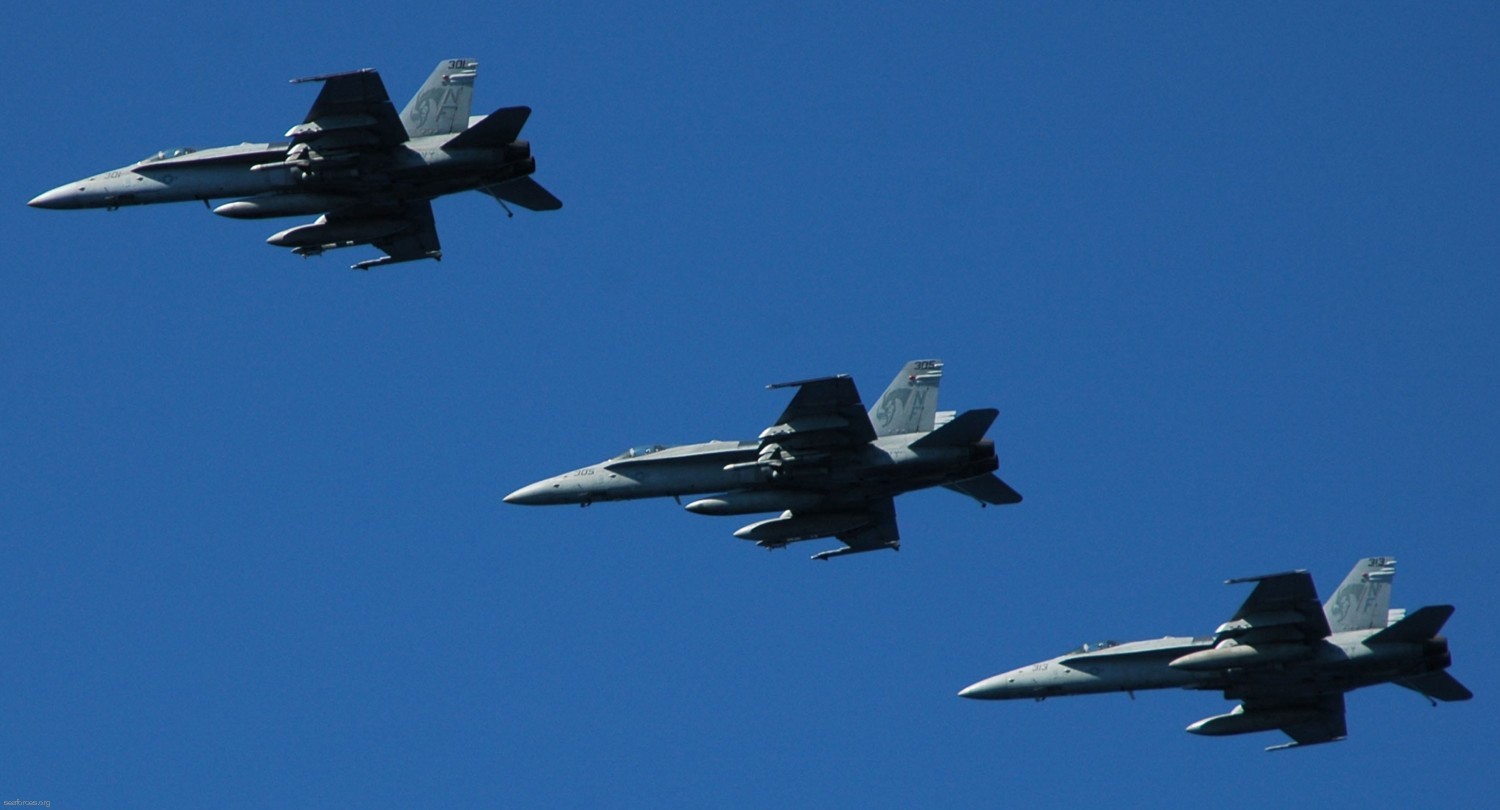 F/A-18C Hornet (VFA-192 / CVW-5) embarked on USS Kitty Hawk (CV 63) - August 2006 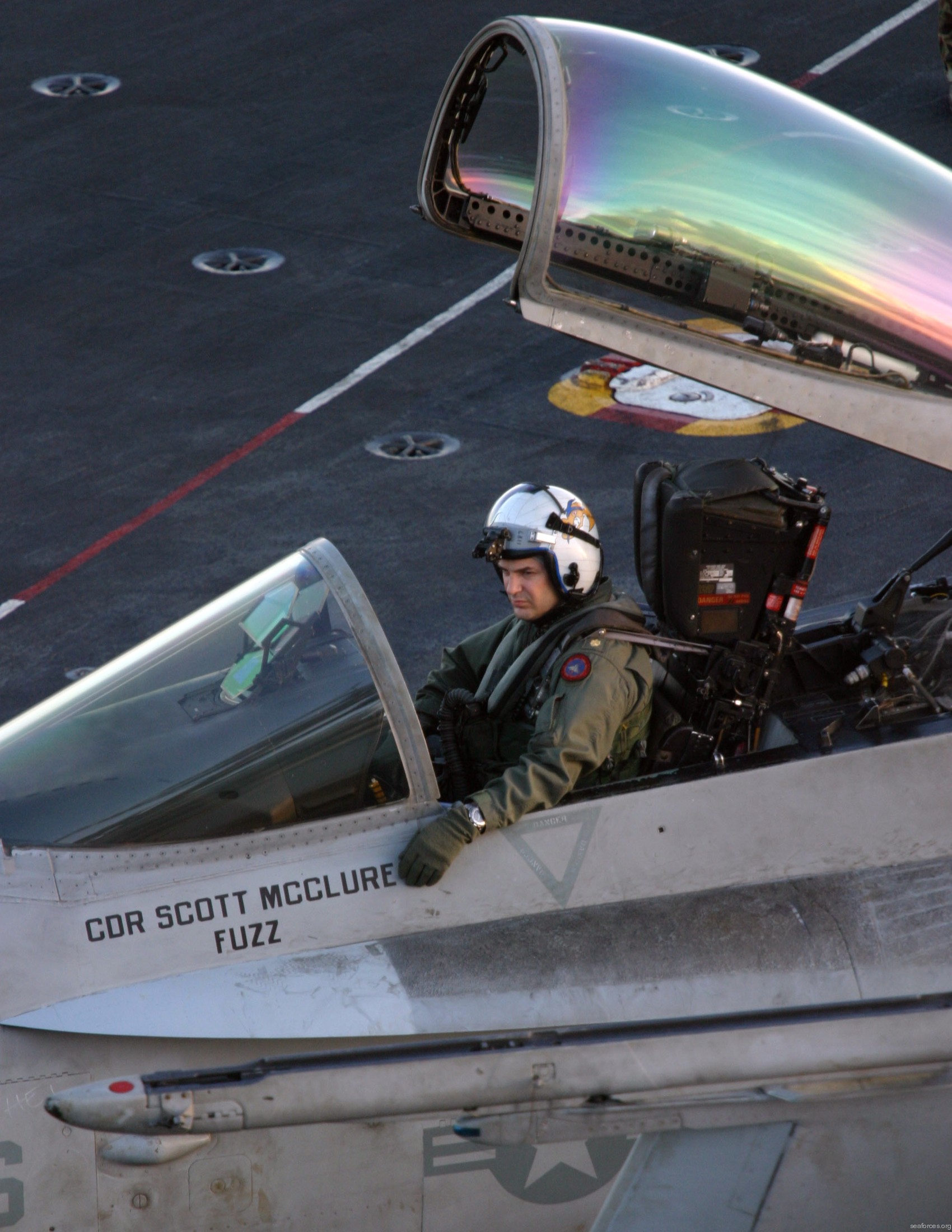 F/A-18C Hornet (VFA-192 / CVW-5) embarked on USS Kitty Hawk (CV 63) - July 2006 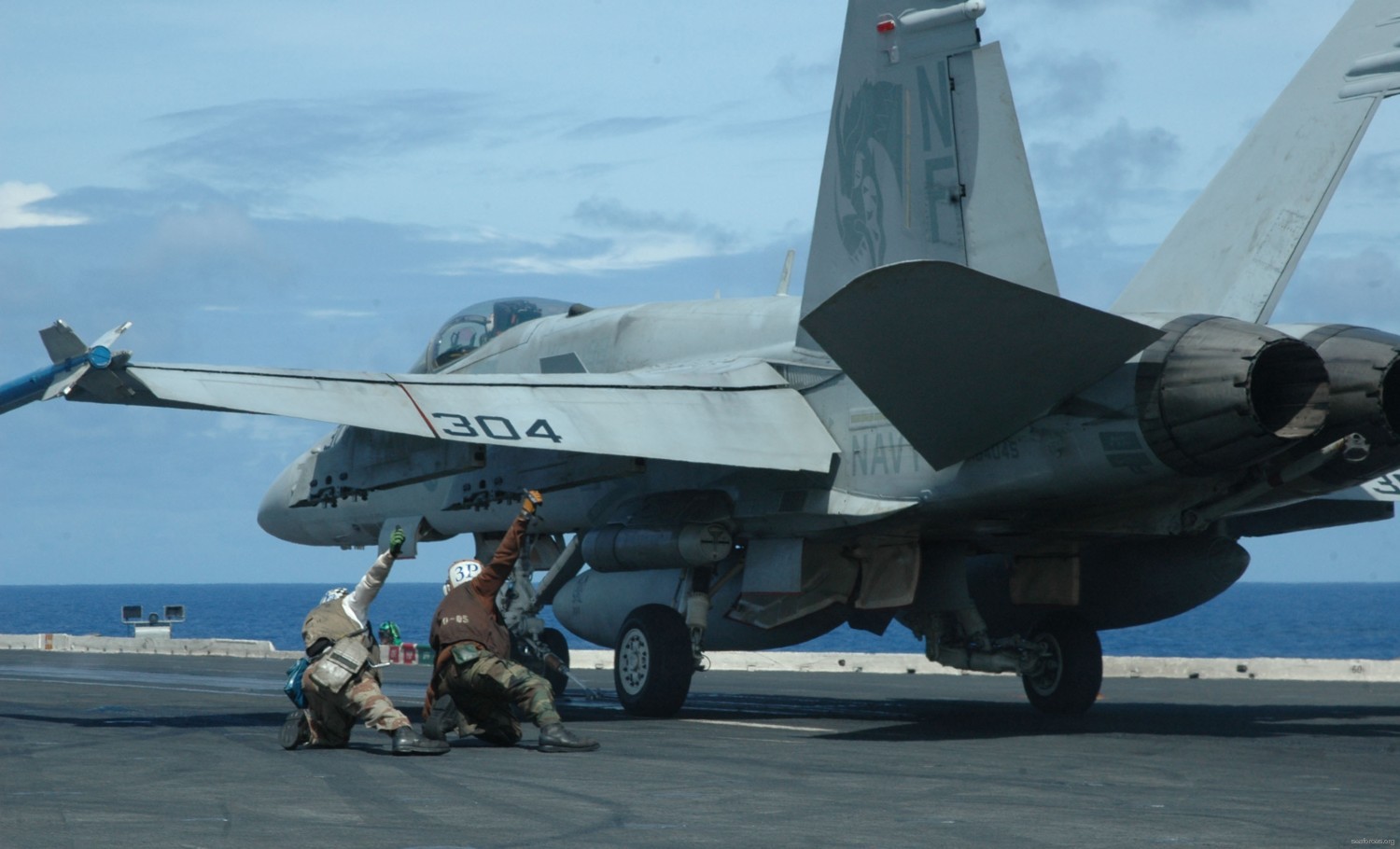 F/A-18C Hornet (VFA-192 / CVW-5) embarked on USS Kitty Hawk (CV 63) - June 2006 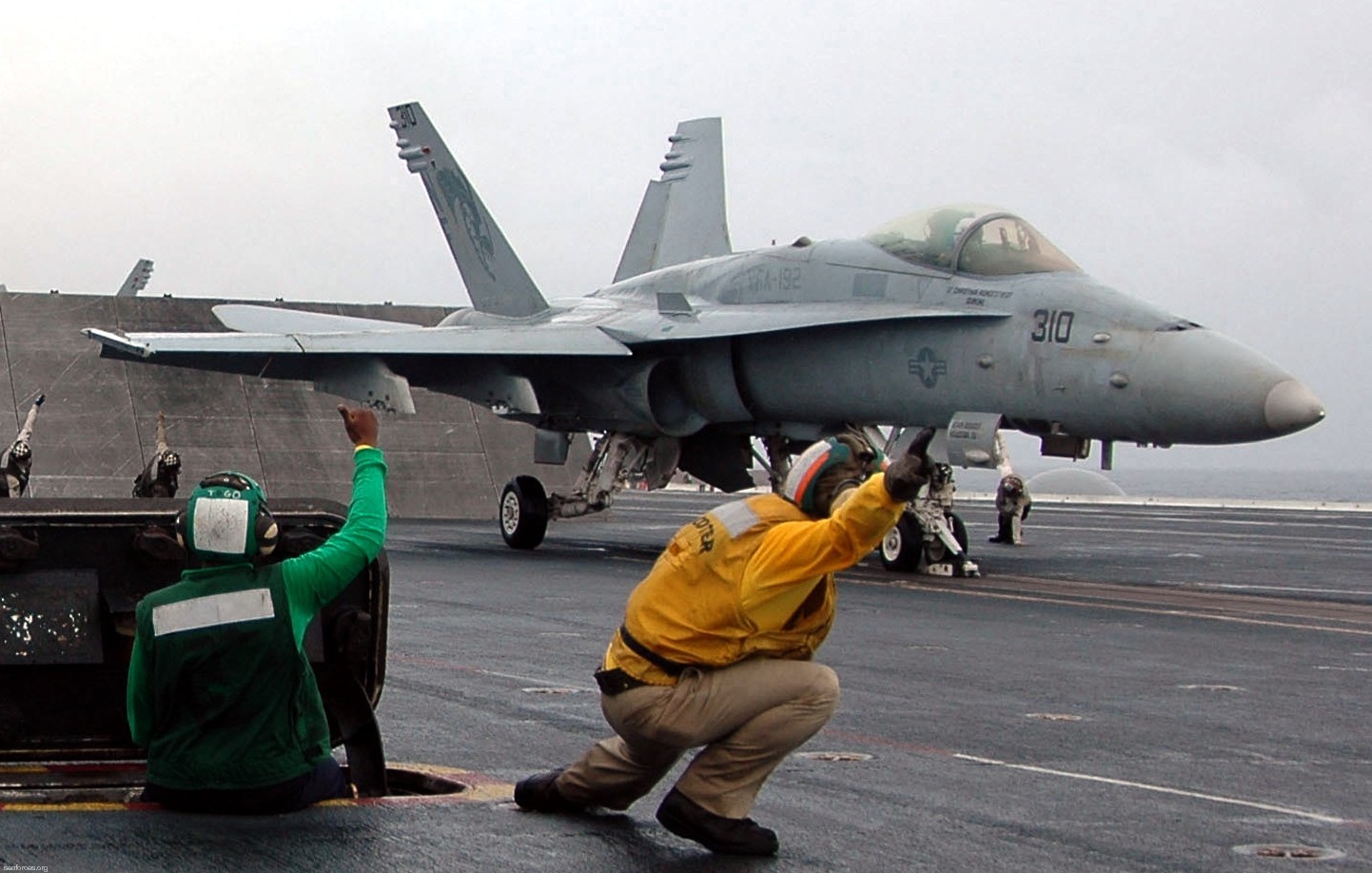 F/A-18C Hornet (VFA-192 / CVW-5) embarked on USS Kitty Hawk (CV 63) - 2006 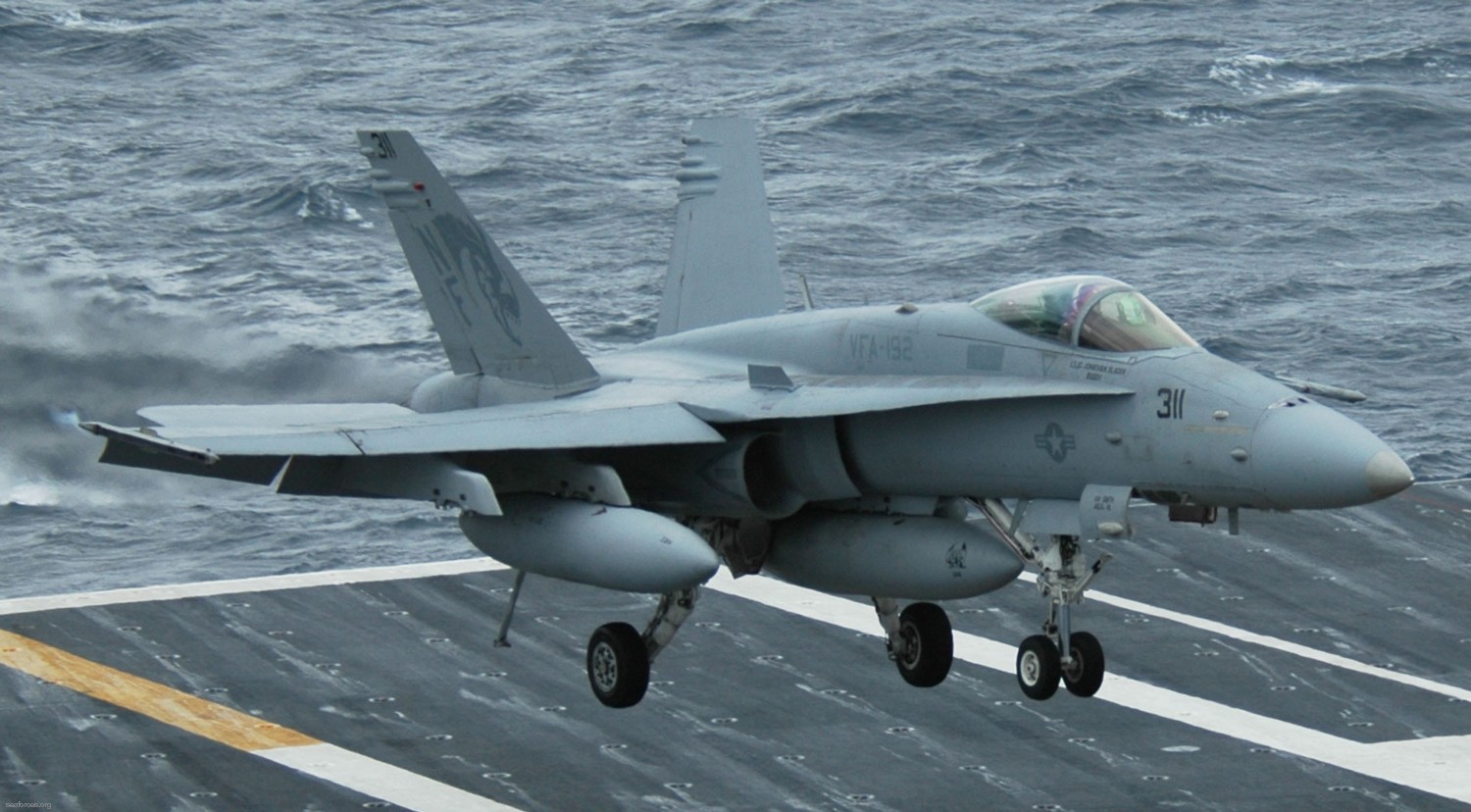 F/A-18C Hornet (VFA-192 / CVW-5) embarked on USS Kitty Hawk (CV 63) - 2006 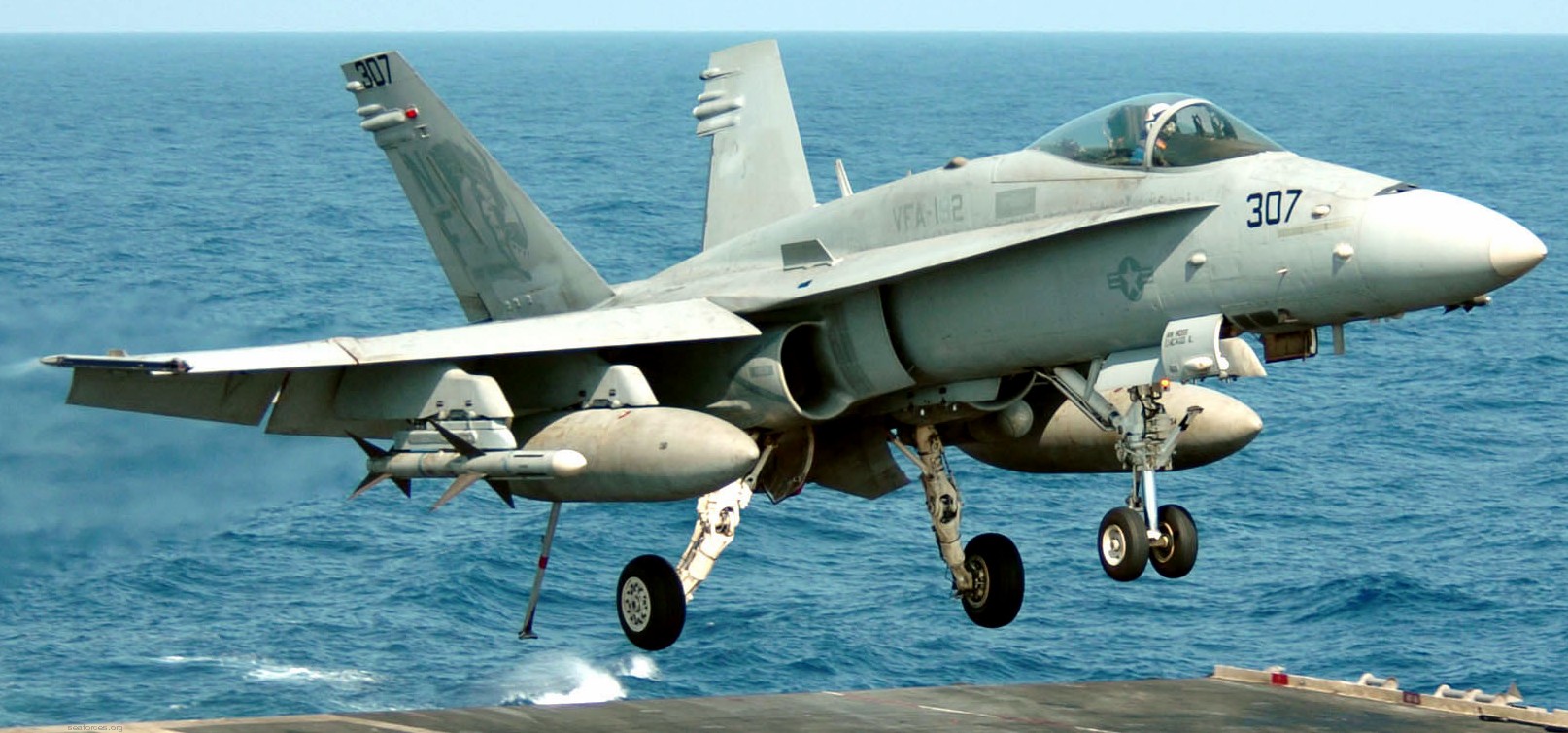 F/A-18C Hornet (VFA-192 / CVW-5) embarked on USS Kitty Hawk (CV 63) - December 2005 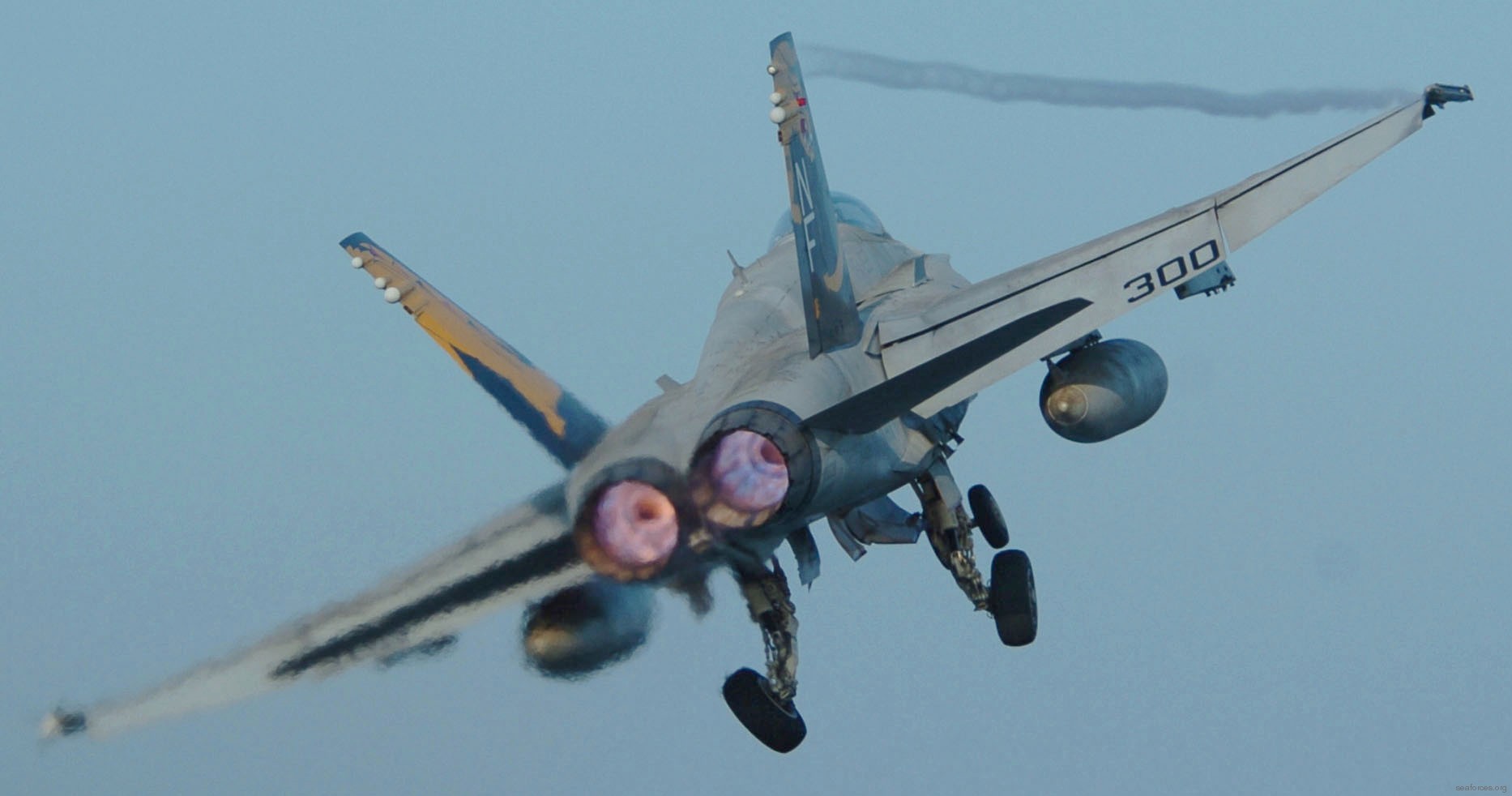 F/A-18C Hornet (VFA-192 / CVW-5) embarked on USS Kitty Hawk (CV 63) - November 2005 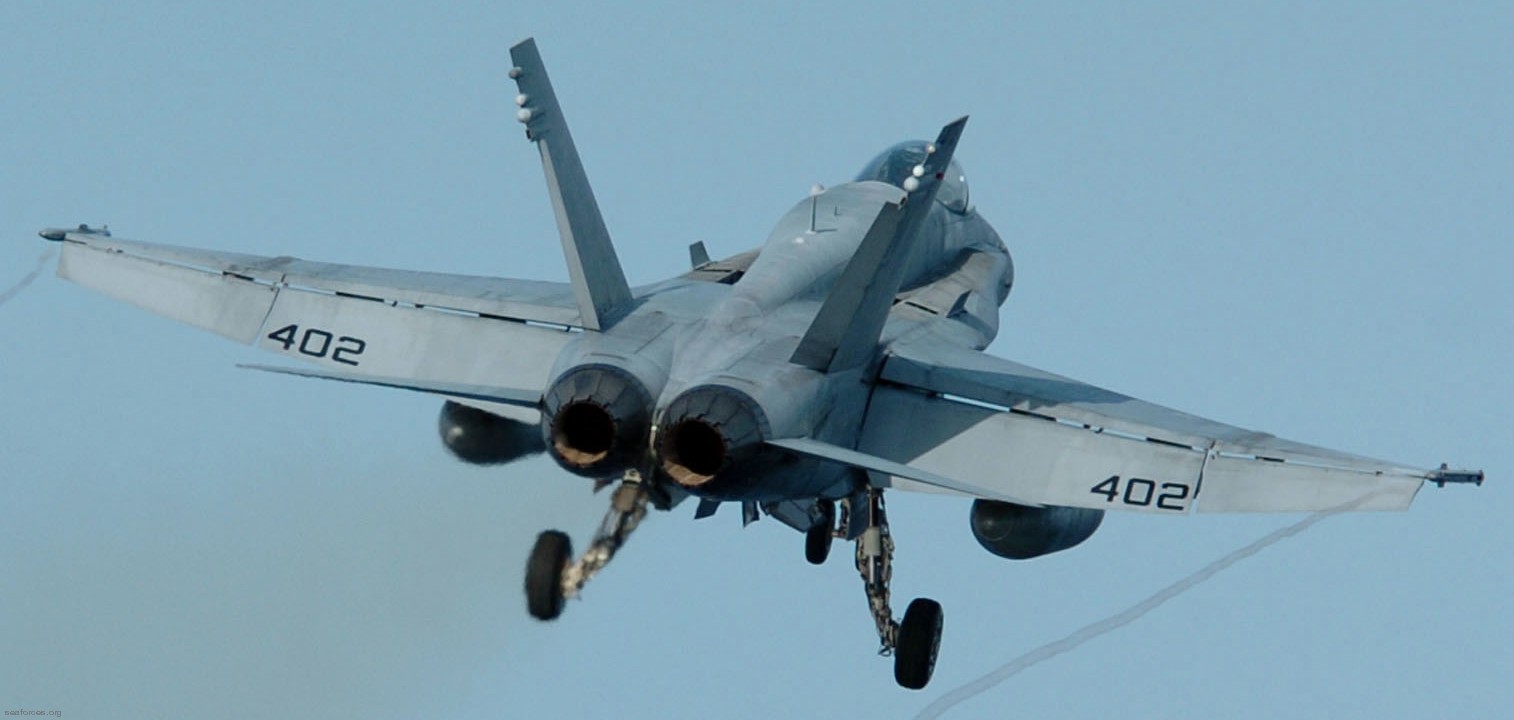 F/A-18C Hornet (VFA-192 / CVW-5) embarked on USS Kitty Hawk (CV 63) - October 2005 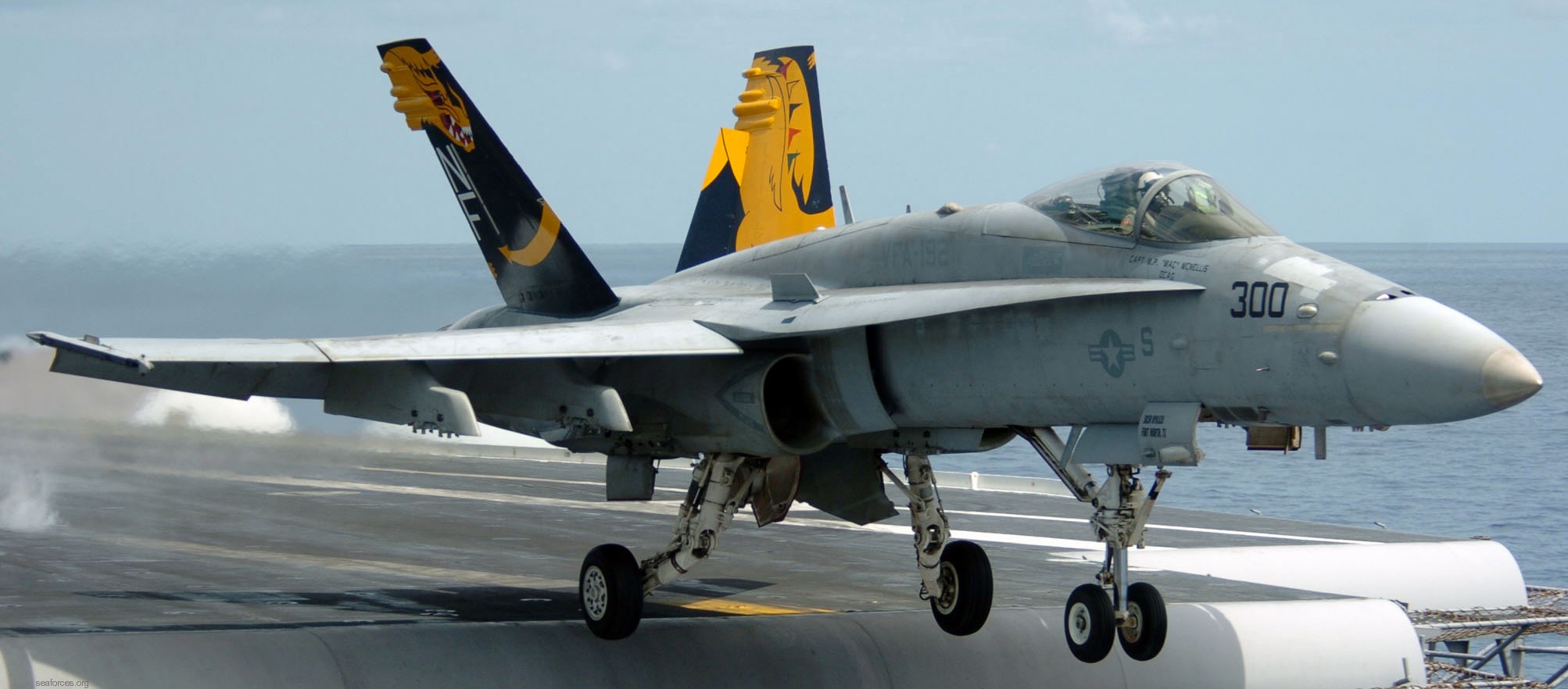 F/A-18C Hornet (VFA-192 / CVW-5) embarked on USS Kitty Hawk (CV 63) - August 2005 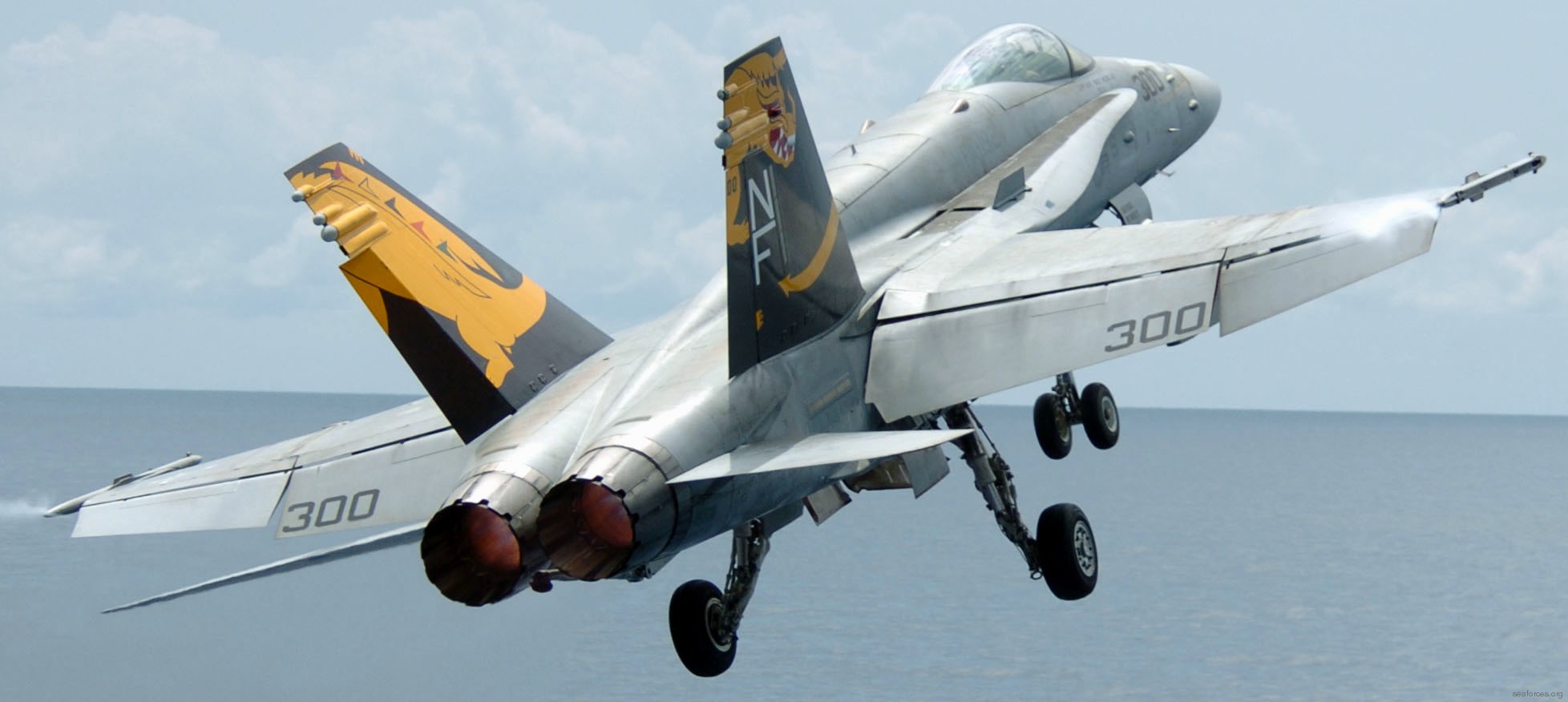 F/A-18C Hornet (VFA-192 / CVW-5) embarked on USS Kitty Hawk (CV 63) - August 2005 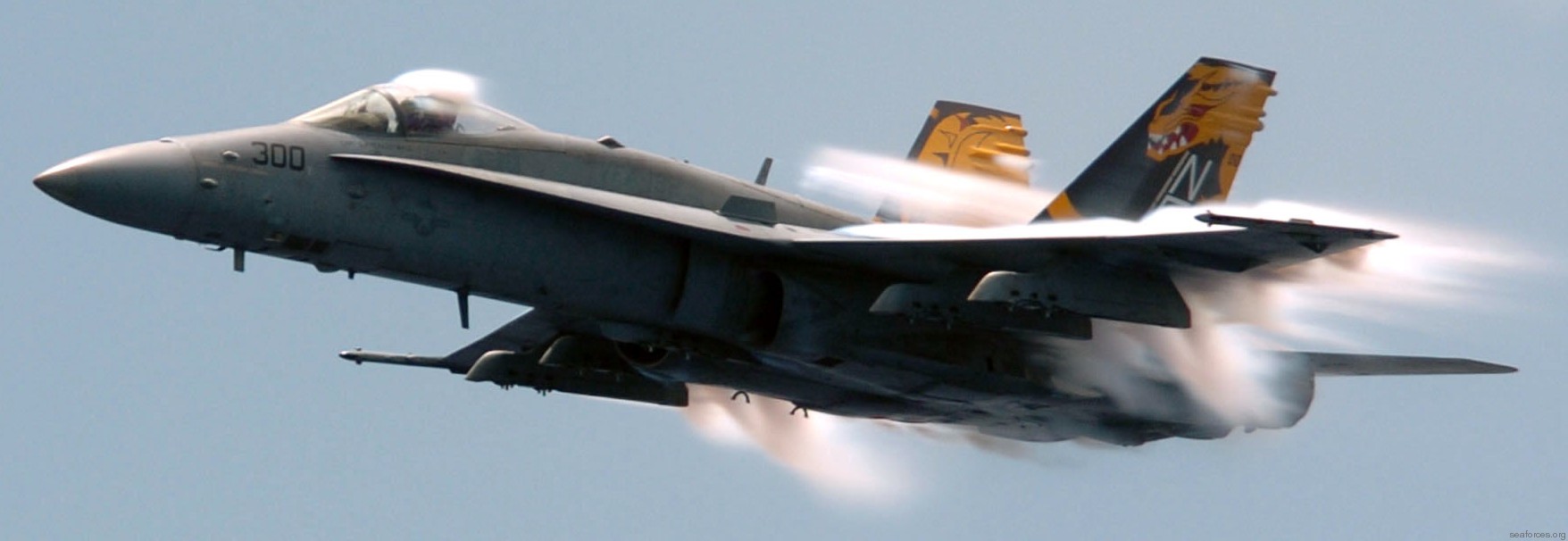 F/A-18C Hornet (VFA-192 / CVW-5) embarked on USS Kitty Hawk (CV 63) - August 2005 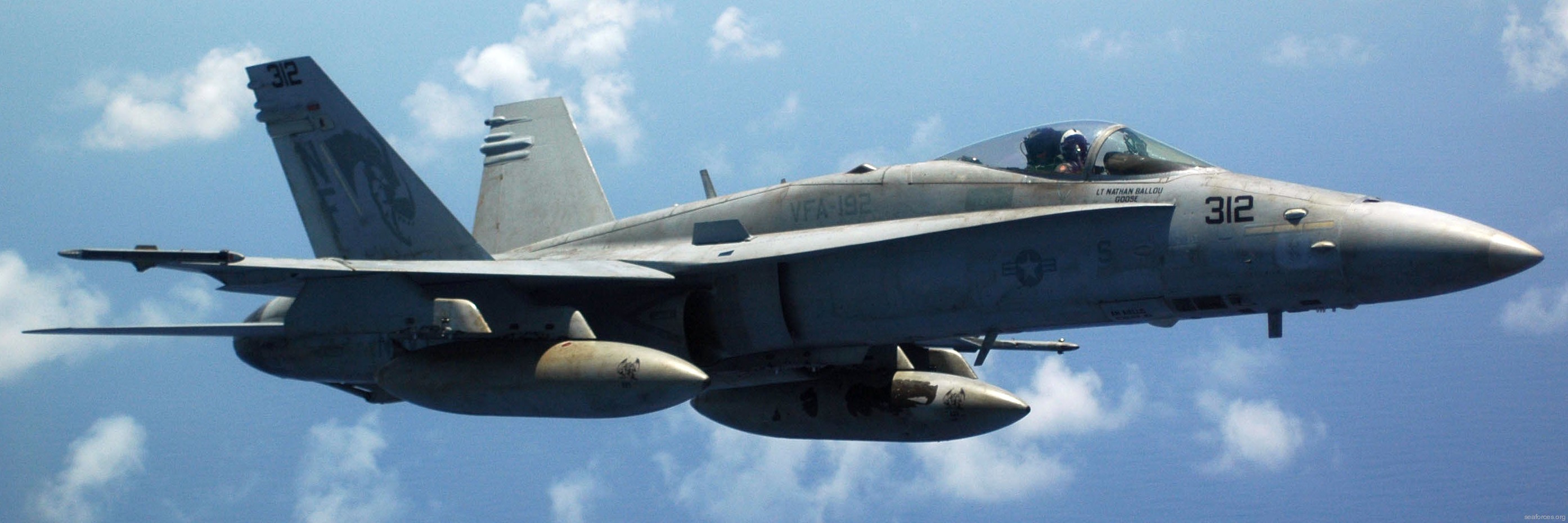 F/A-18C Hornet (VFA-192 / CVW-5) embarked on USS Kitty Hawk (CV 63) - August 2005 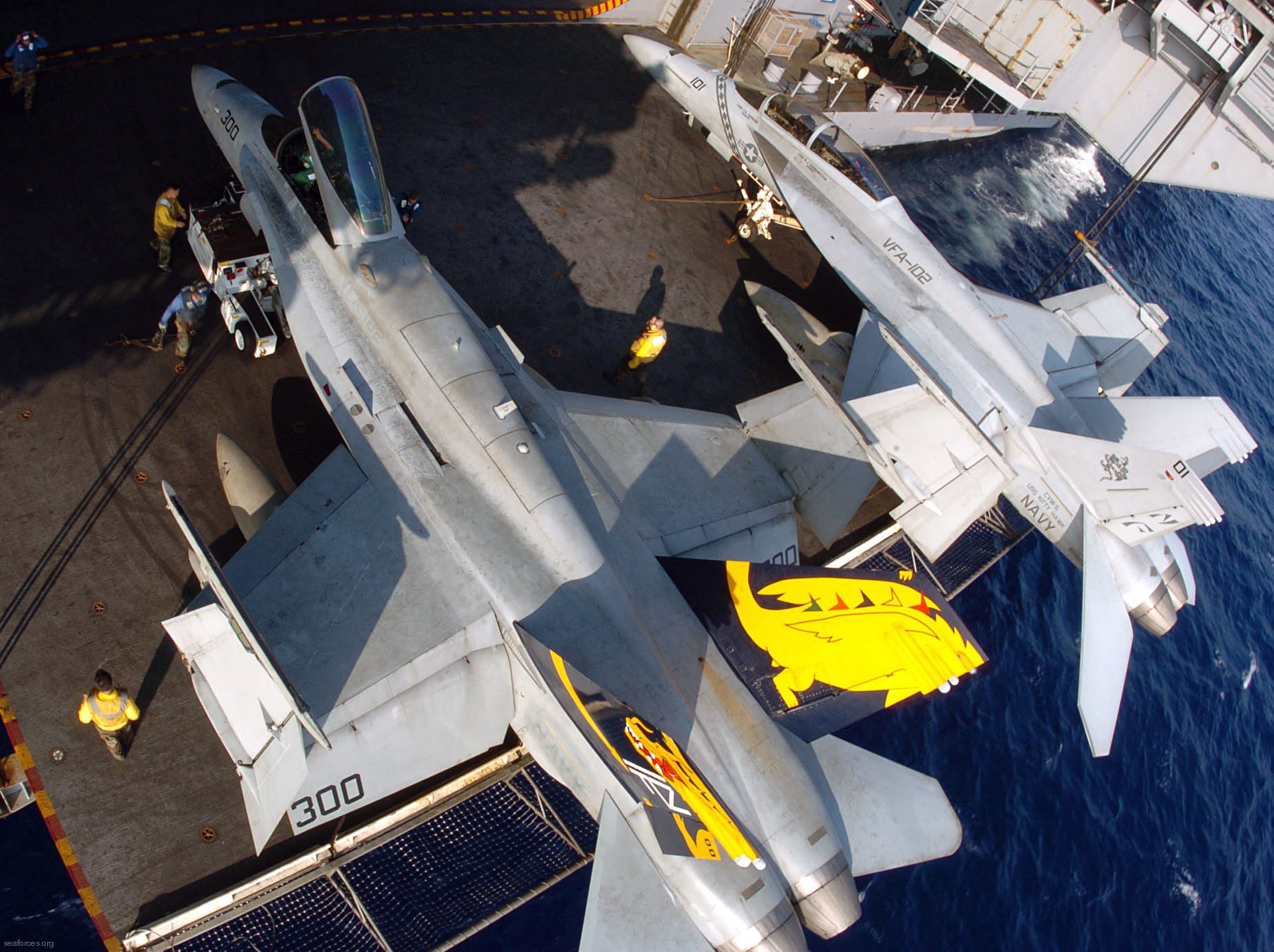 F/A-18C Hornet (VFA-192 / CVW-5) with a F/A-18F Super Hornet (VFA-102) embarked on USS Kitty Hawk (CV 63) - August 2005 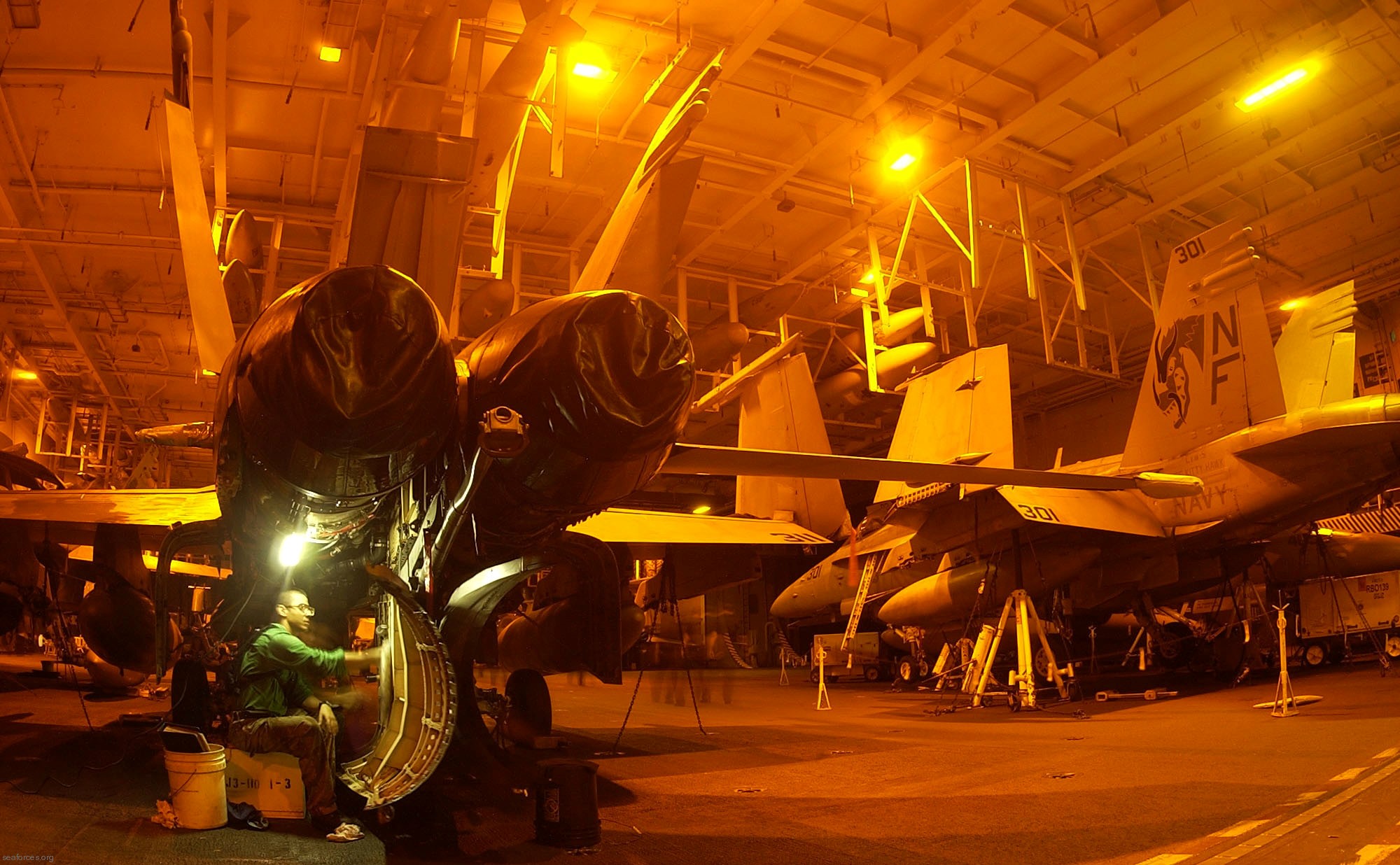 F/A-18C Hornet (VFA-192 / CVW-5) embarked on USS Kitty Hawk (CV 63) - August 2004  F/A-18C Hornet (VFA-192 / CVW-5) embarked on USS Kitty Hawk (CV 63) - August 2004  F/A-18C Hornet (VFA-192 / CVW-5) embarked on USS Kitty Hawk (CV 63) - July 2004 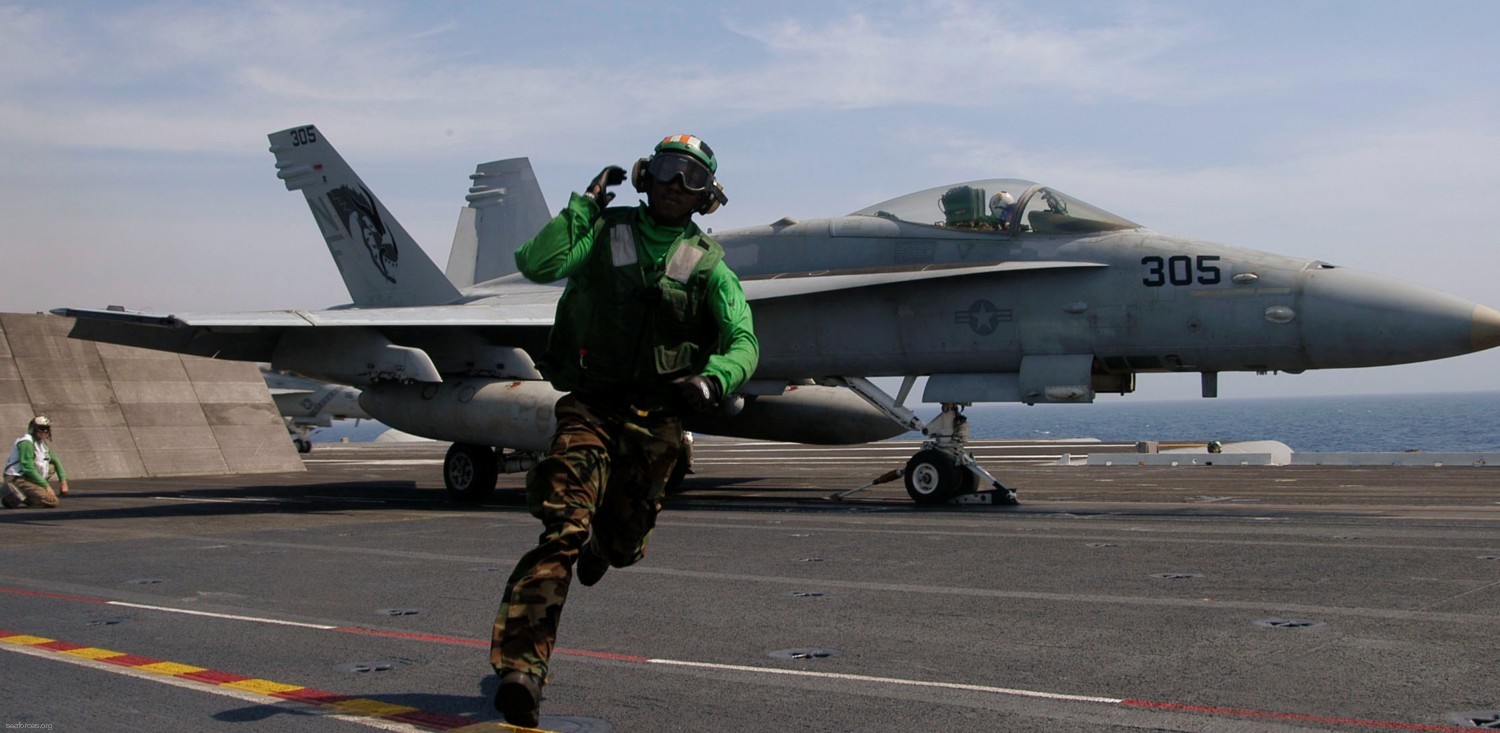 F/A-18C Hornet (VFA-192 / CVW-5) embarked on USS Kitty Hawk (CV 63) - July 2004 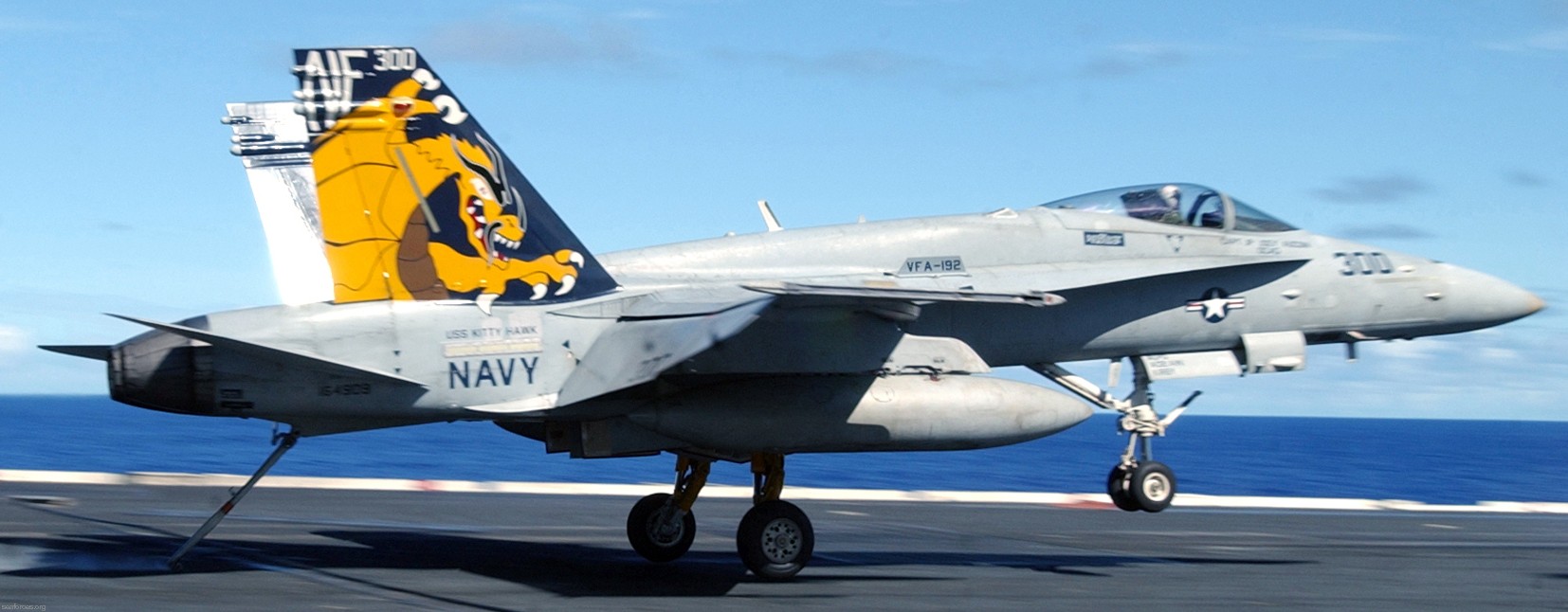 F/A-18C Hornet (VFA-192 / CVW-5) embarked on USS Kitty Hawk (CV 63) - December 2003  F/A-18C Hornet (VFA-192 / CVW-5) embarked on USS Kitty Hawk (CV 63) - November 2003 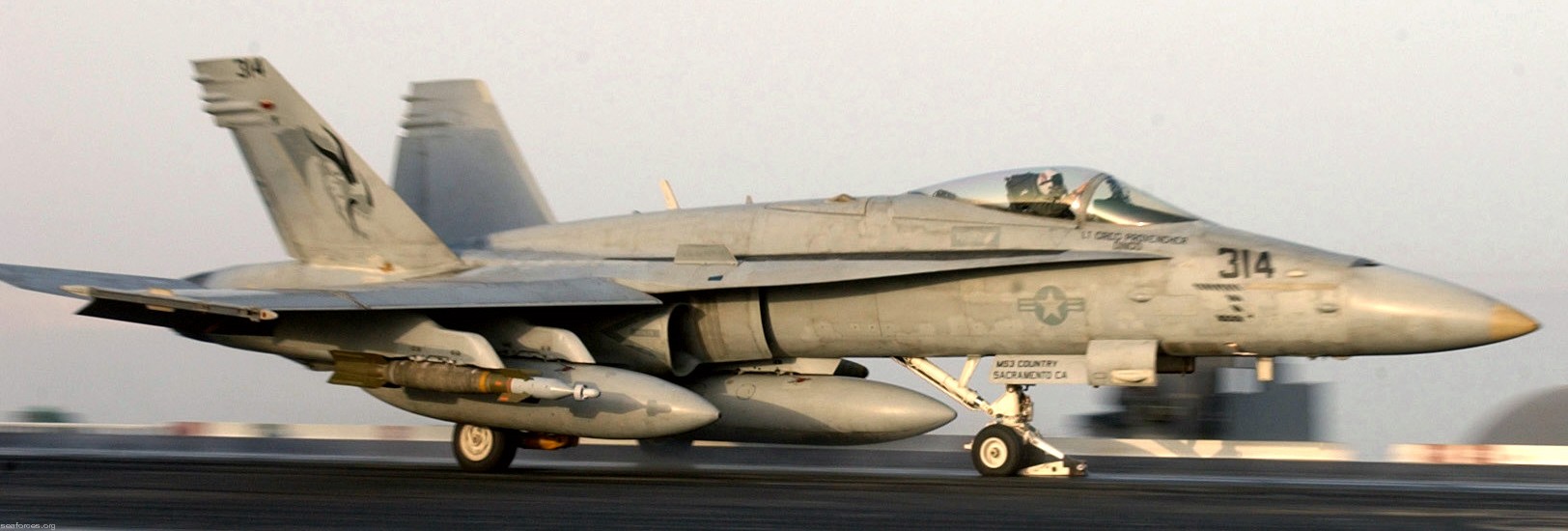 F/A-18C Hornet (VFA-192 / CVW-5) embarked on USS Kitty Hawk (CV 63) - April 2003  F/A-18C Hornet (VFA-192 / CVW-5) embarked on USS Kitty Hawk (CV 63) - March 2003 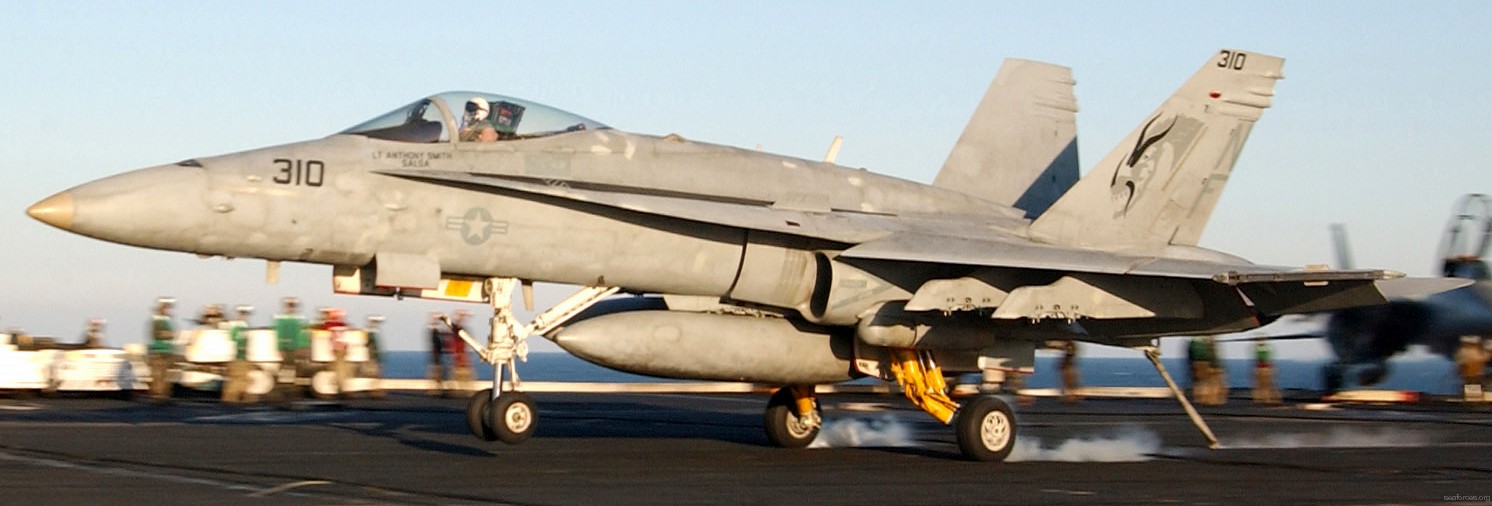 F/A-18C Hornet (VFA-192 / CVW-5) embarked on USS Kitty Hawk (CV 63) - February 2003  F/A-18C Hornet (VFA-192 / CVW-5) embarked on USS Kitty Hawk (CV 63) - February 2003 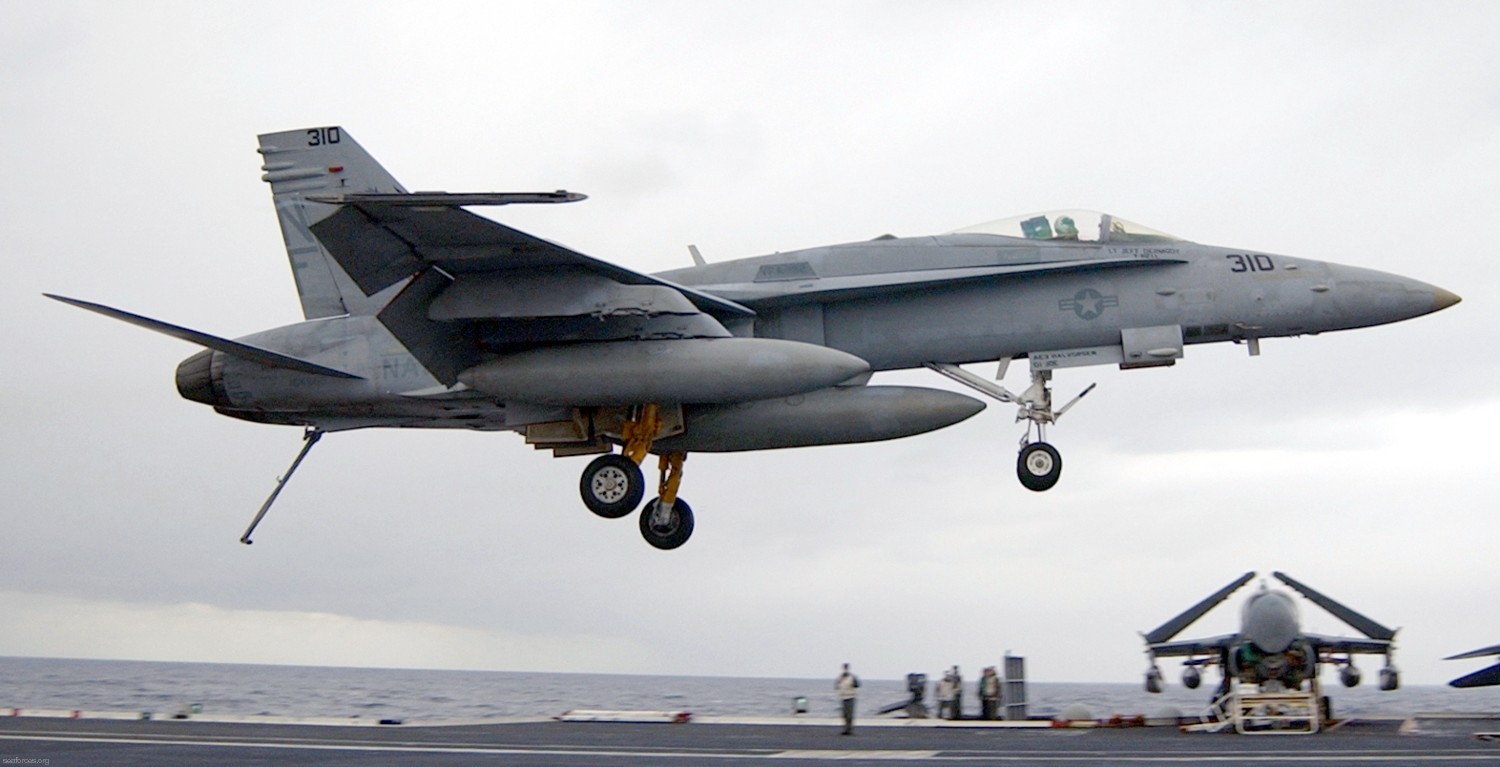 F/A-18C Hornet (VFA-192 / CVW-5) embarked on USS Kitty Hawk (CV 63) - January 2003 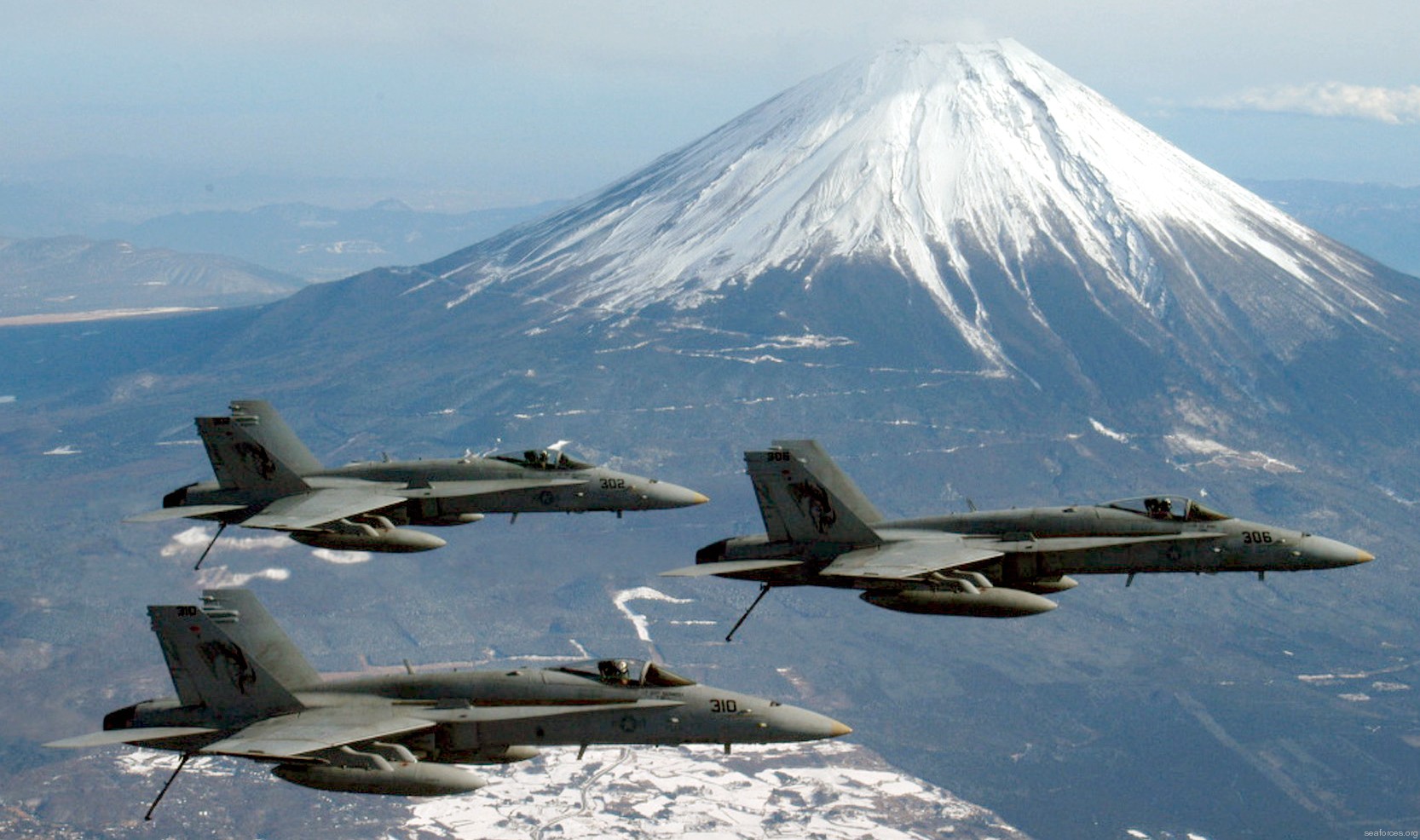 F/A-18C Hornet (VFA-192 / CVW-5) embarked on USS Kitty Hawk (CV 63) near Mount Fuji, Japan - December 2002 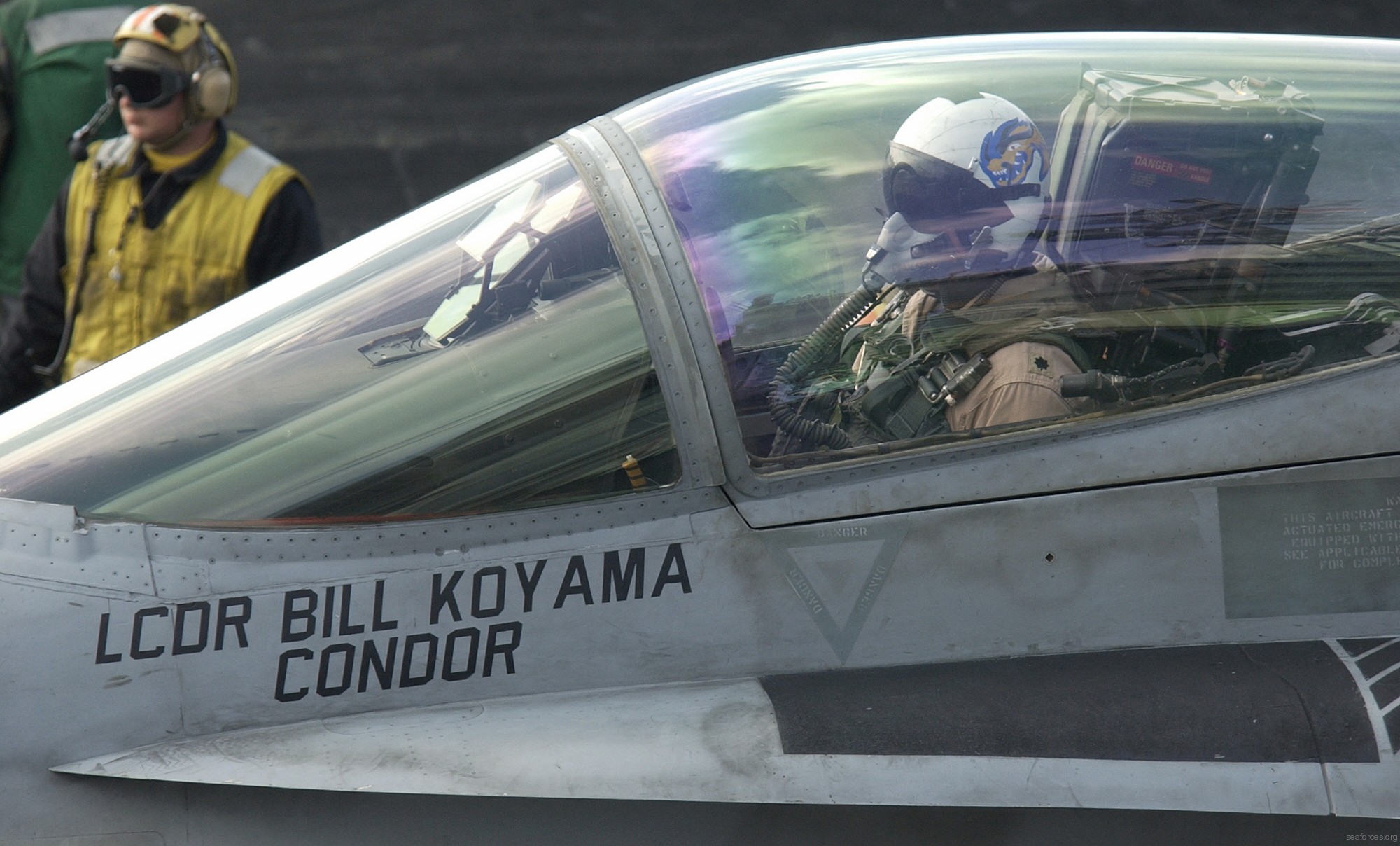 F/A-18C Hornet (VFA-192 / CVW-5) embarked on USS Kitty Hawk (CV 63) - November 2002 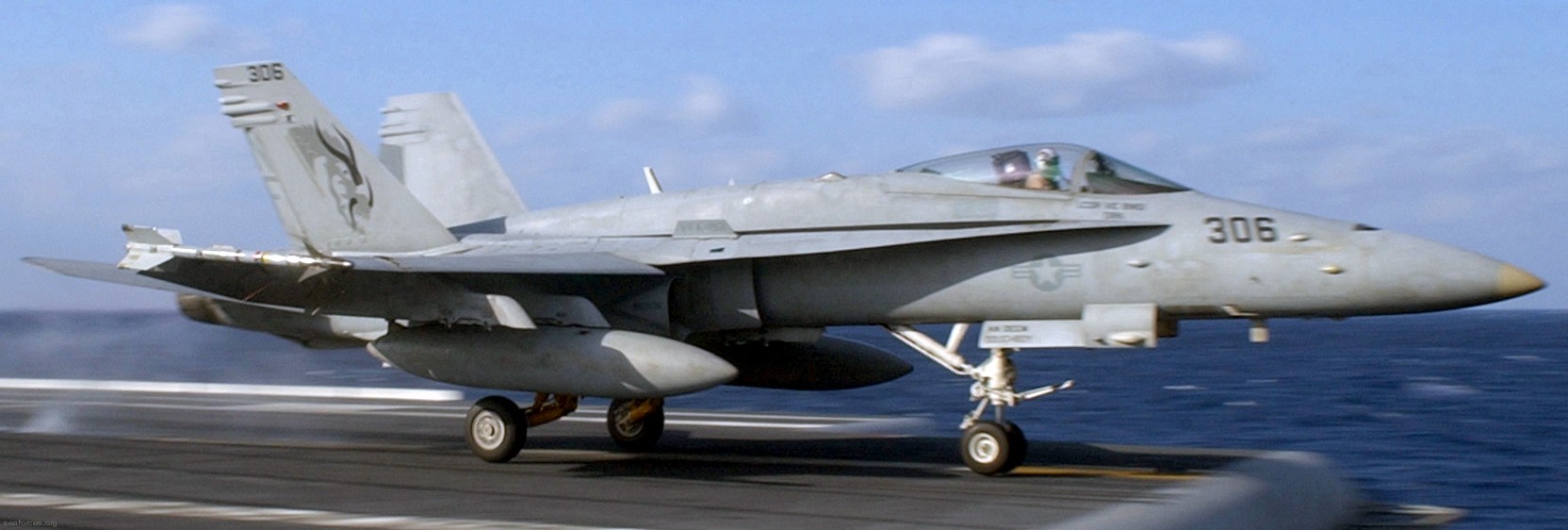 F/A-18C Hornet (VFA-192 / CVW-5) embarked on USS Kitty Hawk (CV 63) - November 2002  F/A-18C Hornet (VFA-192 / CVW-5) embarked on USS Kitty Hawk (CV 63) - November 2002 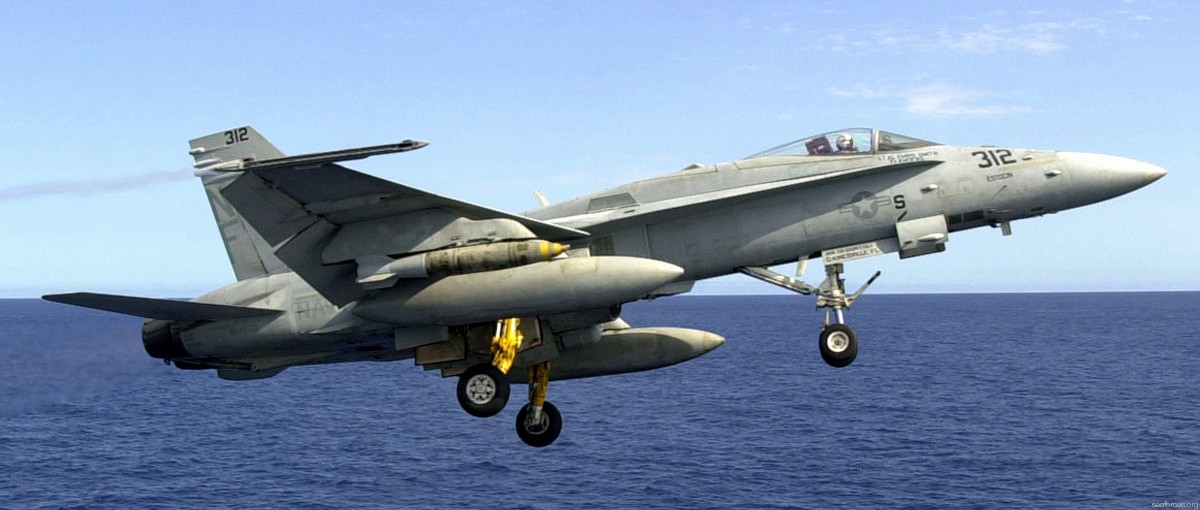 F/A-18C Hornet (VFA-192 / CVW-5) embarked on USS Kitty Hawk (CV 63) - April 2002 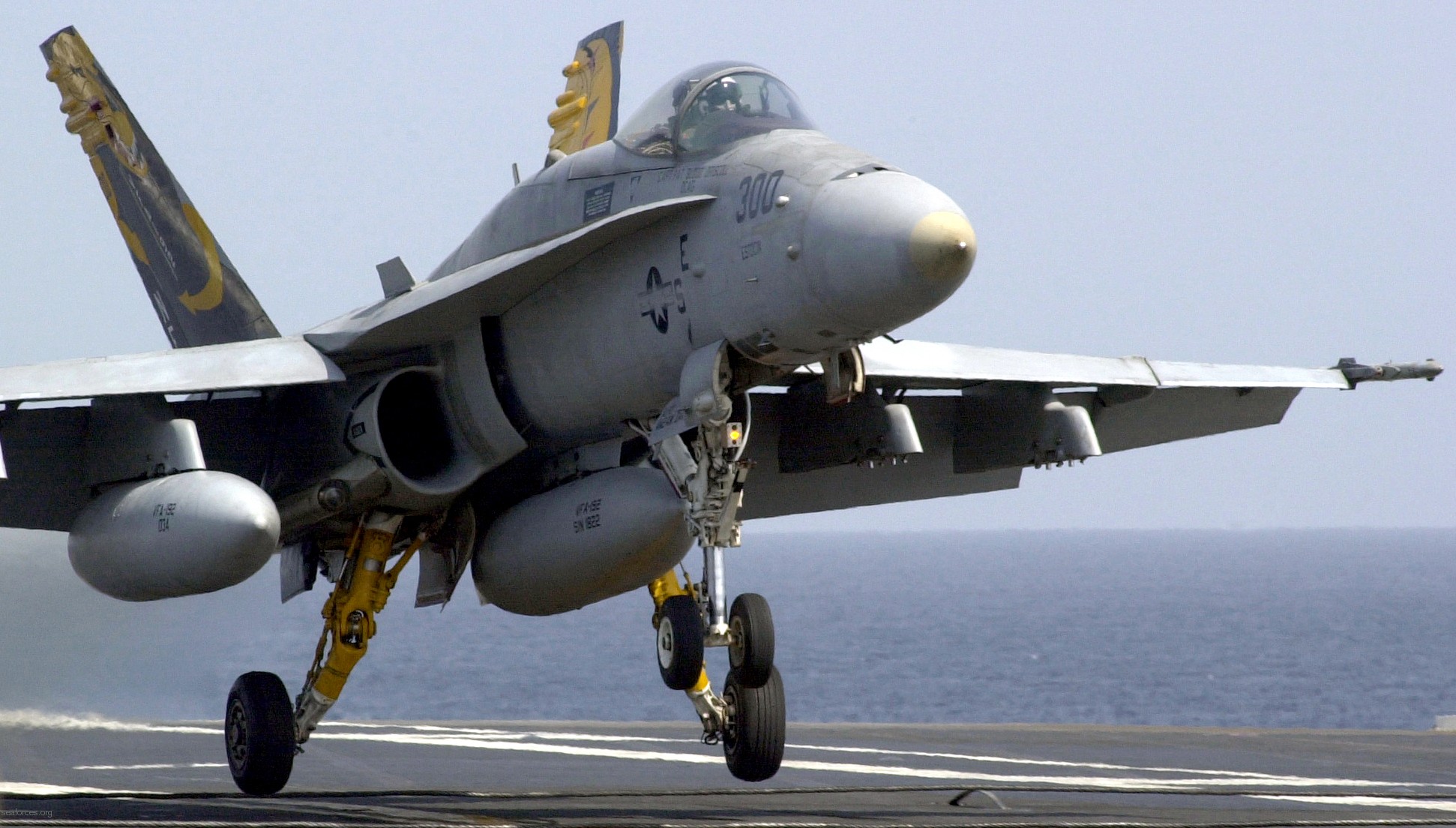 F/A-18C Hornet (VFA-192 / CVW-5) embarked on USS Kitty Hawk (CV 63) - March 2002 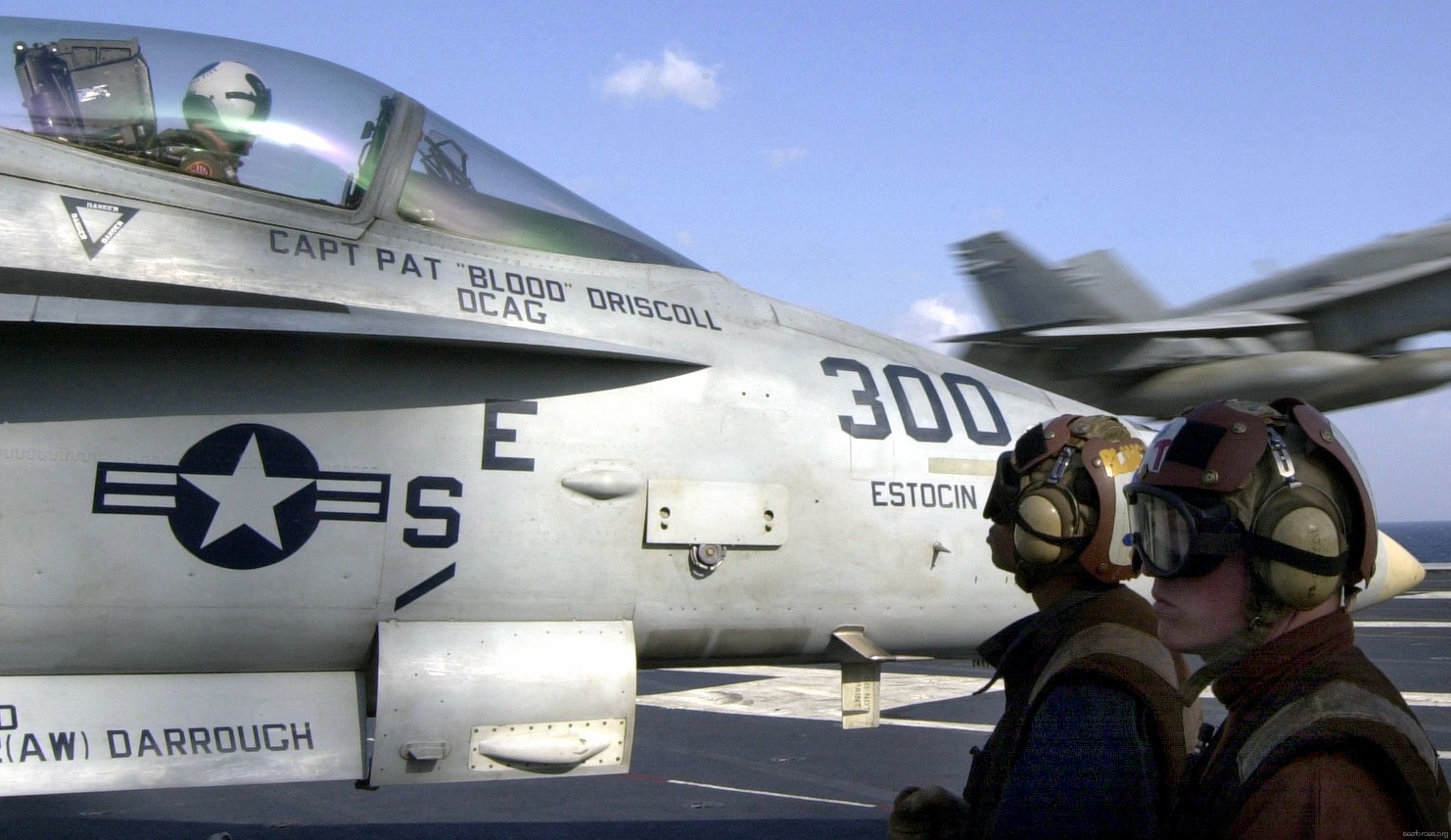 F/A-18C Hornet (VFA-192 / CVW-5) embarked on USS Kitty Hawk (CV 63) - March 2002 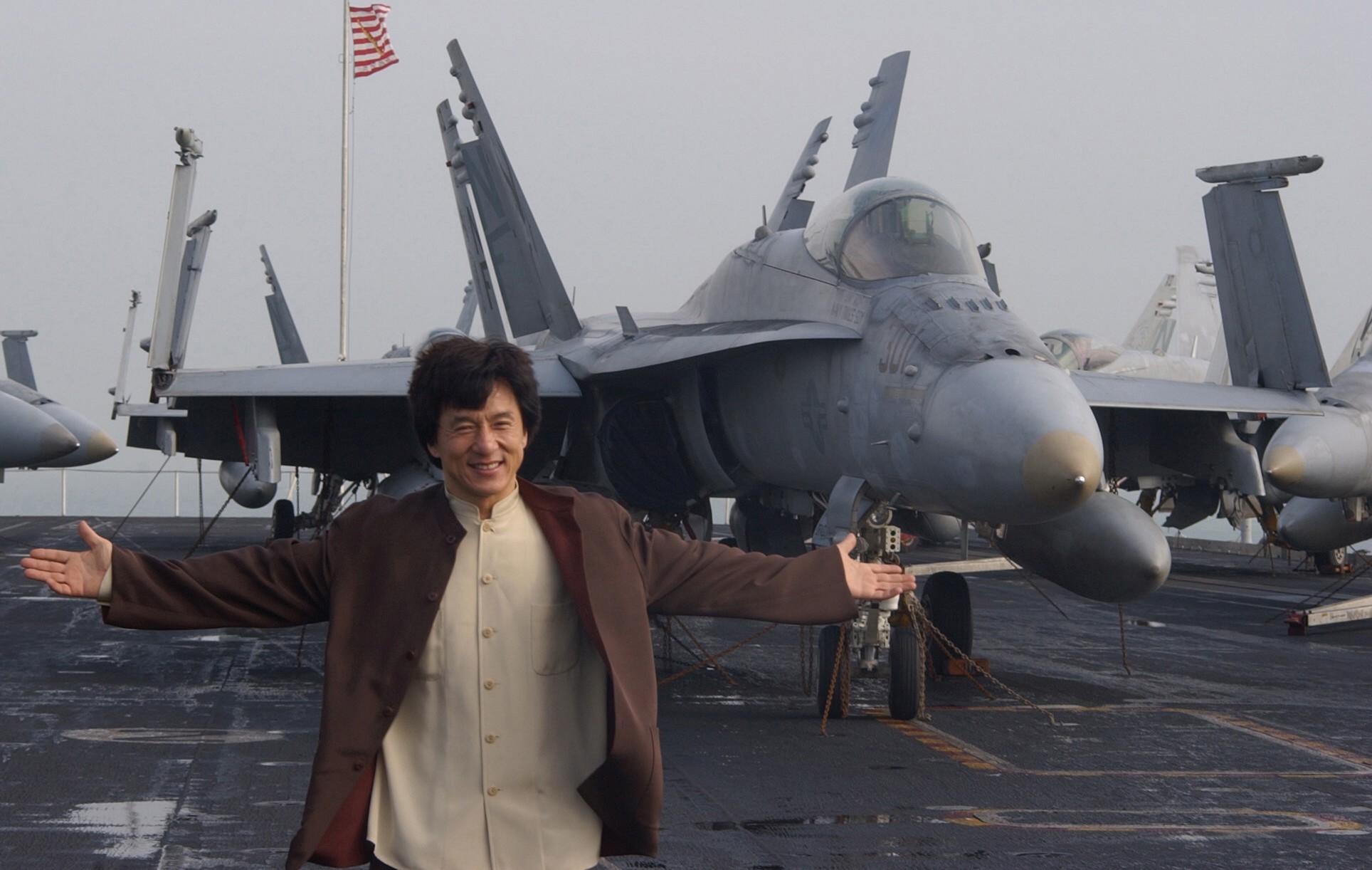 movie star Jackie Chan in front of a F/A-18C Hornet (VFA-192 / CVW-5) embarked on USS Kitty Hawk (CV 63) - 2002 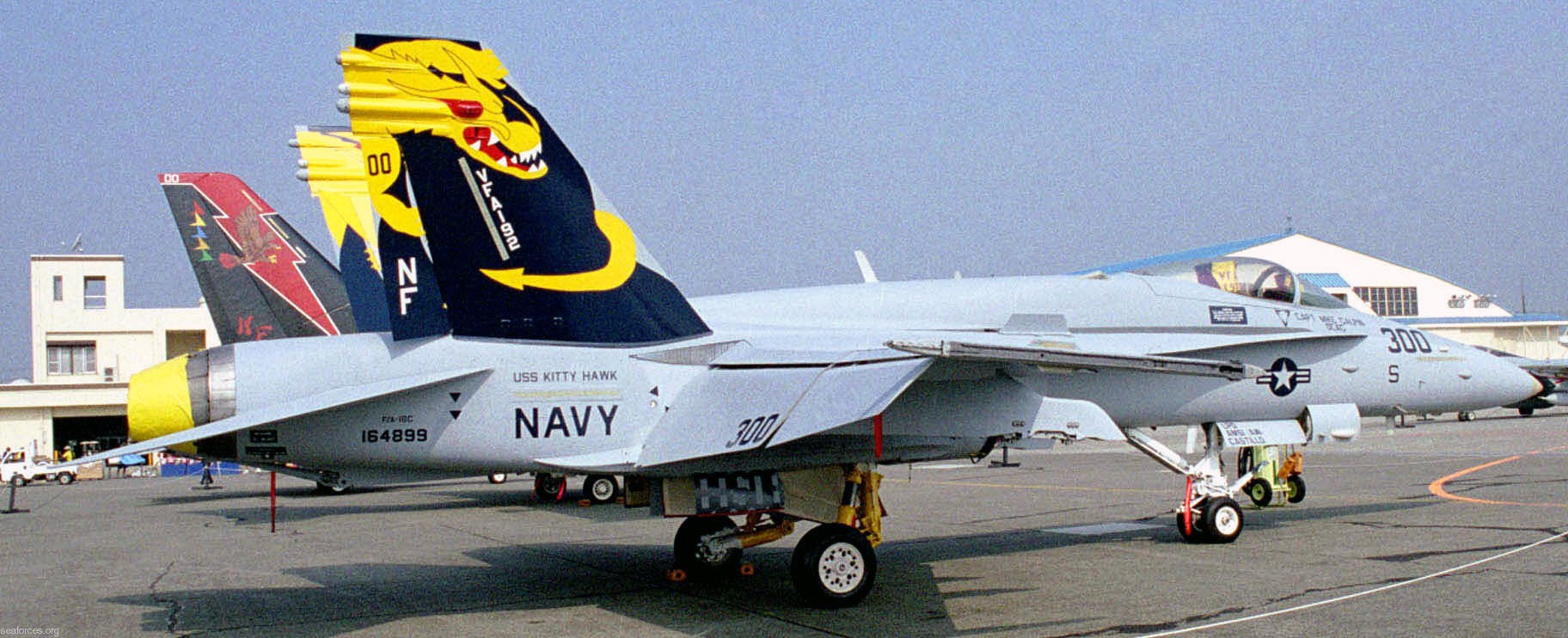 F/A-18C Hornet (VFA-192 / CVW-5) embarked on USS Kitty Hawk (CV 63) at NAF Atsugi, Japan - February 2000  F/A-18C Hornet (VFA-192 / CVW-5) embarked on USS Independence (CV 62) - February 1998 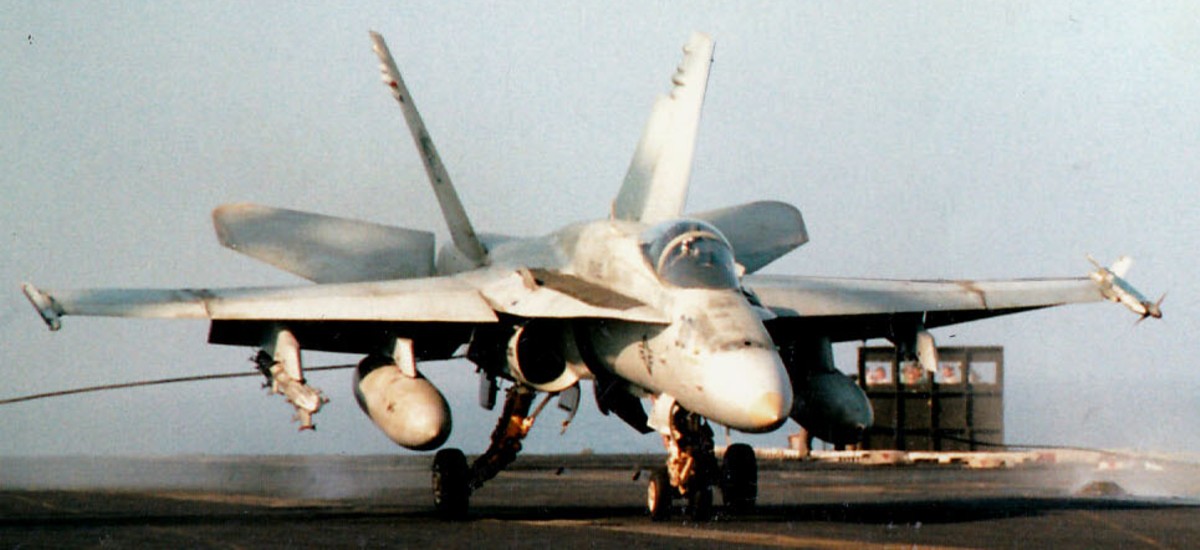 F/A-18C Hornet (VFA-192 / CVW-5) embarked on USS Independence (CV 62) - March 1996 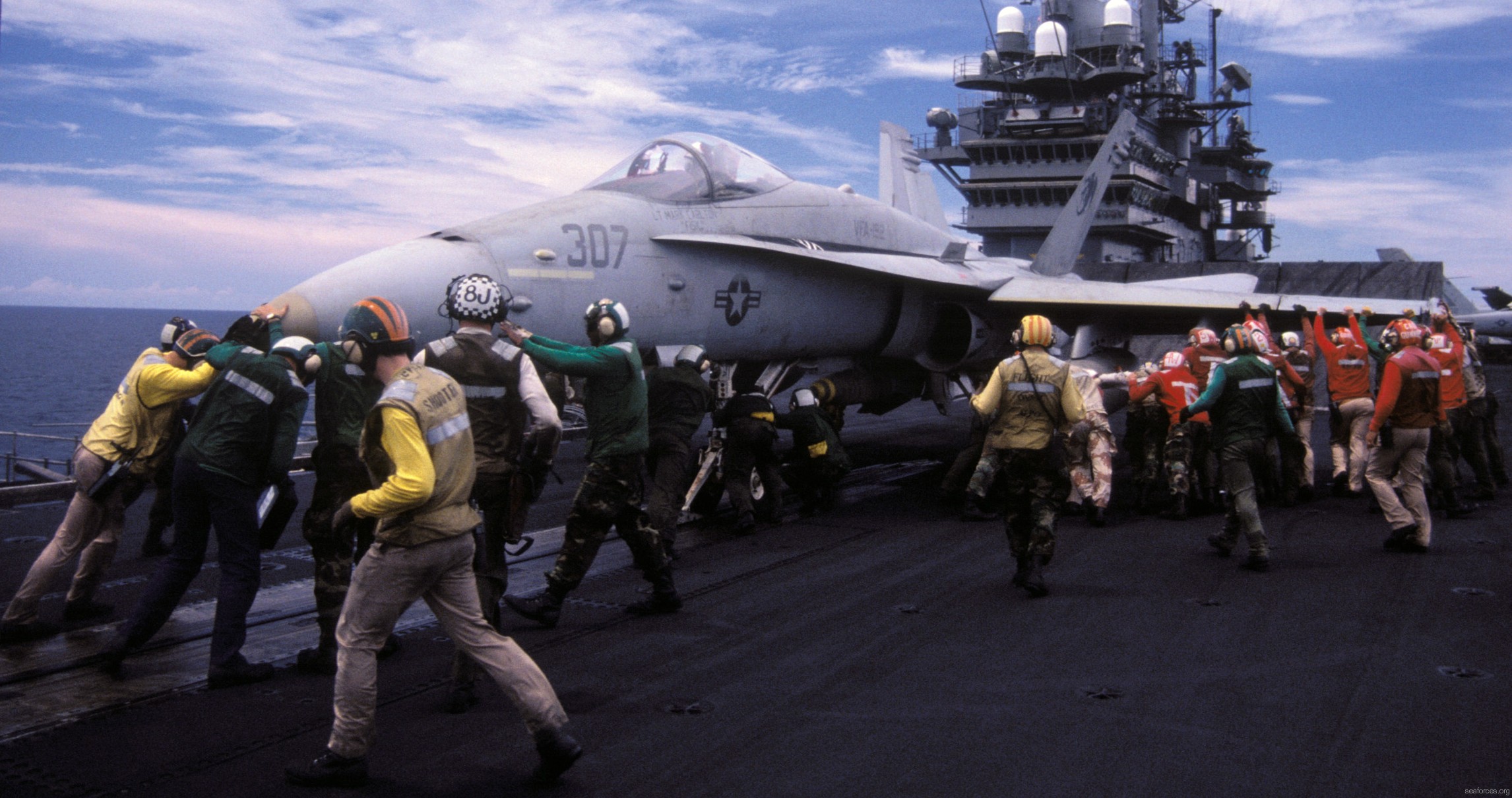 F/A-18C Hornet (VFA-192 / CVW-5) embarked on USS Independence (CV 62) - 1995 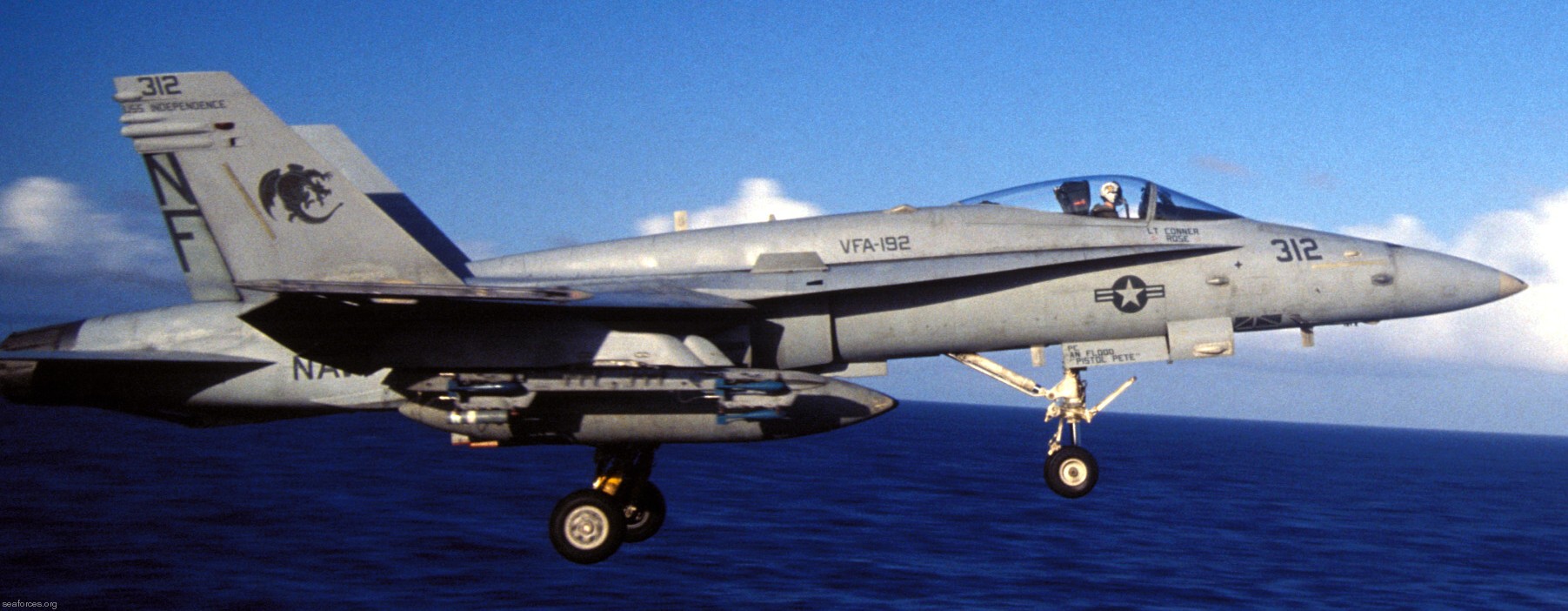 F/A-18C Hornet (VFA-192 / CVW-5) embarked on USS Independence (CV 62) - 1995 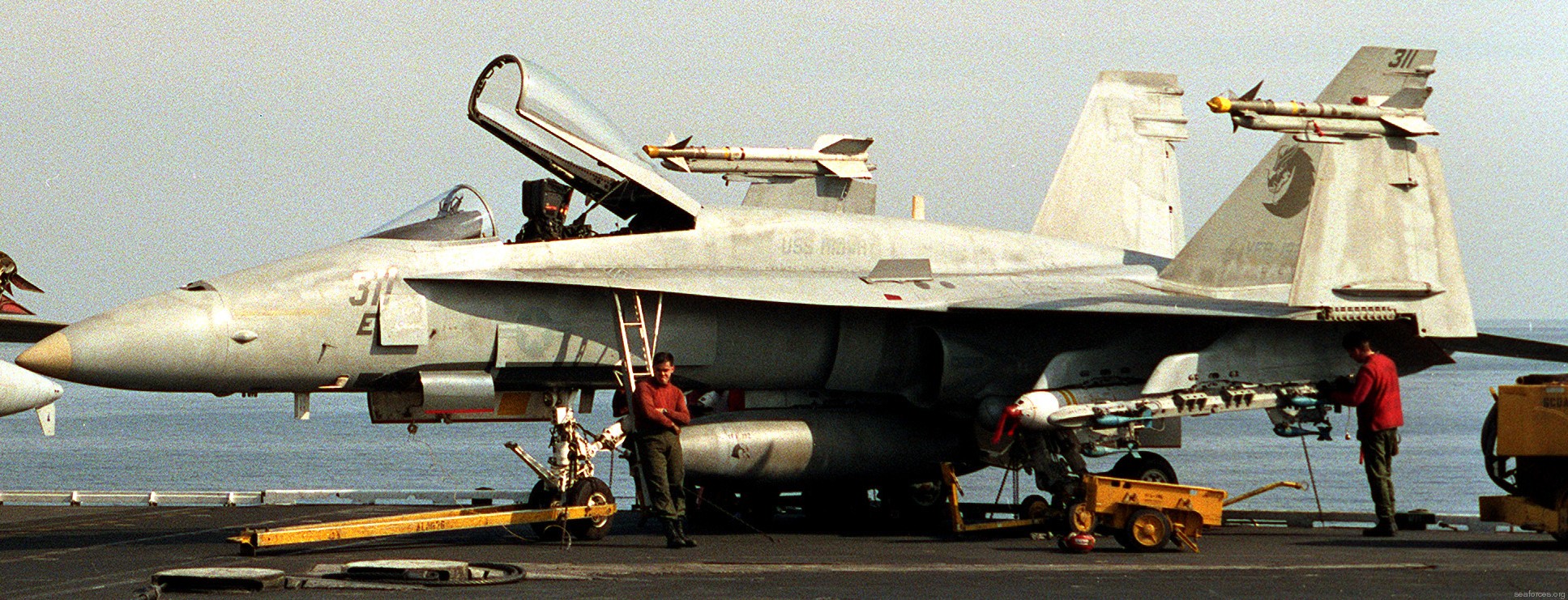 F/A-18A Hornet (VFA-192 / CVW-5) embarked on USS Midway (CV 41) - January 1991 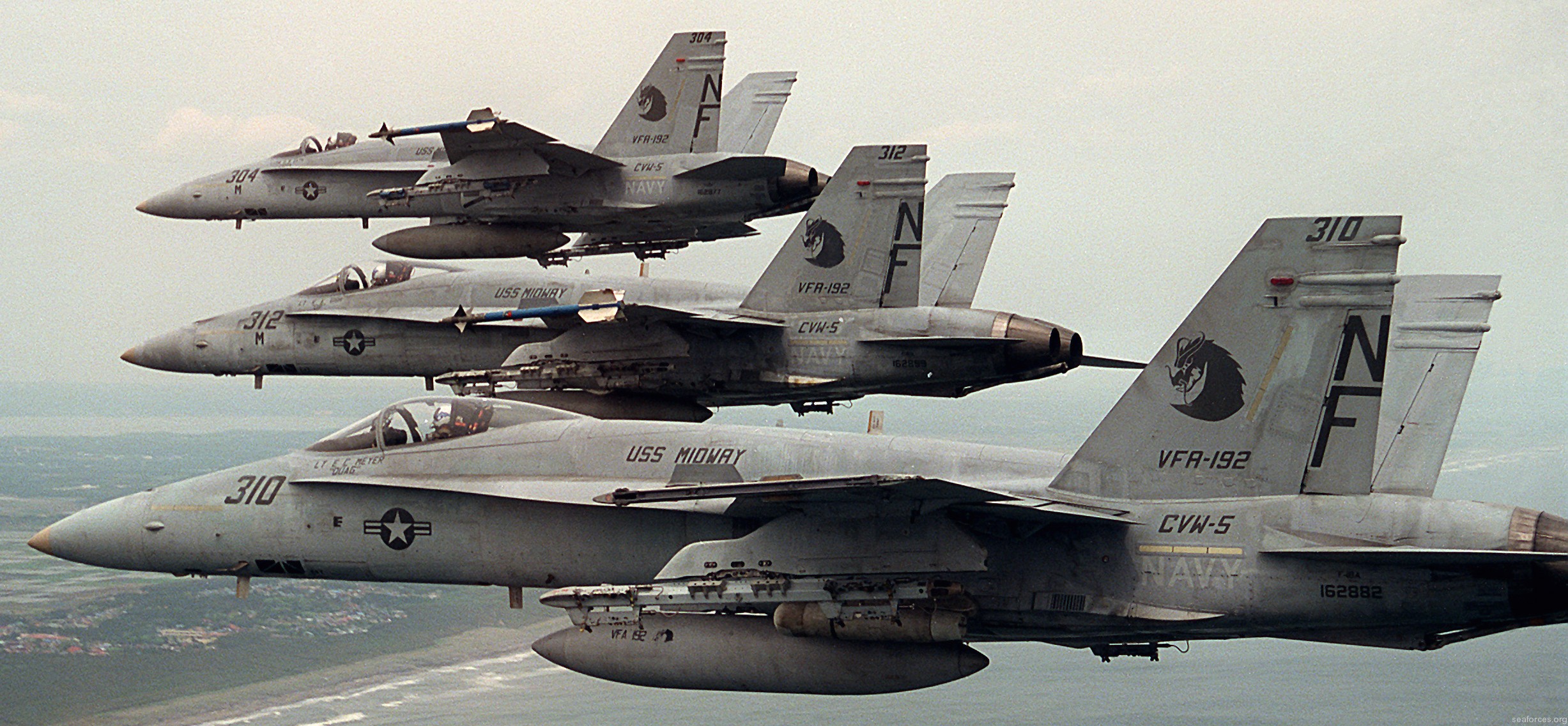 F/A-18A Hornet (VFA-192 / CVW-5) embarked on USS Midway (CV 41) - June 1989 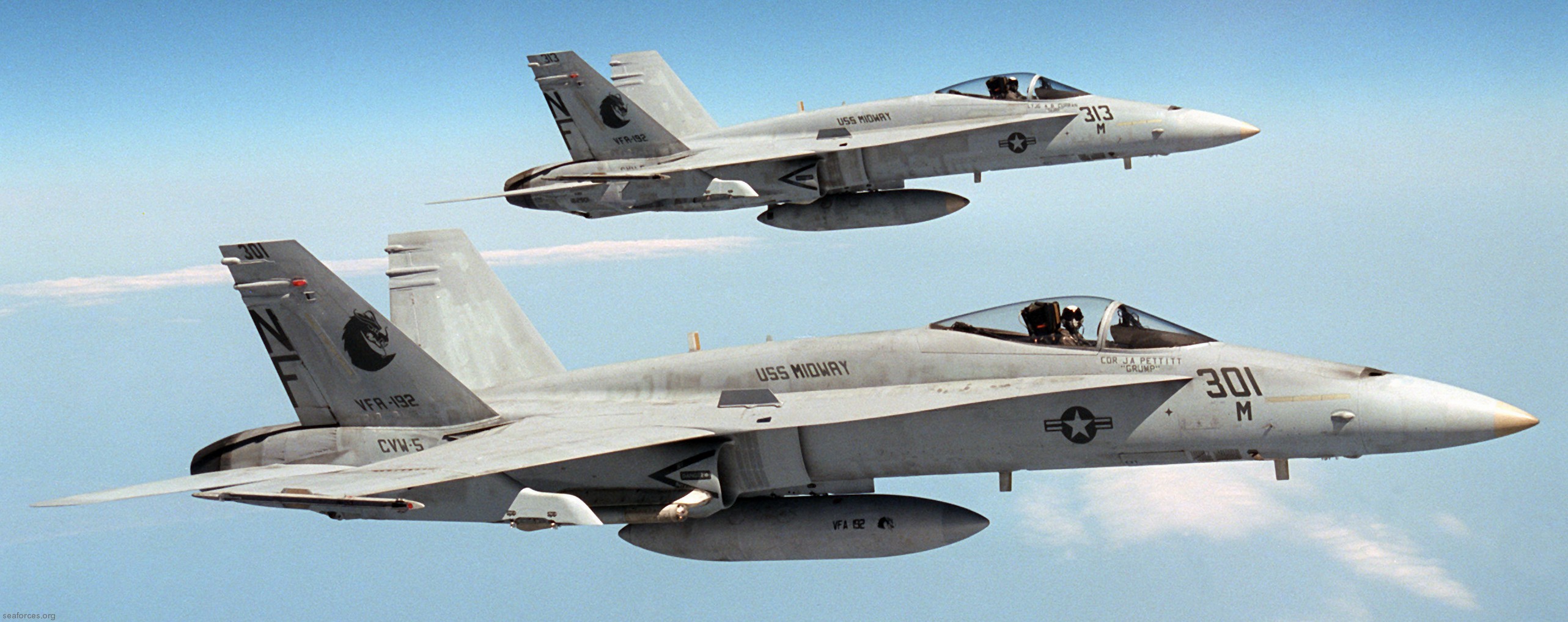 F/A-18A Hornet (VFA-192 / CVW-5) embarked on USS Midway (CV 41) - June 1989 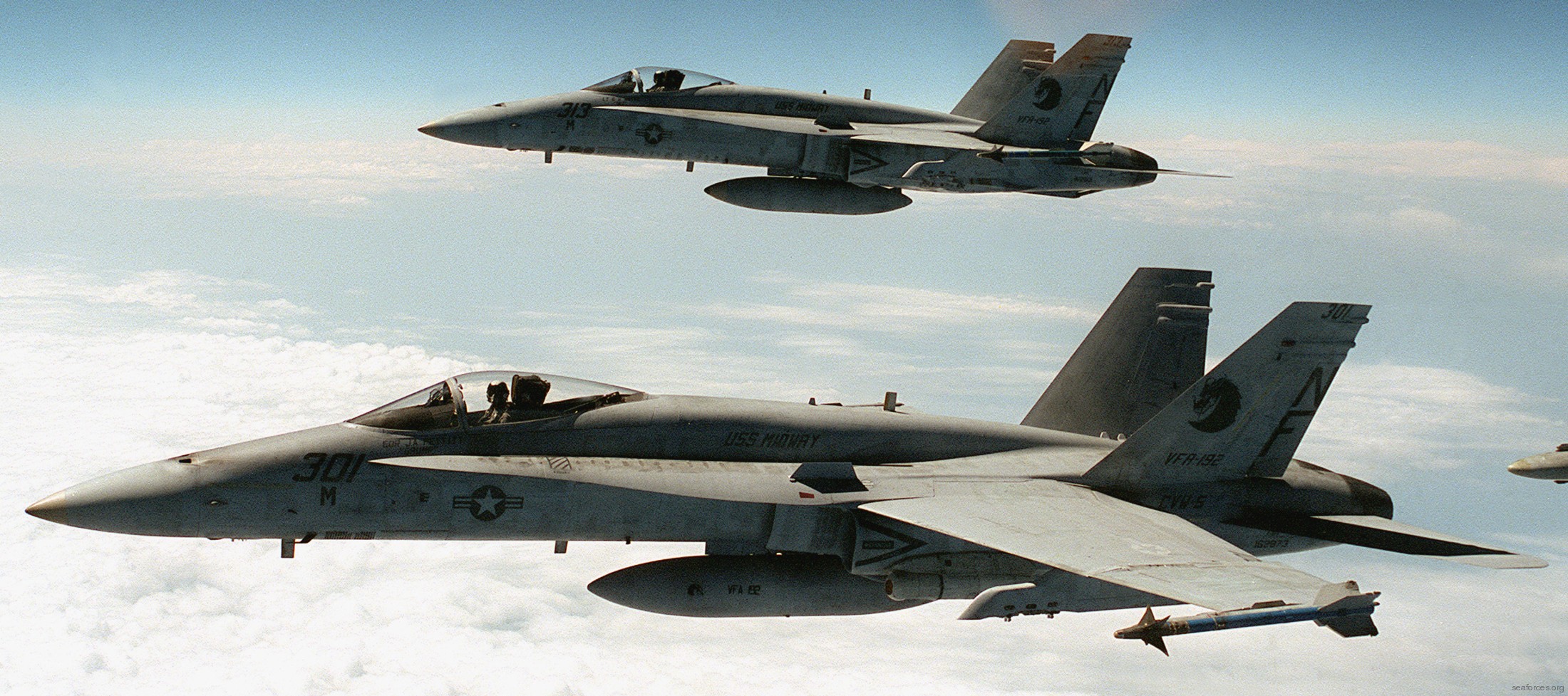 F/A-18A Hornet (VFA-192 / CVW-5) embarked on USS Midway (CV 41) - June 1989 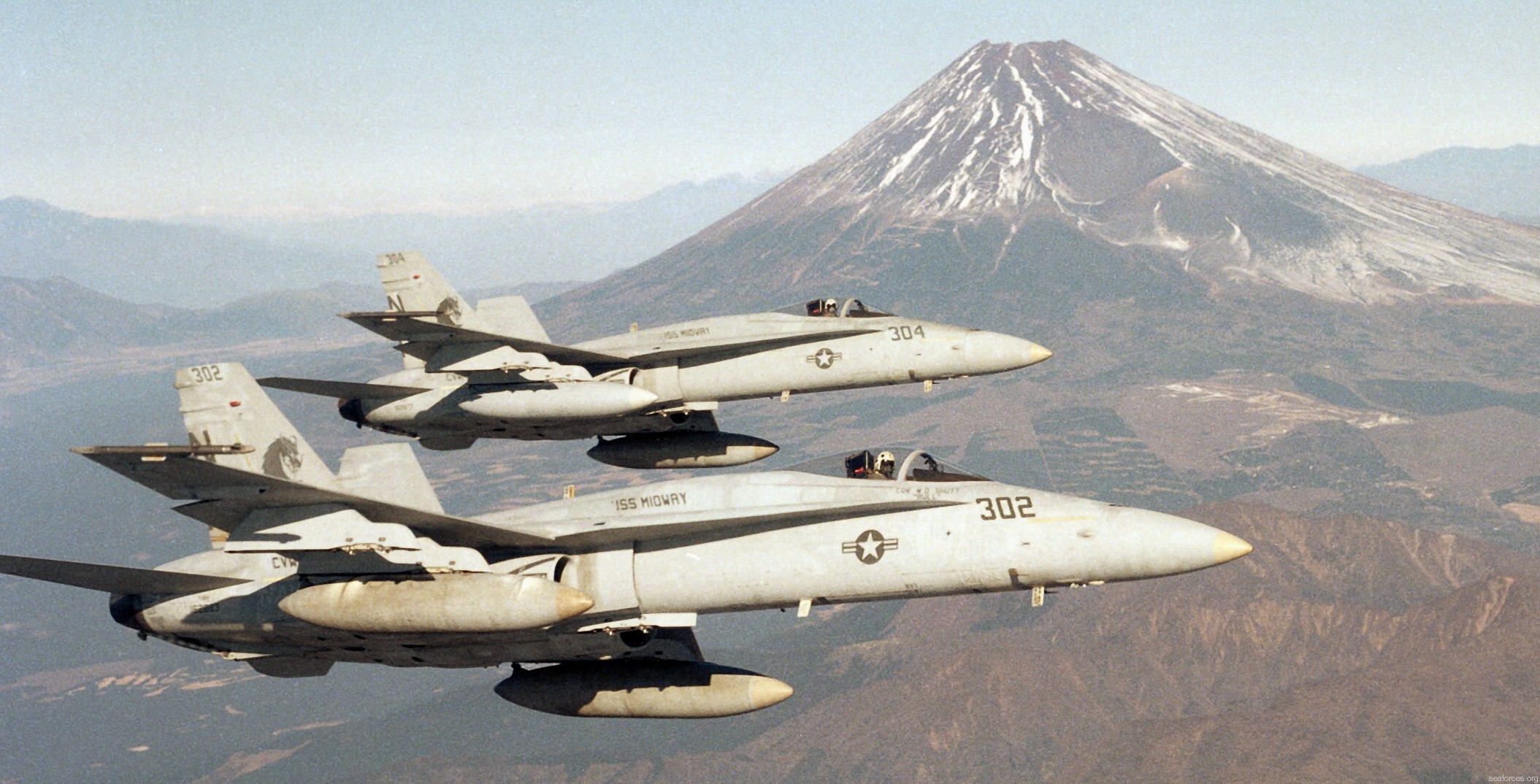 F/A-18A Hornet (VFA-192 / CVW-5) embarked on USS Midway (CV 41) near Mount Fuji, Japan- June 1989  F/A-18A Hornet (VFA-192 / CVW-5) embarked on USS Midway (CV 41) - June 1989 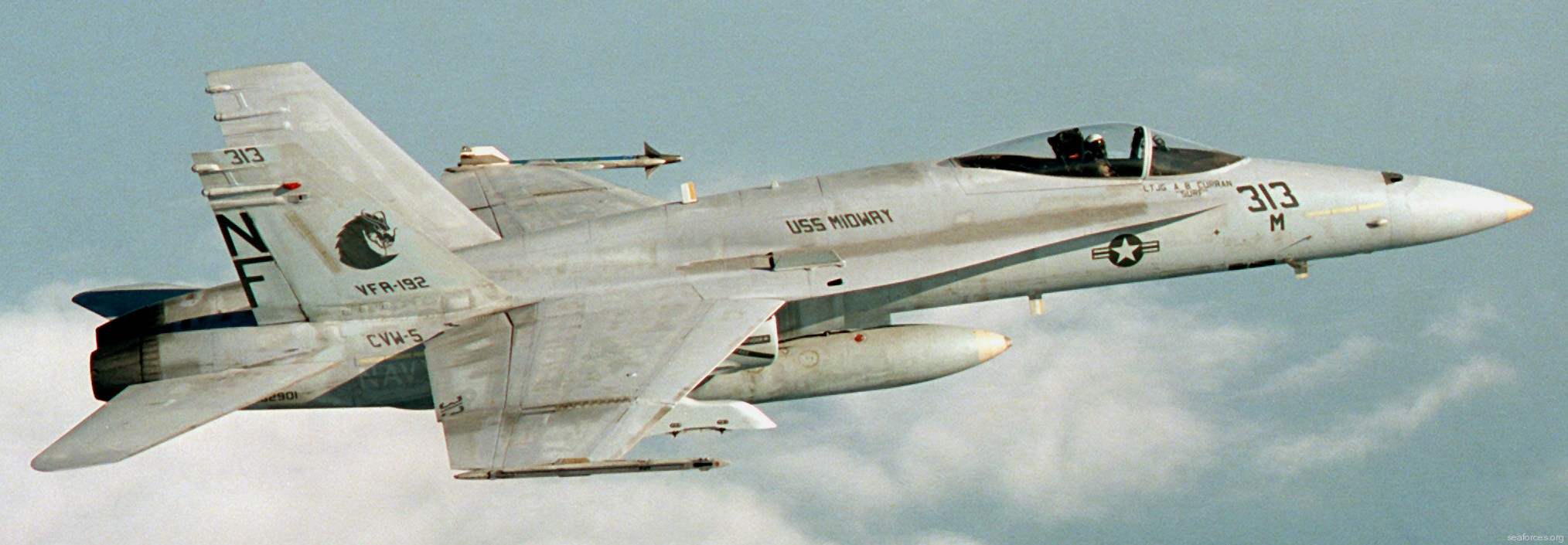 F/A-18A Hornet (VFA-192 / CVW-5) embarked on USS Midway (CV 41) - June 1989 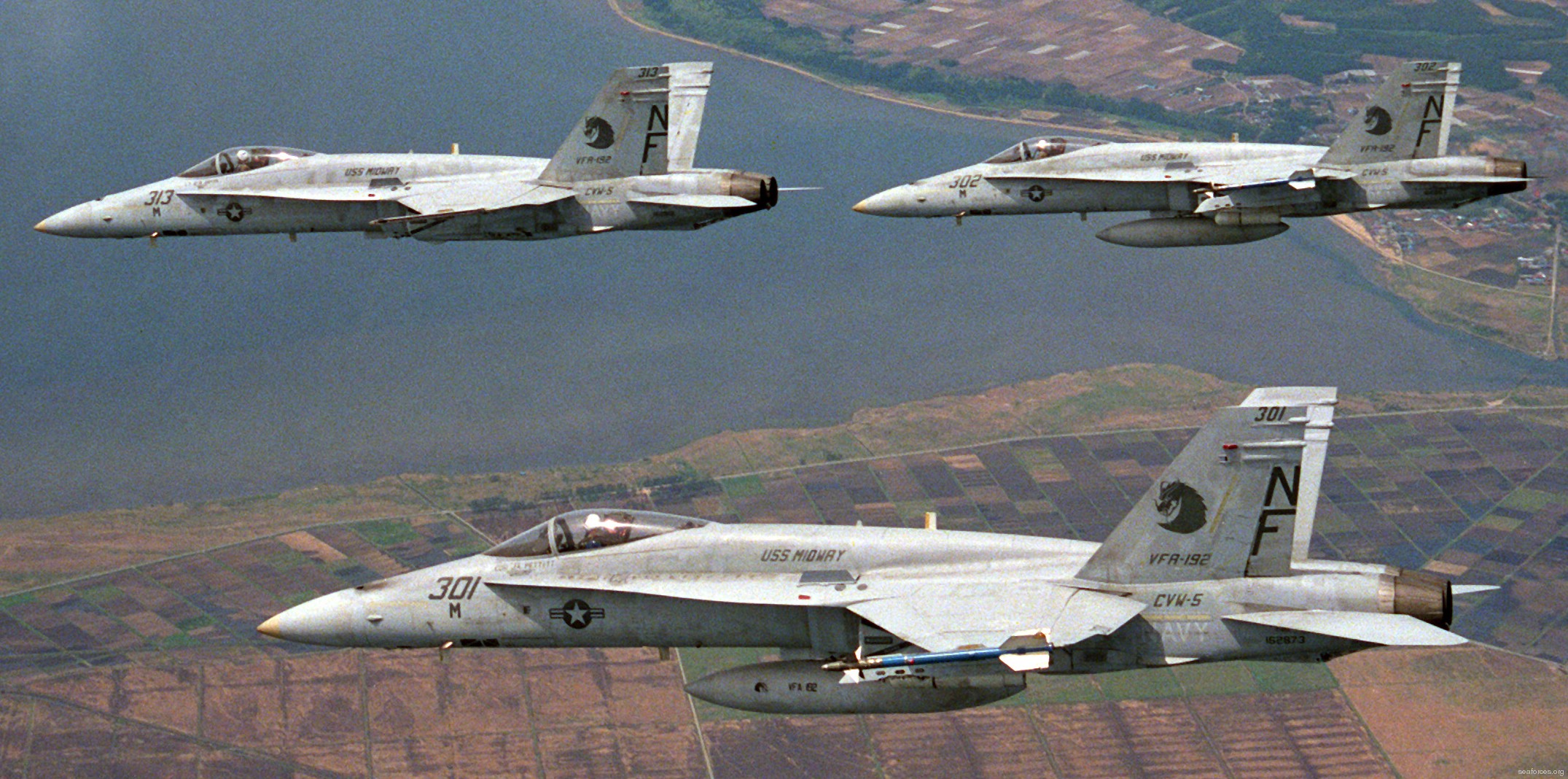 F/A-18A Hornet (VFA-192 / CVW-5) embarked on USS Midway (CV 41) - June 1989 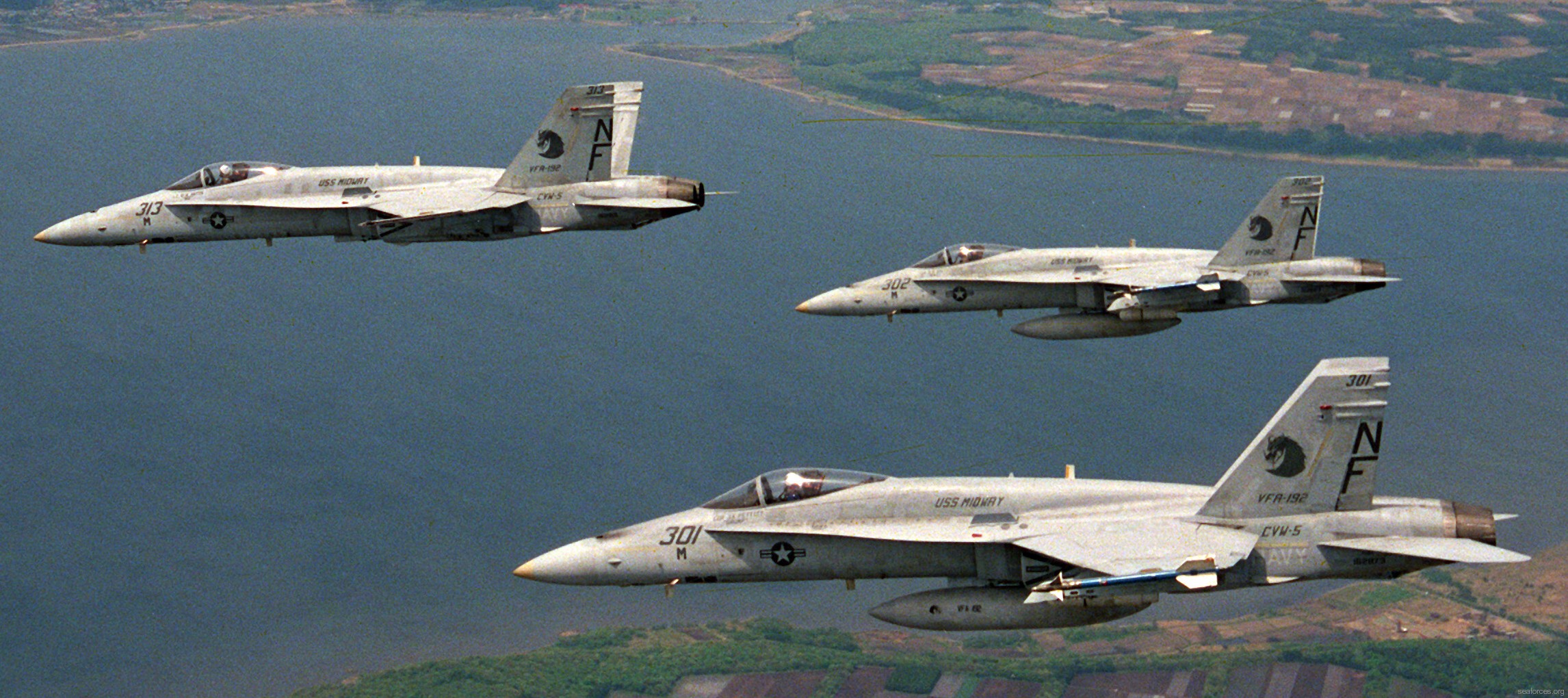 F/A-18A Hornet (VFA-192 / CVW-5) embarked on USS Midway (CV 41) - June 1989 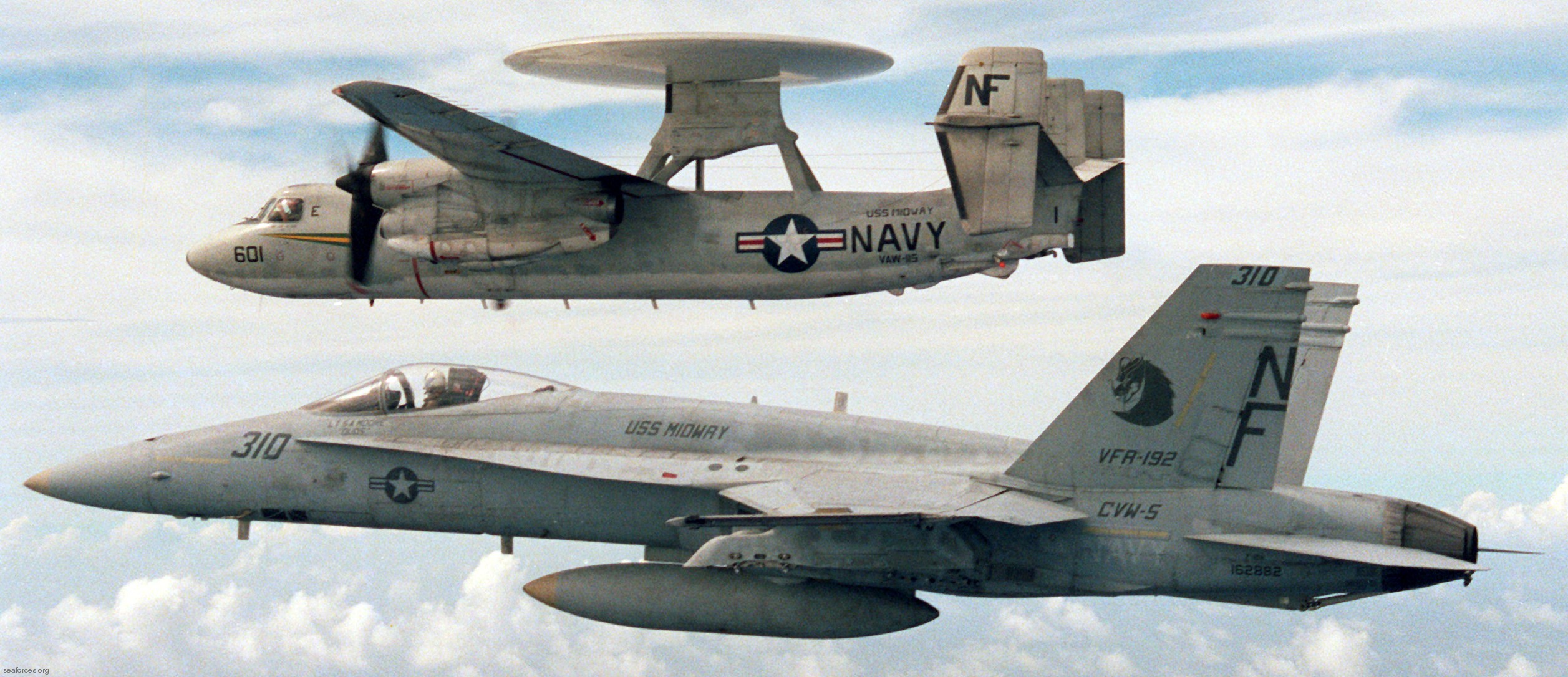 F/A-18A Hornet (VFA-192 / CVW-5) embarked on USS Midway (CV 41) with an E-2C Hawkeye of VAW-115 - June 1989 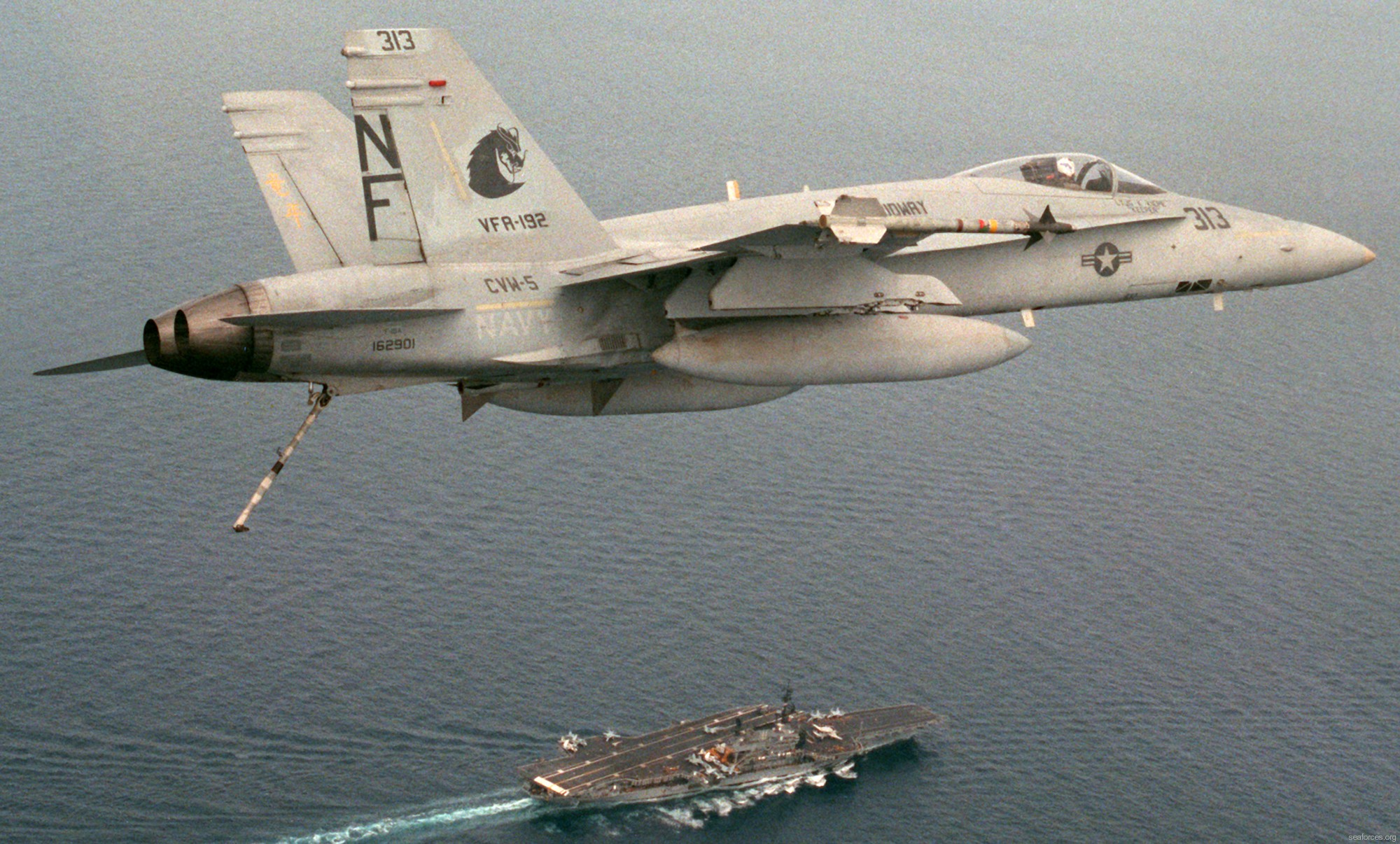 F/A-18A Hornet (VFA-192 / CVW-5) embarked on USS Midway (CV 41) - June 1989 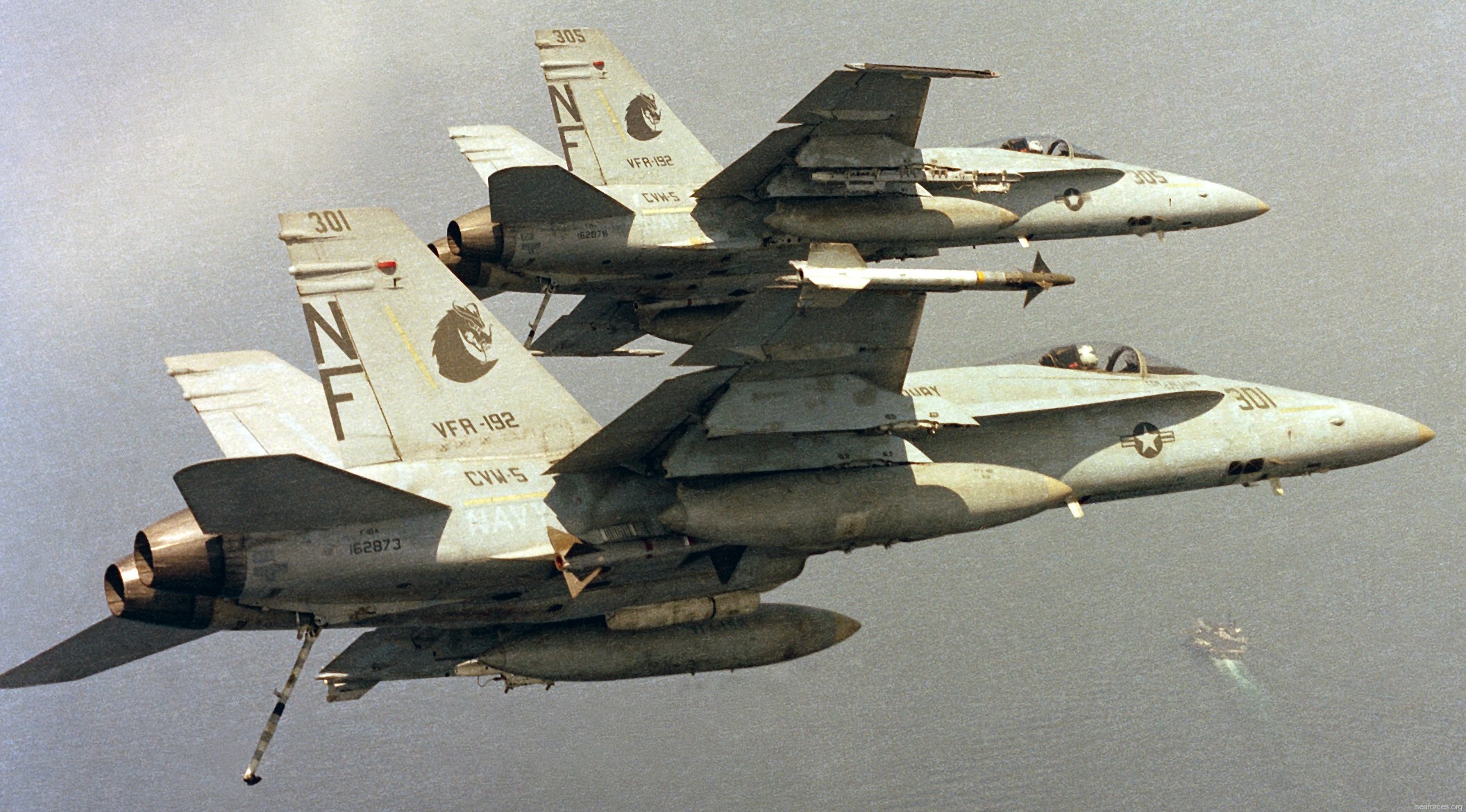 F/A-18A Hornet (VFA-192 / CVW-5) embarked on USS Midway (CV 41) - June 1989 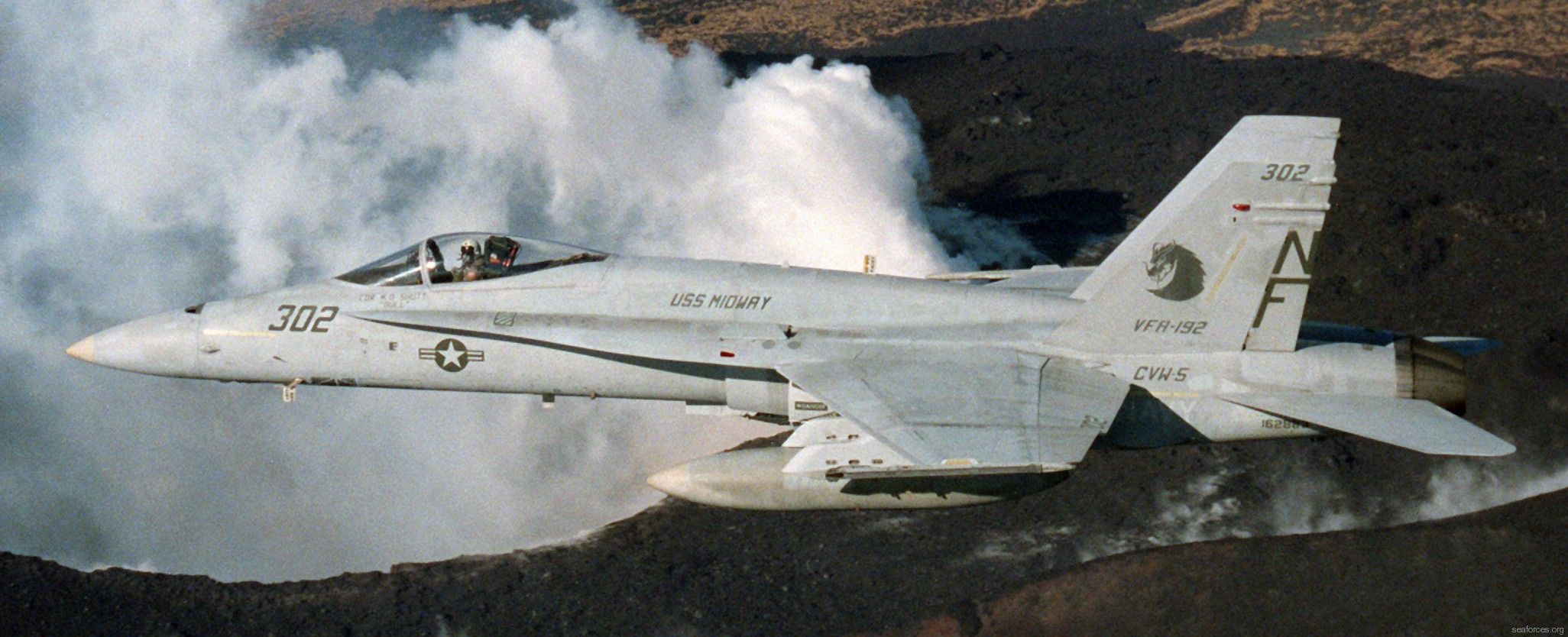 F/A-18A Hornet (VFA-192 / CVW-5) embarked on USS Midway (CV 41) over Mount Fuji, Japan - June 1989 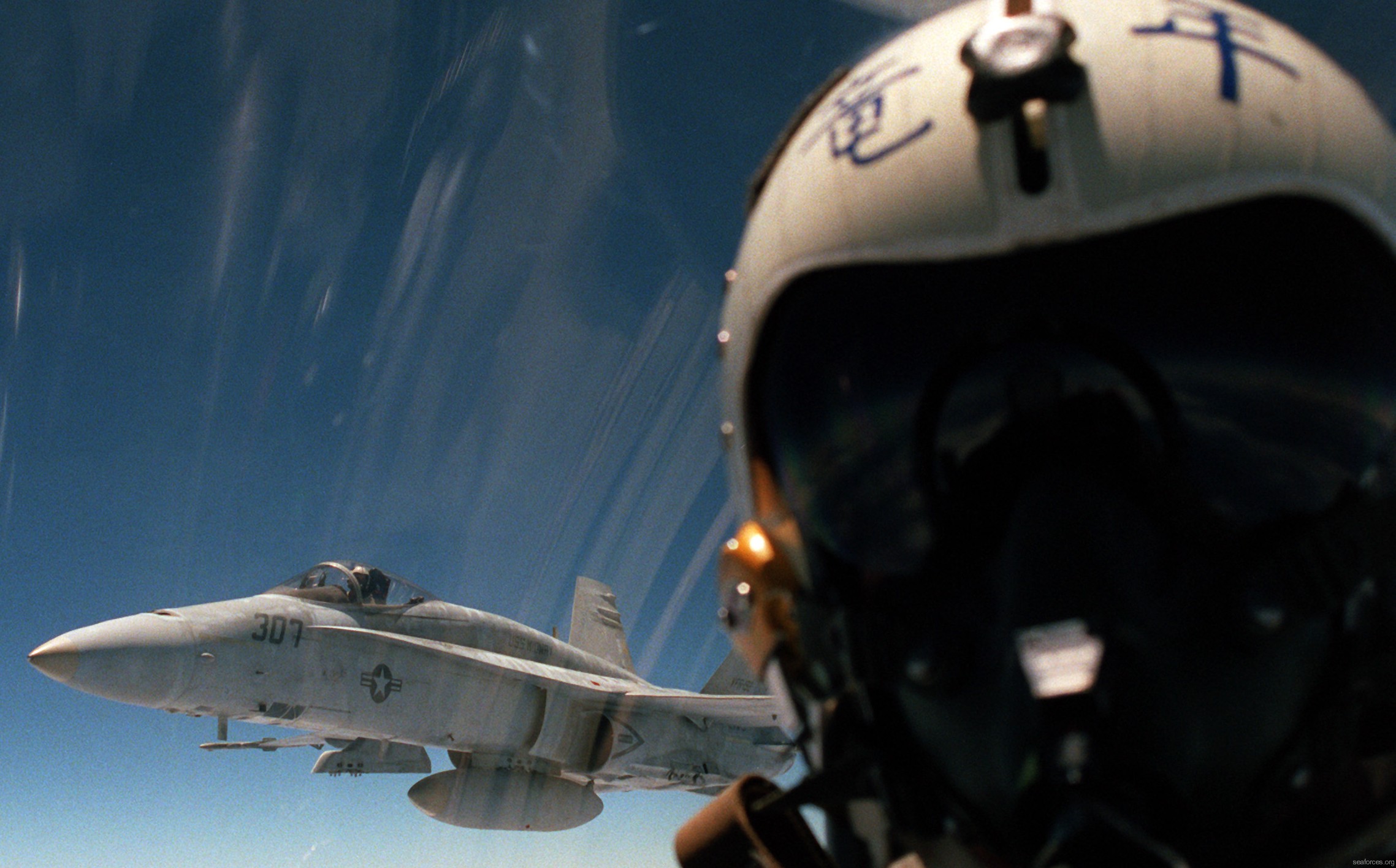 F/A-18A Hornet (VFA-192 / CVW-5) embarked on USS Midway (CV 41) - June 1989 |
||||||
|
VA-192 / VFA-192 History: Spanning nearly 70 years, deploying on 12 aircraft carriers, spending countless days at sea and flying untold numbers of hours, the World Famous Golden Dragons of VFA-192 have been on duty for the United States of America defending freedom at home and abroad. Through five conflicts, the Dragons have fought bravely and sacrificed gravely, earning their way into the annals of history. In all, eight pilots wearing the Golden Dragon patch have been killed in combat. Their storied history includes the awarding of 1 Medal of Honor, 3 Silver Stars, 2 Legion of Merits with Combat "V", and 14 Distinguished Flying Crosses. The squadron itself has received numerous awards, including four consecutive CNO Safety Awards (1966-1969), six CNAFP Safety S awards, six Battle E's, one Bruce Carrier Award, and two Michael J. Estocin awards (named after the VFA-192 pilot who was awarded the Medal of Honor in Vietnam). The squadron traces its roots back to 1945, just before the end of World War II, when VF-153 was established on March 26th at NAS Atlantic City. Flying the F6F-3 Hellcat, VF-153 was known as the "Fightin' Kangaroos" and featured an insignia of a boxing kangaroo on a white cloud. Just one short month later the squadron upgraded to the F6F-5 and moved to NAS Oceana. The squadron spent a year there before moving cross-country to NAS Alameda in August of 1946 and being re-designated VF-15A on November 15th. In March of 1947, the squadron deployed for the first time, setting sail aboard USS Antietam (CV-36). Upon their return, VF-15A transitioned to the F8F-1 Bearcat and became the Black Knights, featuring an insignia with a black and gold helmet and a gold shield. The squadron was once again re-designated on July 15th, 1948, becoming VF-151 and adding "In Omnia Paratus" to their insignia, meaning "Ever Ready." In February 1949, the squadron embarked aboard the USS Boxer (CV-21) and participated in the Pacific Fleet Minor Cold Weather Exercise off the coast of Kodiak, Alaska. Upon returning to NAS Alameda, the Black Knights upgraded to the F8F-2 Bearcat. In 1950, the squadron was once again re-designated, becoming VF-192 on February 15th aboard USS Boxer while deployed to the Western Pacific. The squadron returned in June and transitioned to the F4U-4 Corsair. In August, the squadron became the Flying Dragons, and changed insignia to a silver dragon flying across the bow of a grey aircraft carrier (the Dragon pilots still wear this patch on occasion, in deference to the squadron's history). Flying Close Air Support (CAS) missions in support of the Marines in the Battle of Chosin Reservoir, the Dragons deployed on a combat cruise aboard USS Princeton (CV-37) in November, participating in the squadron's first combat operations on December 5th. During this cruise, VF-192 participated in a rare historical occurrence, when ENS Eugene Tissot (who later became the Commanding Officer of VA-192 during the Vietnam Conflict) lead an all-Ensign strike consisting of four AD-4 Skyraiders and three F4U-4 Corsairs that destroyed a North Korean headquarters complex at Hoeyang on the 4th of January [1]. On May 1st, the Flying Dragons participated in the strike that destroyed the Hwachon Reservoir Dam, providing flak and small arms suppression for VF-195, who earned the nickname the "Dambusters" while on this mission. Tragically, VF-192 lost three pilots during this cruise, two of whom, ENS William Patton and ENS Richard Ruppenthal, earned the Distinguished Flying Cross for their actions. The other pilot, LTJG Marcus Merner, was hit by gunfire and attempted to ditch his aircraft in the water. His remains were never found. After returning, the Flying Dragons moved to NAS Moffett Field and briefly transitioned to the F9F-2 Panther until their new aircraft were given to VF-191 to replace combat losses. Instead, VF-192 continued to fly the Corsair, and once again deployed aboard the USS Princeton in March of 1952. On this cruise, the Dragons saw extensive combat. Because they lacked radar, the Corsairs were supposed to fly only day missions. However, the squadron's commanding officer, LCDR Elwin "Ace" Parker, convinced the Commander of 7th fleet to allow VF-192 to conduct night missions, under the condition that they still fulfill their day missions. Their skillful pilots proved very successful in their night strikes, inflicting significant damage to the enemy due to the Chinese's decision to move most of their supplies at night [2]. Despite their nighttime attacks, the Flying Dragons also continued to perform well during the day. Two of VF-192's pilots earned the Distinguished Flying Cross while participating in a two-day campaign against several hydroelectric plants in North Korea. LCDR Parker earned one as part of a 17-Corsair strike against Kyosen #3. Lieutenant Commander John Dineen earned his by leading 14 F4U-4 Corsairs and 10 F9F-2 Panthers in a strike that destroyed Fusen #2 and #3. In July of that year, the Dragons participated in major strikes against industrial targets in Pyongyang. On one such attack, LT Barbour received a wound in his left arm from small arms fire, but he was able to stop the bleeding by using a tourniquet made from strip of parachute he had made by the squadron's Parachute Riggers (PRs). On this combat deployment, VF-192 pilots earned five Distinguished Flying Crosses, two of which were awarded posthumously to LTJG Howard Westervelt Jr. and ENS Conrad Neville, the only pilots lost during this cruise. The Flying Dragons then transitioned to the F9F-2 and F9F-5 Panther, bringing the squadron into the jet age. While aboard the USS Oriskany (CV-34), the squadron participated in the filming of two movies, "Men of the Fighting Lady" and "The Bridges at Toko-Ri". It was from these films that the Flying Dragons became known as the "World Famous Golden Dragons," due to their newfound fame and the prominent display of a Golden Dragon on the nose of their aircraft in the movies. The squadron deployed once more on the Oriskany in 1955 before transitioning to the F9F-6 Cougar in 1956. On March 15th, the squadron was re-designated as VA-192 to reflect their fixed-wing attack mission and upgraded to the F9F-8 in June. Additionally, the squadron adopted a new insignia, featuring a yellow dragon holding a white nuclear symbol with a white mushroom cloud and red rising center. It remains the squadron's insignia to this day. The next few years saw two more aircraft transitions, first to the FJ-4B Fury in 1957, then, in an interesting swap of aircraft and maintainers with VA-216 in July of 1959, to the A4D-2 Skyhawk. The 1960's brought about the Dragon's second era of combat experience, this time aboard the USS Bon Homme Richard (CV-31). After moving to their current location of NAS Lemoore in 1962, VA-192 deployed for a ten-month combat cruise off the coast of Vietnam in 1965, during which the Commanding Officer, CDR Eugene Tissot, earned two Distinguished Flying Crosses. His first was awarded for a strike against the Dong Phong Thuong Bridge in North Vietnam, in which he hit the narrow, heavily defended bridge in the exact spot required to inflict the greatest damage. His second was earned over the course of the deployment, where he lead 8 major strikes that destroyed 285 buildings, damaged 250 more, and killed over 175 enemy combatants. Another member of VA-192, LTJG Michael Allum, earned the Distinguished Flying Cross for completing two successful attacks on the same bridge during the same flight, destroying the structure and seriously hampering the movement of supplies by the North Vietnamese. Despite their successes, the Golden Dragons returned home having lost one pilot, LTJG Neil Taylor, in combat, and one sailor, Airman Dennis Toms, who was lost at sea in a non-combat related accident. Their return home was brief, providing just enough time to upgrade to the A-4E Skyhawk before deploying to Yankee Station again in October of 1966, this time aboard the USS Ticonderoga (CV-14). While on this cruise, the Golden Dragons participated in several events that, tragically, will forever cement the squadrons place in history. The first resulted in the only Medal of Honor awarded to a Navy jet pilot for his combat actions. The second brought about the worldwide recognition of the horrors inflicted on American Prisoners of War while interned in North Vietnamese prison camps. Captain Michael J. Estocin (then a Lieutenant Commander) earned the Medal of Honor over two missions (a rarity for the award) in which he lead several aircraft on Suppression of Enemy Air Defense (SEAD) missions to protect the main strike package by flying ahead, drawing the fire from and destroying Surface-to-Air missile (SAM) sites utilizing SHRIKE anti-radar homing missiles. The first mission occurred on April 20th, 1967 in a strike against two thermal plants in Haiphong, North Vietnam. Throughout the mission, LCDR Estocin reported the locations of several active SAM sites while simultaneously neutralizing three of them. During the strike, his A-4E Skyhawk was hit by a SAM, however, LCDR Estocin returned to the target area to continue supporting the strike. He finally left with only five minutes of fuel remaining and proceeded to conduct in-flight refueling over the course of 100 miles, eventually disengaging from the tanker just three miles from the carrier with only enough fuel for one approach. He then flew a precise approach to a fiery arrested landing, resulting in several injuries requiring medical attention. Six days later, LCDR Estocin convinced his superiors he was again ready to fly despite his injuries, and launched on another SEAD mission as part of a strike against fuel facilities in Haiphong. His aircraft was again hit by a SAM, sending the aircraft into several uncontrolled fiery aileron rolls before recovering. The aircraft remained on fire and continued to leak fuel while in a shallow dive. During the dive, LCDR Estocin's SHRIKE missiles and external tanks were jettisoned from the aircraft (it was eventually concluded that this was a result of the fire initiating the jettison logic, not from pilot action). However, his wingman noted that, although the cockpit of the aircraft was unaffected from the missile, LCDR Estocin sat motionless, with his head bent slightly forward. Additionally, he failed to respond to repeated radio calls, and the aircraft continued to descend. Watching the aircraft impact the ground without seeing an attempt to eject, his wingman called off any search-and-rescue effort and it was initially concluded that LCDR Estocin had perished in the crash. Later intelligence from North Vietnam suggested that he had in fact ejected and was captured, and his status was updated to Prisoner of War. This conclusion was further supported when his sister sent a package to him that was later returned by Hanoi, but included added mementos that suggested he was still alive. When all POWs were released in 1973, LCDR Estocin was not among them, though several former prisoners reported hearing his name while in captivity. It was then believed that he was killed in captivity, which remained the prevailing belief until a congressional commission investigated and determined that CAPT Estocin (who was promoted in absentia) had in fact died during his plane crash. This conclusion was further supported by the North Vietnamese, who insist they have no records of a Michael Estocin ever being held. Several Golden Dragons were, however, held captive by the North Vietnamese. The squadron's Executive Officer, CDR Ernest Moore, who received a Silver Star and two Distinguished Flying Crosses for his actions on a SEAD mission over North Vietnam, became a prisoner of war after being hit by enemy fire and ejecting while on a different SHRIKE mission on March 11, 1967. Commander Moore earned the Legion of Merit with Combat "V" and a second Silver Star as a POW for his efforts in leading the resistance against the extreme mental and physical punishments inflicted by the North Vietnamese. Another Dragon, LCDR Richard Stratton, was also held by the North Vietnamese as a Prisoner of War, earning the Silver Star, the Legion of Merit with Combat "V", and the Bronze Medal with Combat "V". After being forced to eject when his A-4E Skyhawk ingested debris while employing rockets against a set of barges, LCDR Stratton was captured and forced to read a "confession" that was obviously coerced. A picture of LCDR Stratton bowing deeply to a North Vietnamese officer appeared in the April 7, 1967 edition of Life magazine, in which Stratton appeared to be drugged, leading to international condemnation of North Vietnamese treatment of Prisoners of War. In fact, LCDR Stratton was not drugged; he had been tortured. He used the media and the confession to deliberately discredit the North Vietnamese in an attempt to bring light to the horrific treatment of POWs. The World Famous Golden Dragons returned home briefly and became the first squadron to receive the A-4F Skyhawk in July of 1967. Six short months later, VA-192 was aboard Ticonderoga once again, deploying on their fourth Vietnam cruise in December. While on this cruise, they participated in Operation FORMATION STAR before heading to Southeast Asia, acting as a show of force following the capture of USS Pueblo (AGER-2) by the North Koreans. In Vietnam, the Dragons once again distinguished themselves in combat, with the Commanding Officer, CDR Lowell Eggert, earning three Distinguished Flying Crosses. His first was awarded for planning and leading a successful strike against two targets in North Vietnam on April 28th, in which he accurately employed two Walleye bombs despite facing intense enemy fire. He earned his second and third for planning and leading a two-day campaign against a vital storage area at Xom Trung Hoa on May 8th and 9th. Using his extensive knowledge and experience, CDR Eggert determined the most advantageous targets and succeeded in causing extensive damage to the facility, causing several secondary explosions and creating a fire that continued to burn well after the strike was complete. The Golden Dragons would deploy once more with the Skyhawk in April of 1969, this time aboard the USS Oriskany. It was on this cruise that, after accumulating and unprecedented 55 accident-free months that included 30,477 flight hours and 11,580 arrested landings, VA-192 became known as the Super S#!t Hot World Famous Golden Dragons (SSHWFGD), a title they still proudly wear today. In February 1970, the Dragons transitioned to the A-7E Corsair II before deploying once again in November, this time aboard the USS Kitty Hawk (CV-63). While on this cruise, the World Famous Golden Dragons performed another historical feat by dropping a record 15 million pounds of ordnance over 6,600 flight hours and 2,901 arrested landings while participating in the "Laotian Highway Patrol", all without losing a single aircraft or pilot. Upon their return in July of 1971, the Dragons immediately began workups in preparation for what would be their seventh and final deployment in support of combat operations in Vietnam. As part of this deployment, VA-192 mined North Vietnamese harbors and participated in Operation LINEBACKER, which was the first continued bombing campaign against North Vietnam since President Lyndon Johnson instituted a halt in 1968. During this cruise, the Dragons completed 3,600 combat strikes over a record 192 days. The only Dragon casualty during this deployment was LCDR Dennis Pike, who was shot down while piloting his A-7 over Laos. With the completion of combat operations in Vietnam, VA-192 deployed on several Western Pacific cruises before deploying in 1979 aboard the USS America (CV-66) for their first Mediterranean cruise. While on their second cruise in the Med, the Dragons spent 202 out of 220 days at sea. In 1983, VA-192, along with the rest of Carrier Air Wing Nine (CVW-9) onboard the USS Ranger (CV-61), was ordered to sit off the coast of Nicaragua due to the instability in Central America in July before being deployed to the Arabian Sea in response to Iran's threat to block oil exports in the Persian Gulf. The World Famous Golden Dragons then received their first taste of Japan when, on June 3rd, 1985, the squadron moved to MCAS Iwakuni as part of the Marine Corps Unit Deployment Program. The squadron returned to NAS Lemoore at the end of the year and began preparing to transition to the F/A-18A Hornet. On January 10th, 1986, the Golden Dragons were officially re-designated as VFA-192 to reflect their fixed-wing fighter-attack role, and were notified that they would be changing homeport, leaving NAS Lemoore for NAF Atsugi, Japan. The first cruise for the Dragons as VFA-192 aboard USS Midway (CV-41) saw them embarked for 261 days. While onboard, they participated in Operation EARNEST WILL, providing air cover to escort reflagged Kuwaiti oil tankers. In 1991, the World Famous Golden Dragons once again found themselves conducting combat operations, this time in support of Operation DESERT STORM. During the opening night of the war, VFA-192's F/A-18 Hornets, equipped with the High-speed Anti-Radiation Missile (HARM), proved instrumental in defeating the Iraqi's air defenses by attacking several missile batteries. In all, the Dragons flew 576 combat sorties, employing 730,000 pounds of ordnance in just 43 days. Throughout the 1990s, VFA-192 would deploy five times in support of Operation SOUTHERN WATCH, first aboard the USS Independence (CV-62) then aboard the USS Kitty Hawk, including two no-notice deployments. Additionally, the Golden Dragons upgraded to the F/A-18C Hornet, thus enhancin their radar, avionics, and weaponry. After completing a standard weapons training detachment in Guam in August 2001, the Golden Dragons were busily getting ready for their next scheduled deployment. The terrorist attacks of September 11th changed VFA-192's plans, however, and they immediately began preparing for an emergency deployment, readying themselves within a week. Instead, the Dragons and CVW-5 were split into two Detachments (Dets), with Det A deploying aboard the USS Kitty Hawk to provide Close Air Support for a contingent of Special Operations Forces who were also embarked and Det B moving to the U.S. Navy Support Facility on Diego Garcia to provide air defense for the vulnerable island. In January of 2003, VFA-192 set sail again, for an indefinite duration with an unknown destination. The end result was 339 combat missions in support of Operation IRAQI FREEDOM. Over 100 consecutive days at sea, the Dragons expended a grand total of 224,000 pounds of ordnance dropped, including 283 Precision Guidance Munitions (PGMs). Over the next nine years, the World Famous Golden Dragons would deploy several times in support of Operations IRAQI FREEDOM, ENDURING FREEDOM, and NEW DAWN, both with CVW-5 and, after a homeport change back to NAS Lemoore, with CVW-9. Notably, the last two Navy strike-fighter aircraft over Iraq were piloted by LCDR Mike Manicchia and LT Ty Kersteins. The Dragons deployed in September 2012 onboard the USS John C. Stennis (CVN-74), four months earlier than originally planned, where they once again entered the history books as the first squadron in over 40 years to employ rockets from an aircraft carrier (rockets were banned from carriers after the accidental firing of a rocket triggered a massive fire onboard the USS Forrestal). As part of CVW-9, they supported Operation ENDURING FREEDOM in Afghanistan and returned in April 2013. The squadron is now at home in Lemoore and has recently transitioned to the F/A-18E Super Hornet. The transition began in July of 2013 with the arrival of Lot 23/24 Rhinos and culminated with the "Safe for Flight" certification in March of 2014. During this process, Dragon pilots learned the differences between Legacy & Super Hornet platforms and honed their proficiency in the air. This transition not only included pilot training but included the building of Super Hornets from the ground up, showing the absolute professionalism and dedication of the Dragon maintainers. With the transition complete the squadron joined CVW-2 in preparation for any combat operations. As part of Carrier Air Wing Two, the World Famous Golden Dragons provide the United States the ability to maintain a continued forward presence around the world, maintaining freedom of the seas and the ability to project power anywhere, at any time. source: VFA-192 website - - - - - another history: Fighter Squadron 153 (VF-153) was originally established on March 26, 1945 at NAS Atlantic City flying the F6F-3 Hellcat. The squadron received F6F-5s in April and relocated to NAAS Oceana in June. The squadron moved to NAS Alameda in August 1946, and was redesignated to Fighter Squadron 15A on 15 November 1946. The squadron’s first deployment was aboard USS Antietam from March-October 1947. Immediately following their return, the squadron transitioned to the F8F-1 Bearcat in November 1947. The squadron was redesignated Fighter Squadron 151 (VF-151) on 15 July 1948. In February 1949, half of the squadron’s personnel and aircraft deployed aboard USS Boxer for a Pacific Fleet Minor Cold Weather Exercise near Kodiak, Alaska. They upgraded to the F8F-2 model of the Bearcat in July 1949. In January 1950, the squadron sailed from Alameda aboard USS Boxer. It was redesignated Fighter Squadron 192 on February 15, and returned from the Western Pacific in June. Immediately upon return, VF-192 transitioned to the F4U-4 Corsair. The squadron deployed aboard USS Princeton from November 1950 to June 1951 in support of the Korean War. On 5 December 1950, the squadron flew its first combat missions, providing close air support for U.S. Marines during the Battle of Chosin Reservoir in North Korea. On 1 May 1951, the squadron participated in a special strike in the Hwacheon Dam Korean War raid with VF-193 and VA-195. The purpose of the mission was to destroy the flood gates and raise the level of the river to form a natural barrier against the enemy’s advance. VF-192 F4U-4s were tasked with flak and small arms suppression. After deployment, the squadron moved to NAS Moffett Field and began to transition to the jet-powered F9F-2 Panther, receiving several of these aircraft in July 1951. However, all of these aircraft were transferred to VF-191 in October 1951, and VF-192 continued to fly the F4U-4. The squadron deployed for Korea aboard USS Princeton again from March–November 1952. On 23–24 June, the squadron, along with units from two other carrier air groups, conducted coordinated air strikes against North Korean hydroelectric plants. In one of the major joint Navy, Air Force and Marine Corps air strikes of the war, VF-192's Corsairs struck the Suiho hydroelectric plant on the Yalu River, and the Kyosen and the Fusen hydroelectric plants. In July, VF-192 participated in another joint strike, hitting industrial targets in North Korea’s capital city of Pyongyang. Early in 1953, the squadron entered the jet age by receiving the F9F-2/5 Panther fresh off the assembly line. The squadron deployed aboard USS Oriskany in September 1953, and during that cruise to the Orient, the pilots participated in the filming of The Bridges at Toko-Ri. It was the debut of this film that earned the squadron the name “World Famous Golden Dragons.” On January 19, 1956, the squadron upgraded to the swept-wing F9F-6 Cougar and their mission changed to include the aircraft's ground weapons delivery capability. On March 15, 1956, the official designation of the squadron was changed from Fighter Squadron to Attack Squadron 192 (VA-192). The squadron received its first F9F-8s in June 1956. VA-192, now known as the Golden Dragons, transitioned to the FJ-4B Fury in December 1957, and following an exchange of aircraft, maintainers and support equipment with VA-216, transitioned again to the A4D-2 Skyhawk in July 1959. In December 1962, the squadron moved from Moffett Field to NAS Lemoore, California, and on November 21, 1964, after completing almost ten months in the Western Pacific, the squadron returned from their fourth consecutive cruise aboard USS Bon Homme Richard. After a four-month turnaround, they deployed aboard the USS Bon Homme Richard in April 1965 for a ten-month cruise in support of the Vietnam War. The new and more powerful A-4E Skyhawk with the ability to carry a greater bomb load, was received in June 1966. The squadron deployed again to Yankee Station in October 1966 aboard USS Ticonderoga. During this deployment, squadron pilot LCDR Michael J. Estocin distinguished himself posthumously earning the Medal of Honor for his gallantry and courage while flying two separate missile suppression missions to Haiphong. On the second mission, Commander Estocin's A-4 was shot down and he was listed as MIA; on 10 November 1977 his MIA status was changed to presumed KIA. In his memory, the Navy’s award for the best F/A-18 Hornet squadron is called the Michael J. Estocin Award. In July 1967, VA-192 became the first operational fleet squadron to receive the new A-4F Skyhawk, and in December of that year they again deployed aboard USS Ticonderoga. In March 1968, VA-192, along with other squadrons in CVW-19, conducted flight operations from USS Ticonderoga in the Sea of Japan as part of Operation Formation Star - a continuing show of American forces in the area following the capture of USS Pueblo (AGER-2) by North Korea. In April 1969, the squadron made their last deployment with the A-4F aboard USS Oriskany. During this cruise the squadron was recognized for its safety record over 55 accident-free months, 30,477 flight hours and 11,580 carrier landings. No other carrier jet squadron had ever achieved such a safety record up to that time. VA-192 took delivery of their first A-7E Corsair II in February 1970. On 6 November 1970, the squadron deployed aboard USS Kitty Hawk. During this cruise, VA-192’s “Laotian Highway Patrol” set an all-time record for ordnance dropped on a single cruise, over 15 million pounds, while flying more than 6,600 flight hours and amassing 2,901 arrested landings. The squadron delivered this record amount of ordnance on enemy supply routes both day and night, in all kinds of weather, without losing a single man or aircraft. After returning to NAS Lemoore in July 1971, the squadron immediately began preparing for another combat cruise to Southeast Asia. On 17 February 1972, VA-192 departed on their sixth Vietnam combat cruise, flying their first combat sorties on 5 March 1972. In May 1972, squadron aircraft participated in the mining of North Vietnamese harbours and Operation Linebacker, concentrated air strikes against targets in North Vietnam. The squadron flew over 3,600 combat strikes while participating in seven combat line periods over a record 192 days. From late 1973 to 1978, the squadron made several WestPac deployments aboard the USS Kitty Hawk. In November 1973, VA-192 deployed with CVW-11 and Kitty Hawk as part of the first CV concept air wing deployment on the West Coast. This concept employed all aspects of carrier aviation warfare into one air wing deployed on a single deck. On 3 March 1979 the squadron embarked aboard USS America at Norfolk, Virginia, for their first Mediterranean cruise. The squadron deployed for a second Mediterranean cruise aboard USS America on from April to November 1981, spending 202 of 220 days at sea. In November 1982, the squadron joined Carrier Air Wing 9 and became a part of the USS Ranger team. From July to August 1983, USS Ranger, with VA-912 embarked, was ordered to operate off the coast of Nicaragua in response to an unstable situation in Central America. From October 1983 to January 1984, USS Ranger, with VA-192 embarked, was extended on station in the Arabian Sea due to the Iranian threat to block oil exports from the Persian Gulf. By early 1985, the squadron began to prepare for transition to the F/A-18 Hornet. About half of the A-7E’s and personnel who maintained them had been transferred from the squadron when the squadron was ordered to MCAS Iwakuni, Japan under the Marine Corps Unit Deployment Program. In less than three months, the squadron was fully manned and equipped with 12 A-7E’s, and on June 3, 1985 launched for a three-day transpacific flight to Iwakuni. Upon arrival, the squadron became part of Marine Aircraft Group 12 under the 1st Marine Air Wing. The squadron returned to NAS Lemoore for Christmas and on January 10, 1986 VA-192 was re-designated Strike Fighter Squadron One Nine Two (VFA-192) and began F/A-18 Hornet transition training under VFA-125. The squadron received their first F/A-18A on 5 May 1986. This new beginning also included notification that the squadron would be changing homeport to join CVW-5 and USS Midway out of Yokosuka, Japan. This change became official on 1 July 1986, and in November VFA-192 executed their second trans-Pacific movement in eighteen months in new F/A-18 Hornets to NAF Atsugi, Japan. 1987 began with VFA-192’s first deployment embarked on USS Midway as a member of the restructured CVW-5. The next twelve months included 261 days of embarked operations in the South China Sea, Indian Ocean, and Arabian Sea. During November and December, the squadron participated in Operation Earnest Will, providing air cover for the escort of reflagged Kuwait oil tankers in the Strait of Hormuz and Persian Gulf. On October 2, 1990, the squadron set sail aboard USS Midway for the Persian Gulf in support of Operation Desert Shield. When Operation Desert Storm began on the night of January 17, 1991, the squadron attacked Iraqi missile batteries. Over the next 43 days, the Golden Dragons flew 576 combat sorties, dropping over 730,000 pounds of ordnance. In March, VFA-192 and the Midway Battle Group departed the Persian Gulf, returning home to Yokosuka following seven months of deployment. On August 21, 1991, VFA-192 and CVW-5 embarked for the last time aboard USS Midway prior to her retirement and replacement as the forward deployed carrier by USS Independence. During the turnover at Pearl Harbor, Hawaii, the squadron also traded their F/A-18A aircraft for newer F/A-18Cs. On April 15, 1992, the squadron deployed for the first time aboard USS Independence, participating in the 50th anniversary celebration of the Battle of Coral Sea in Sydney, Australia. They were also a part of the battle group that spearheaded Operation Southern Watch (OSW), establishing the Iraqi no-fly zone south of the 32nd parallel north. In late 1993, mid 1995, and again in late 1998, the squadron deployed to the Persian Gulf in support of OSW. On July 7, 1998, the squadron and CVW-5 embarked for the last time aboard USS Independence. In Hawaii, the squadron moved to USS Kitty Hawk and upgraded aircraft to Lot 17 F/A-18Cs. The squadron deployed again on March 2, 1999 for the South Pacific and to the Persian Gulf in support of OSW. After the September 11 attacks, the squadron began preparations for an emergency deployment and began training at Iwo Jima while USS Kitty Hawk sortied from Yokosuka. Within a week the squadron was again carrier qualified and ready to sail. Instead, CVW-5 was divided to fill urgent requirements elsewhere in support of Operation Enduring Freedom. CVW-5 Detachment A, comprised F/A-18Cs from VFA-192 and VFA-195, S-3’s from VS-21 and HH-60’s from HS-14, sailed aboard USS Kitty Hawk to the Indian Ocean with a large Special Operations contingent embarked. The Special Operations force moved from USS Kitty Hawk into Afghanistan while the aircraft provided close air support (CAS) until November 2001. Detachment B, comprised F/A-18Cs from VFA-27 and manned with pilots from all three CVW-5 Hornet squadrons, deployed to the U.S. Navy Support Facility Diego Garcia to provide air defense of the Maritime Pre-positioned Fleet and USAF bomber force deployed there. In January 2003, VFA-192 deployed aboard USS Kitty Hawk to the Persian Gulf in support of Operation Iraqi Freedom. The squadron flew 339 combat missions and dropped 224,000 pounds of ordnance including 283 JDAM and LGB bombs. After 100 consecutive days at sea, the squadron returned to Japan in May 2003. On December 15, 2009, VFA-192 departed NAF Atsugi and CVW-5 as part of a homeport change to NAS Lemoore and CVW-9. Likewise, VFA-115 arrived in NAF Atsugi on December 13, 2009 to be the replacement squadron for VFA-192. Upon arrival at NAS Lemoore, VFA-192 joined CVW-9. In March 2014, VFA-192 transitioned to F/A-18E Super Hornet and was assigned to CVW-2. source: wikipedia - - - - - additional information: Lineage: Established as Fighter Squadron ONE HUNDRED FIFTY THREE (VF-153) on 26 March 1945 Redesignated Fighter Squadron FIFTEEN A (VF-15A) on 15 November 1946 Redesignated Fighter Squadron ONE HUNDRED FIFTY ONE (VF-151) on 15 July 1948 Redesignated Fighter Squadron ONE HUNDRED NINETY TWO (VF-192) on 15 February 1950 Redesignated Attack Squadron ONE HUNDRED NINETY TWO (VA-192) on 15 March 1956 Redesignated Strike Fighter Squadron ONE HUNDRED NINETY TWO (VFA-192) on 10 January 1986 The first squadron to be assigned the VA-192 and VFA-192 designations Squadron Insignia and Nickname: The squadron’s first insignia was approved by CNO on 11 October 1945. Colors for the kangaroo insignia were: a white cloud with pale blue shading; reddish brown kangaroo with a white chest and belly, ears were lined in reddish tan with blue markings, white jowls with blue shading, blacknose, blue eye with a black pupil, white teeth outlined in black, and a red mouth; crimson boxing gloves; red, orange and white rockettips; blue rocket body with pale tan markings, and royal blue tail fins; yellow bombs with a forest green tail; tan machine gun bullets with red tips and held together by a black belt; blue perspiration marks and black lettering. Following the squadron’s redesignation to VF-15A, a new insignia was approved by CNO on 24 November 1947. Colors for the helmet and shield insignia were: a white background outlined in black; gold shield outlined in black with a black diagonal stripe; black helmet with gold markings; black and gold scroll with white lettering. When the squadron was redesignated VF-151, the helmet and shield insignia was modified and the Latin inscription In Omnia Paratus was added to the scroll inside the design. The Latin phrase means ever ready or a state of readiness. The squadron’s designation Fighting One Fifty One was added in a lower scroll. Colors for the design remained the same as the previous design. A new squadron insignia was approved by CNO on 8 August 1950. Colors for the dragon and carrier insignia were: sky blue background and dark blue water with white markings; gray carrier outlined in black; silver dragon with a red tongue and tail. When the squadron was redesignated VA-192, a new insignia was approved by CNO on 21June 1956. Colors for the new dragon design are: a blue background outlined in black; yellow dragon with black markings, red tongue and white teeth, white eye with a black and red pupil; black and white nuclear symbol and a white cloud with black markings with a red rising center; blue scroll outlined in black with black lettering. This design was continued following the designation change to VFA. Nickname: GoldenDragons, 1956-present. Chronology of Significant Events: 27 Jan-24 Feb 1949: Half of the squadron’s personnel and aircraft deployed aboard USS Boxer (CV 21) for a Pacific Fleet Minor Cold Weather Exercise near Kodiak, Alaska 5 Dec 1950: The squadron flew its first combat missions, providing close air support for U.S. Marines near Chosin Reservoir in North Korea. 1 May 1951: The squadron participated in a special strike against the Hwachon Reservoir Dam with VF-193 and VA-195. The purpose of the mission was to destroy the flood gates and raise the level of the river to form a natural barrier against the enemy’s advance. While VA-195 was dropping torpedoes to destroy the flood gates of the dam, the squadron’s F4U-4s were concentrating on flak and small arms suppression. 23-24 Jun 1952: The squadron, along with units from two other carrier air groups and the Fifth Air Force, conducted coordinated air strikes against North Korean hydroelectric plants. Squadron aircraft struck the Suiho hydro-electric plant on the Yalu River on 23 June. On 24 June their aircraft struck the Kyosen Number Three hydro-electric plant and the Fusen Number Two hydro-electric plant. Jul 1952: Squadron aircraft participated in one of the major joint Navy, Air Force and Marine Corps air strikes of the war, hitting industrial targets in North Korea’s capital city of Pyongyang during the month of July. 20 and 26 Apr 1967: On 20 April Lieutenant Commander Michael J. Estocin, a member of VA-192, lead a three-plane group on an antisurface-to-air missile mission over North Vietnam in advance of a coordinated strike by aircraft from USS Ticonderoga (CVA 14) and USS Kitty Hawk (CVA 63) against two important thermal power plants in Haiphong. After personally neutralizing three surface-to-air missile sites, his aircraft was damaged by an exploding missile. Without regard for his personal safety he reentered the target area with his damaged aircraft, in the face of intense anti-aircraft fire, to attack another missile site to ensure the target area’s missile sites were neutralized prior to strikes from the carriers’ incoming aircraft. Commander Estocin departed the target area with only five minutes of fuel left. He was refueled enroute to the Ticonderoga and landed his damaged plane on the carrier. Upon landing, his plane burst into flames. He was able to secure the engine and escape the aircraft without assistance. On 26 April Commander Estocin led a two-plane group on a similar mission in preparation for a coordinate strike against an oil facility inHaiphong. During this mission his aircraft was again damaged by an exploding surface-to-air missile. He continued his attack against the missile site, launching his missiles from a burning aircraft. Following the attack he attempted to guide his burning aircraft to the safety of the sea. The aircraft was last seen going out of control as it entered a cloud layer over North Vietnam. Commander Estocin was listed as MIA on 26 April 1967 and on 10 November 1977 his MIA status was changed to presumed KIA. For his actions Commander Estocin was posthumously awarded the Medal of Honor. Mar 1968: VA-192, along with other squadrons in CVW-19, conducted flight operations from USS Ticonderoga in the Sea of Japan. These operations, part of Operation Formation Star, were conducted as part of a continuing show of American forces in the area following the capture of USS Pueblo (AGER 2) by North Korea on 23 January 1968. Apr 1972: Following the invasion by North Vietnam into South Vietnam the squadron participated in tactical air sorties against military and logistic targets in North Vietnam. May 1972: Squadron aircraft participated in the mining of North Vietnamese harbors and Linebacker I operations, concentrated air strikes against targets in North Vietnam above the 20th parallel. 23 Nov 1973: VA-192 deployed with CVW-11 embarked on USS Kitty Hawk (CV 63) as part of the first CV concept air wing deployment on the west coast. This concept employed all aspects of carrier aviation warfare into one air wing deployed on a single deck. Jul-Aug 1983: USS Ranger (CV 61), with VA-192 embarked, was ordered to operate off the coast of Nicaragua in response to an unstable situation in Central America and the possible invasion of Honduras by Nicaragua. Oct 1983-Jan 1984: USS Ranger, with VA-192 embarked, was extended on station in the Arabian Sea due to the Iranian threat to block oil exports from the PersianGulf. 4-8 Jun 1985: The squadron flew its A-7E Corsair II's via Hawaii and Wake Island for deployment to MCASIwakuni, Japan. Jun-Dec 1985: While deployed to MCAS Iwakuni as part of MAG-12 the squadron also conducted operations from NAF Kadena and NAS Cubi Point. Nov 1986: The squadron flew its F/A-18A Hornets from NAS Lemoore, via Hawaii and Guam, to NAF Atsugi, Japan, for operations with CVW-5 and USS Midway (CV 41). Nov 1987-Feb 1988: The squadron participated in Earnest Will Operations, the escorting of reflagged Kuwaiti tankers through the Persian Gulf. Sep 1988: During the Summer Olympics in Seoul, Korea, the squadron was embarked on USS Midway and operating in the Sea of Japan to demonstrate US support for a peaceful Olympics. Dec 1989: USS Midway, with VFA-192 embarked, maintained station off the coast of the Philippines during an attempted coup in that country. Nov 1990-Jan 1991: The squadron flew missions in support of Operation Desert Shield, the build up ofAmerican and Allied forces to counter a threatened invasion of Saudi Arabia by Iraq and as part of an economic blockade of Iraq to force its withdrawal from Kuwait. Home Port Assignments - Assignment Date: NAS Atlantic City, New Jersey - 26 Mar 1945 NAAS Oceana, Virginia - 01 Jun 1945 NAS Alameda, California - Aug 1946 NAS Moffett Field, California - 16 Jul 1951 NAS Lemoore, California - 01 Jan 1962 NS Yokosuka, Japan (NAF Atsugi & Misawa) - 01 Jul 1986 VFA-192 was assigned to CVW-5 on 1 July 1986 as part of a program that has a permanently assigned carrier and air wing at an overseas home port. The home port for CVW-5 and USS Midway (CV 41) was NS Yokosuka, Japan. The squadron did not arrive in Japan until November 1986. NAS Lemoore, California - December 2009 Commanding Officers - Date assumed Command: LCDR Kenneth P. Hance - 26 Mar 1945 LCDR Wilson G. Wright - 26 Apr 1946 LCDR Richard E. Brown - 22 Oct 1947 LCDR Frank C. Perry - 08 Mar 1949 LCDR K. S. Van Meter - 26 Jun 1950 CDR Elwin A. Parker - 27 Jul 1951 LCDR John H. Dinneen - 28 Nov 1952 LCDR Ciro N. V. Whited - Apr 1954 CDR Frank E. Foltz - Oct 1955 LCDR William R. Flanagan - 30 Sep 1957 LCDR Larry F. Baumgaertel - 19 Sep 1958 CDR William E. Payne, Jr. - 01 Jul 1959 CDR Harold F. Snowden - May 1960 CDR Benjamin W. Adams - Mar 1961 LCDR Mitchell M. Simmons - 15 Feb 1962 CDR Keith T. Weaver - 21 Feb 1963 CDR William H. Rogers - 10 Dec 1963 CDR Eugene E. Tissot - Dec 1964 CDR Allen E. Hill - Dec 1965 CDR Ed D. McKellar - 15 Dec 1966 CDR Lowell F. Eggert - Dec 1967 CDR Joseph K. Stanley - 13 Dec 1968 CDR Robert E. Woodbury - 19 Oct 1969 CDR David C. Parkhurst - 05 Aug 1970 CDR Richard L. Kiehl - 30 Apr 1971 CDR Robert C. Taylor, Jr. - 08 May 1972 CDR Darrel D. Owens - May 1973 CDR David N. Rogers - 16 Jul 1974 CDR Gordon R. Goldenstein - 06 Oct 1975 CDR Joseph D. Cole - 21 Jan 1977 CDR John L. McWhinney - 24 Apr 1978 CDR Thomas B. Latendresse - 27 Jun 1980 CDR John J. Zerr - 12 Sep 1981 CDR Harry T. Rittenour - 28 Jun 1982 CDR Gilman E. Rud - 15 Jun 1983 CDR C. D. Englehardt - 17 Aug 1984 CDR Robert G. Ferver - 10 Jan 1986 CDR John F. Williams - 09 Apr 1987 CDR John A. Pettitt - 13 May 1988 CDR Michael D. Shutt - 06 Sep 1989 CDR James B. Godwin III - 01 Mar 1991 source: NHHC |
||||||
| patches + more | ||||||
  
    |
||||||
|
|
seaforces.org
|
US Navy
Air Units start page
| |